6 Best Patreon alternatives in 2026! (Tested all of them)
Looking for better Patreon alternatives? Explore 6 top platforms for creators to sell digital products, run communities, and grow revenue in 2026.

Patreon takes 10% of what you make every month. That’s $2,400 if you make $24,000. And this doesn’t include transaction, conversions, and payout fees.
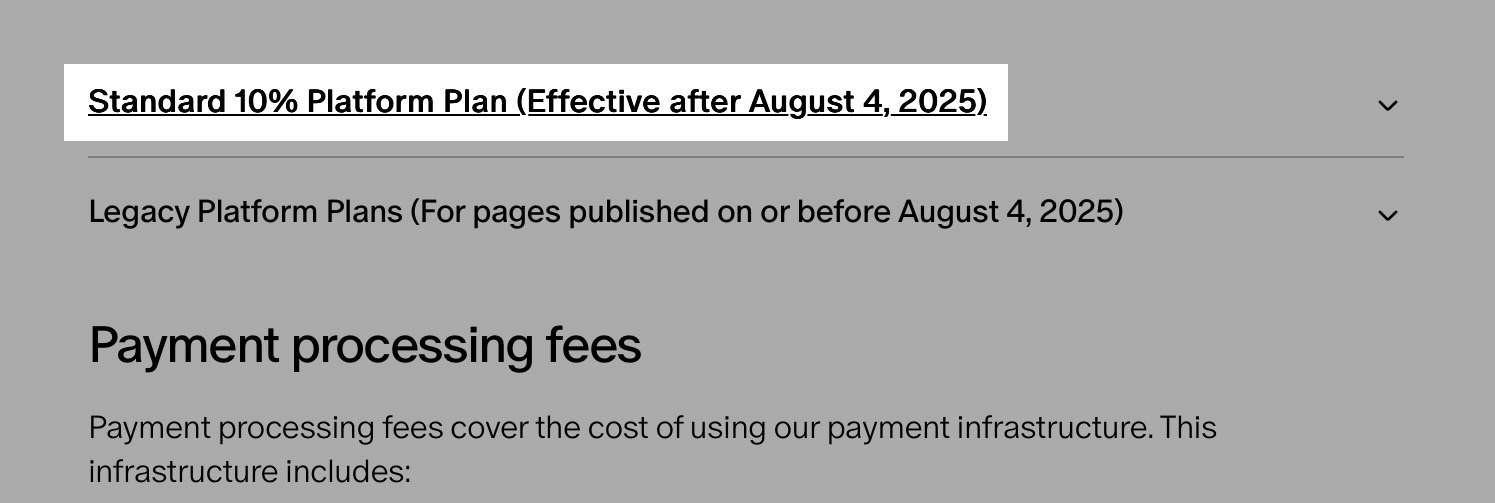
Maybe it’s just me, but that feels unfair, especially when there are better Patreon alternatives out there.
If you’re a creator, you’ve probably heard of Patreon, a platform that helps creators earn recurring income straight from their fans.
It’s known for letting creators sell their work and build communities. But if you’ve used it for a while and are reading this article, you might be thinking it’s time for a switch.
Perhaps using Patreon for one-time sales has not been the best experience since the platform is built around subscriptions. Or maybe the flexibility to brand and package your offerings as a creator does not meet your expectations.
It’s also possible that the 10% fee is a bit on the high end for you, and that’s even before considering payment processing fees.
My colleagues and I searched 20 platforms to sell digital products and compared them to Patreon. We want to find the ones that are truly worth your time.
After weeks of testing, we brought the list down to the six absolute best. They are Easytools, Teachable, Podia, Skool, Memberful, and LearnWorlds.
In this article, I’ll walk you through each of them. Then we’ll discuss four key factors that’ll help you choose the best Patreon alternatives.
Just keep reading.
Best Patreon alternatives compared
6 best Patreon alternatives
1. Easytools
Rating: ⭐⭐⭐⭐ 4.5/5 stars | Starting price: $0 (with 5% transaction fee) | Integrates with: Circle, Discord, Zapier, Web to Learn, Kajabi | Best for: YouTubers, podcasters, influencers, creators, and coaches
The first Patreon alternative on my list is Easytools. It’s an all-in-one platform for selling paywalled content, online courses, coaching programs, and other digital products.
We created it for online creators: podcasters, YouTubers, coaches, agencies, freelancers, influencers, to name a few.

Apart from selling their products, digital creators use it to build websites and landing pages where they add pricing plans, FAQs, forms, disclaimers, social proof, and donations.
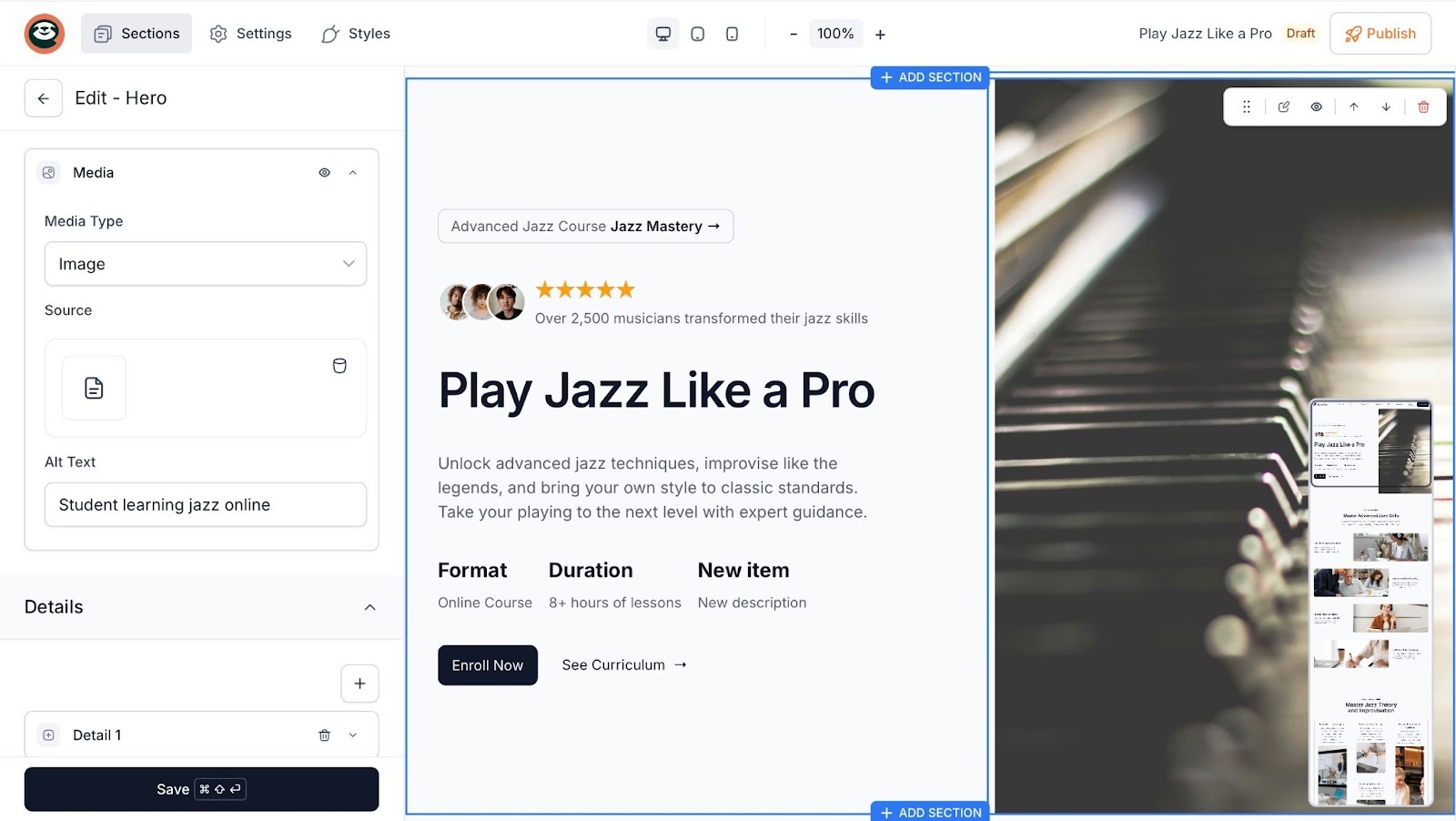
You can also sell online courses and coaching programs. You add the videos you recorded, separate them into modules, and add titles and descriptions.
When someone buys the course, they immediately and automatically gain access to it from the customer portal on Easytools.

We also know that creators love seeing everything in one place. That’s what we’re all about: making things easy for creators.
Here, you create, manage, and price your products: e-books, podcasts, webinars, subscriptions, memberships, and more. For example, you can set the basic membership plan at $100, the middle one at $150, and the top at $250.
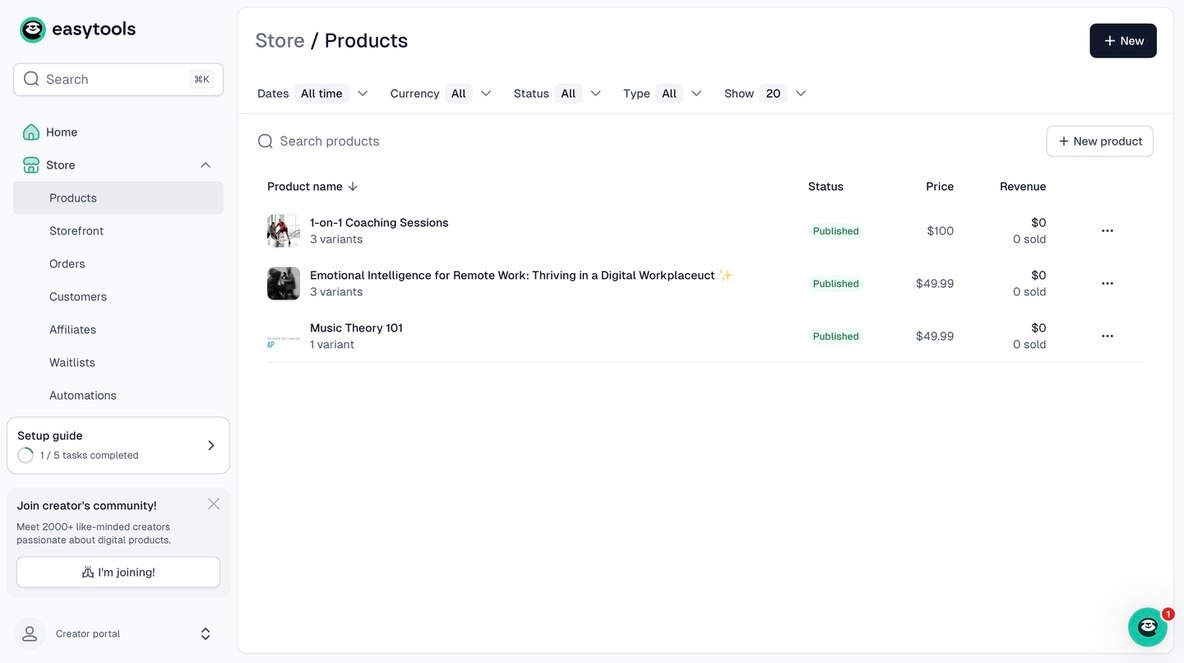
What’s even better is that Easytools integrates with both Circle and Discord. So you can host and manage your members and community participants on these platforms.

To set up and sell memberships or subscriptions with Easycart, all you have to do is select “Subscription” in the “Price type” section.
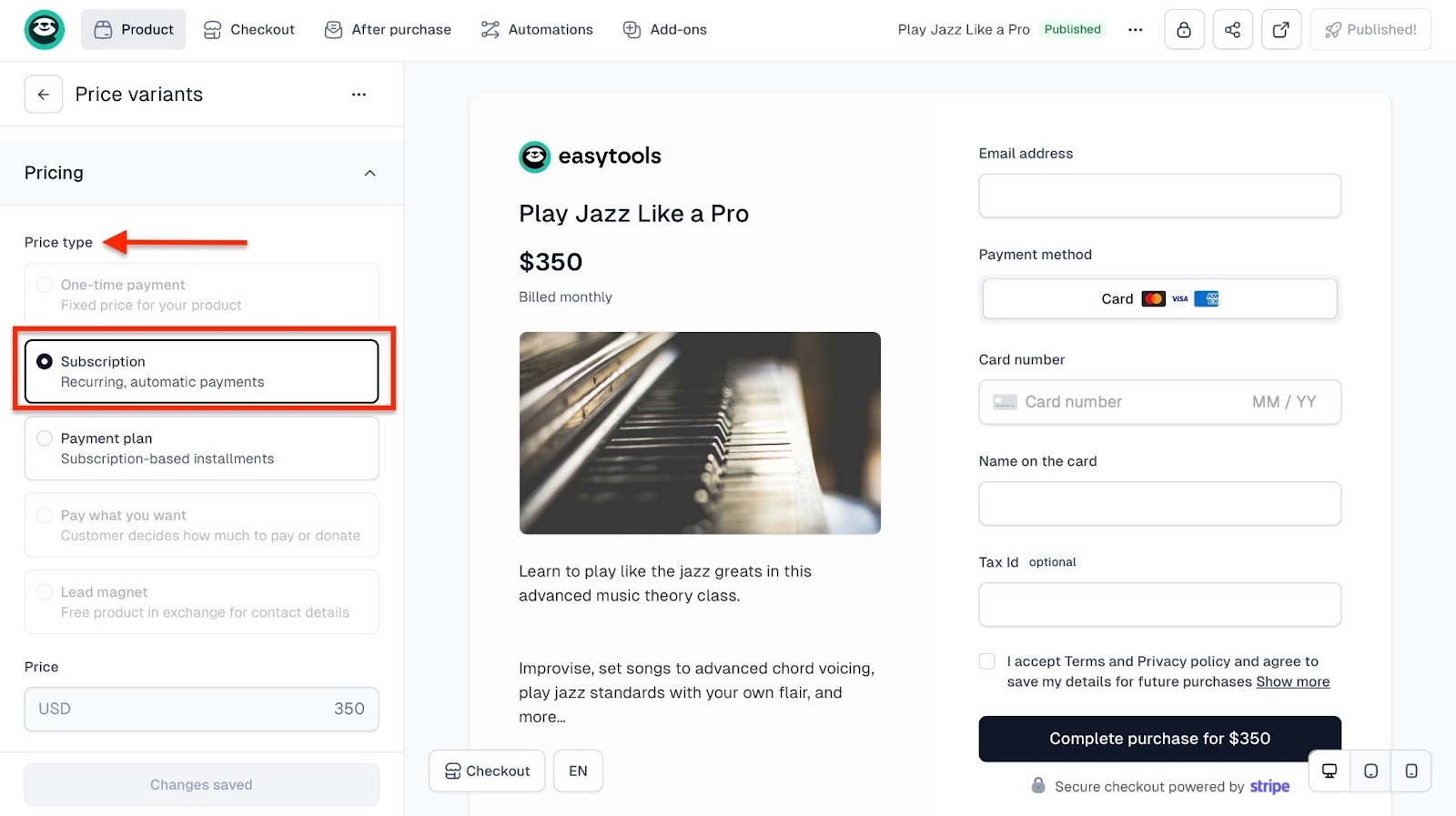
Regarding payments, you can choose “Payment plan,” which means your customers will pay by subscription-based installments.
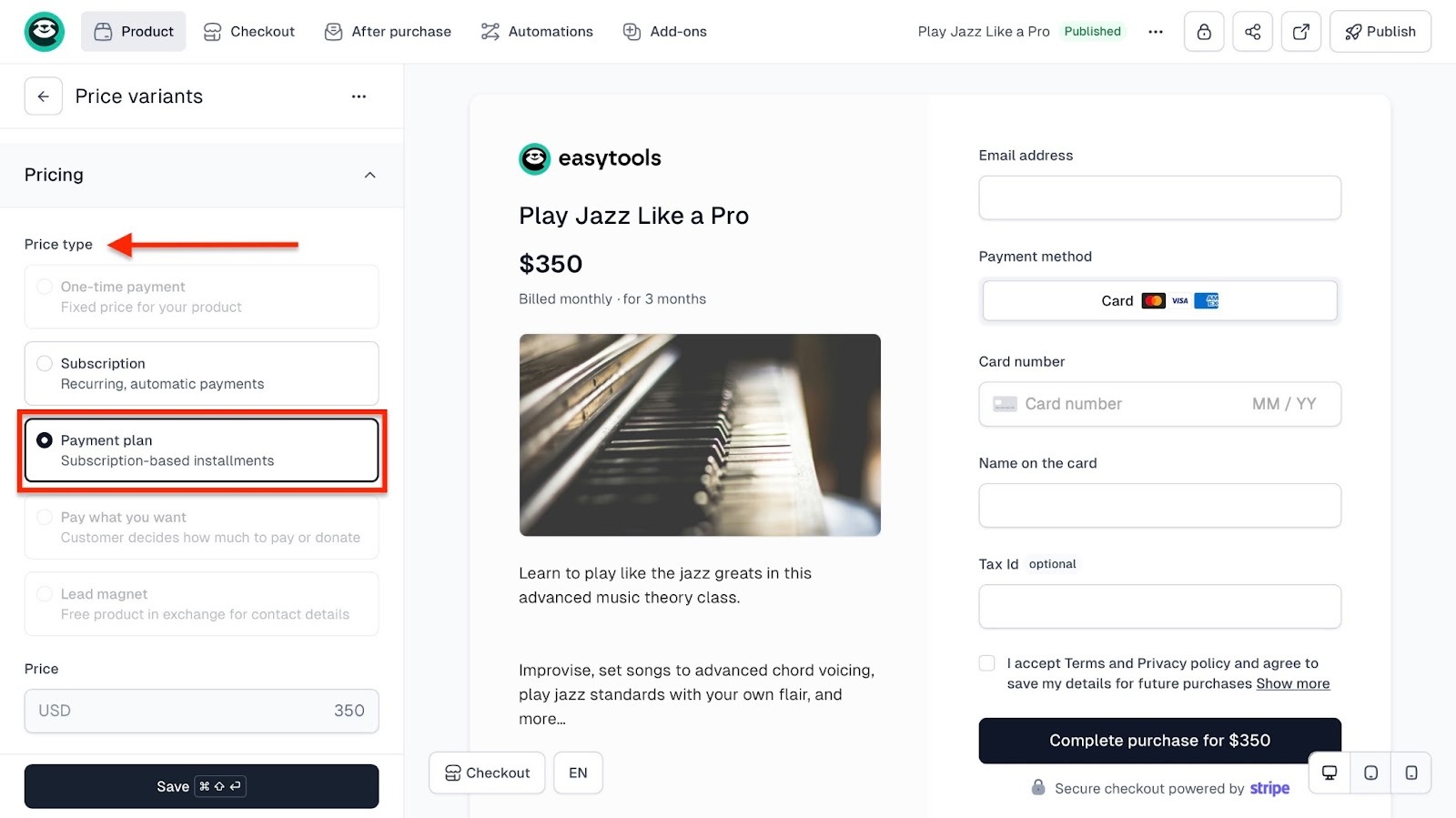
Moreover, our platform allows you to use the price variants feature on Easycart to sell subscriptions and memberships.
For example, let’s say you create an online Jazz piano membership program. You can set up price variants to offer students who are willing to pay a higher tier to become members in your Discord or Circle community.
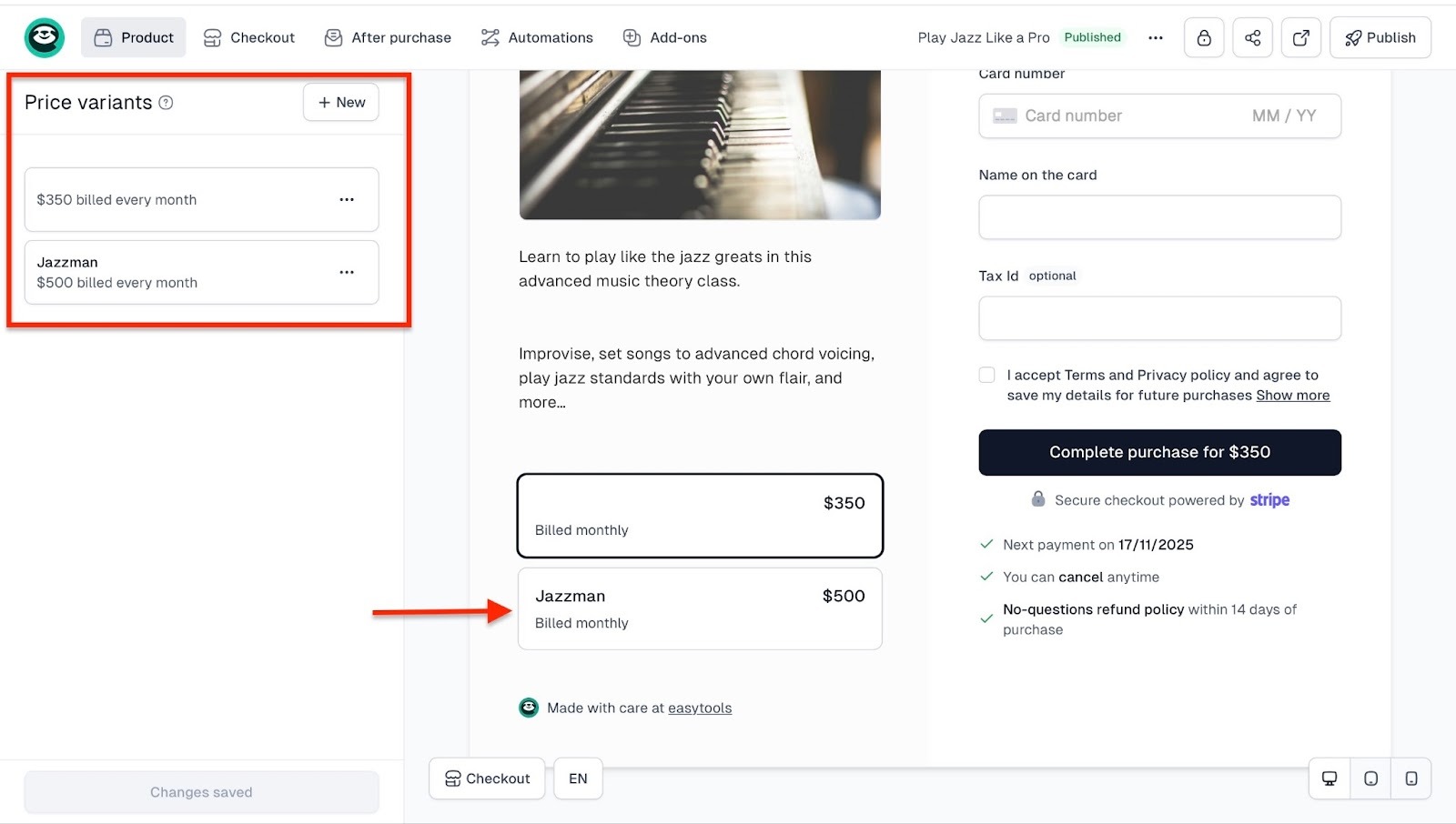
Last, but certainly not least, you'll love the analytics interface. You track revenue, sales, transactions, and sessions. Plus, monitor lead conversions, automation runs, customers, and more.
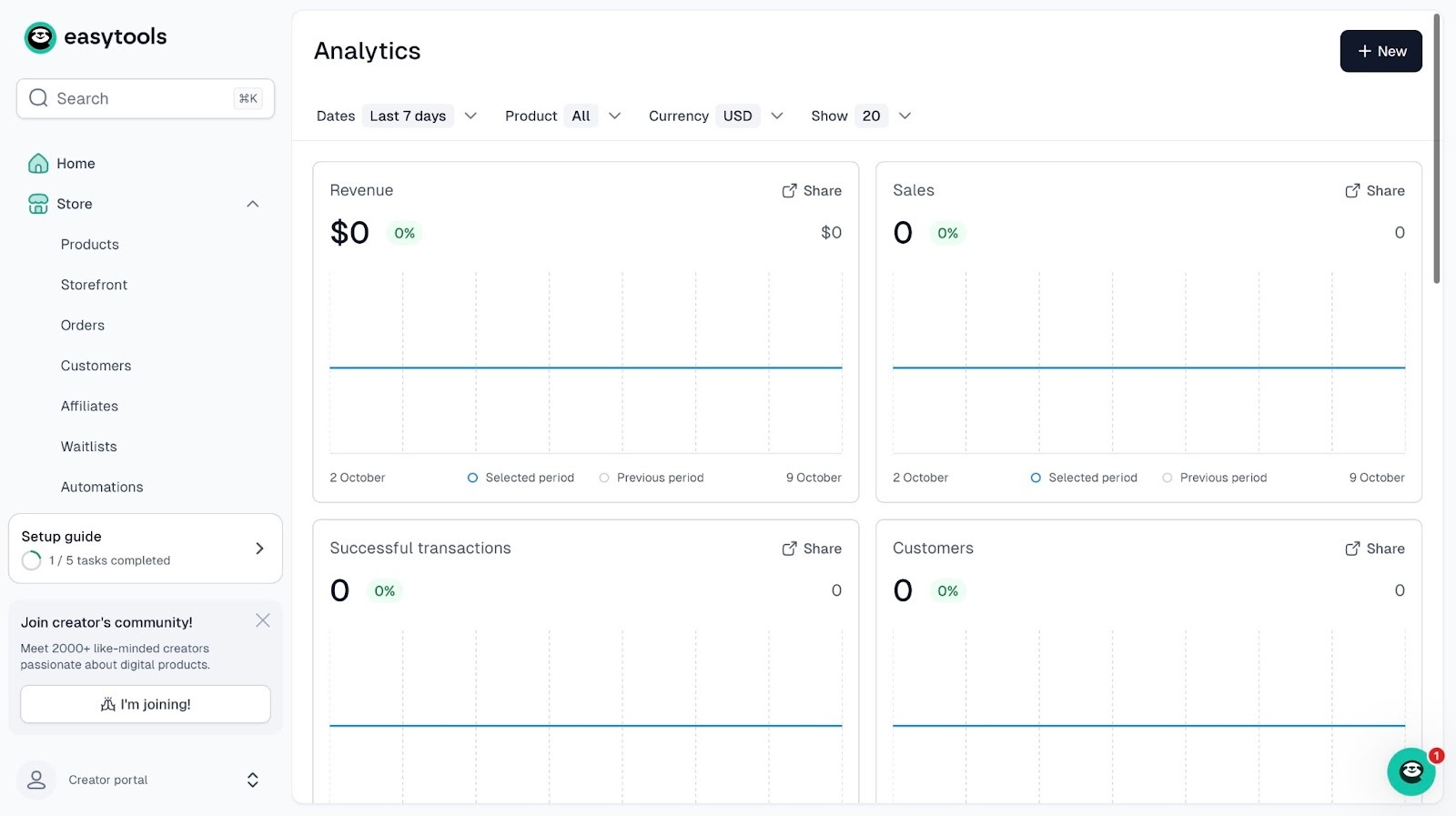
We didn't create Easytools to be the best alternative to Patreon. We made it to be the best tool for online creators who want to make passive income.
And we love it when our product helps creators like Paulina and Aga make more than $240k selling an online course.
Let me show you how to create your first subscription-based digital product on Easytools.
You can watch the video below if you prefer video tutorials.
First, select “Store” in the sidebar. And click “Products” in the drop-down menu.
After that, click “+ New Product” in the right corner of the window.
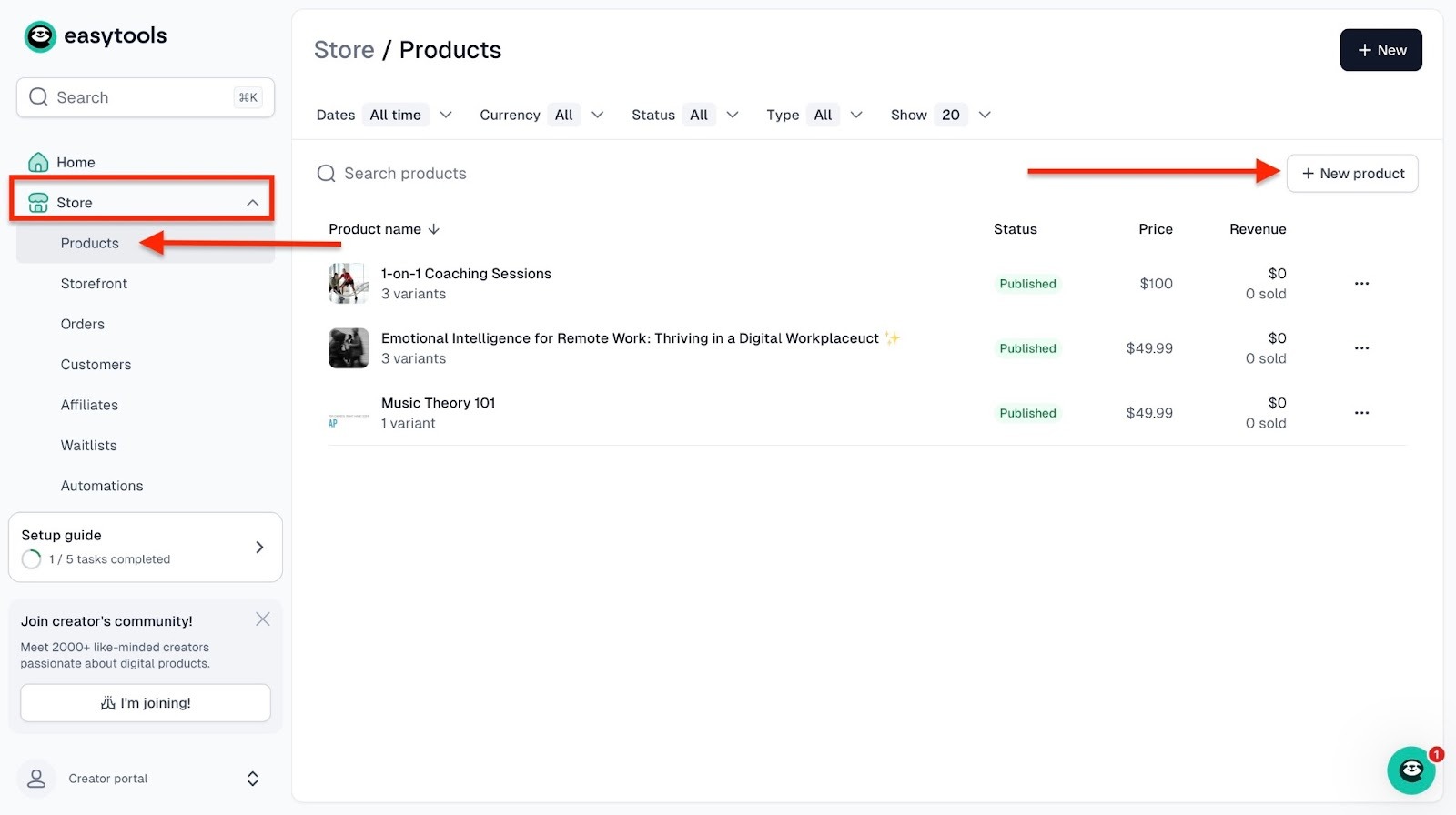
In the new window, you will see a preview of the checkout page (Easycart) that you’re about to create. The left sidebar is scrollable, so you can add more details.
Now, enter the product name and description.
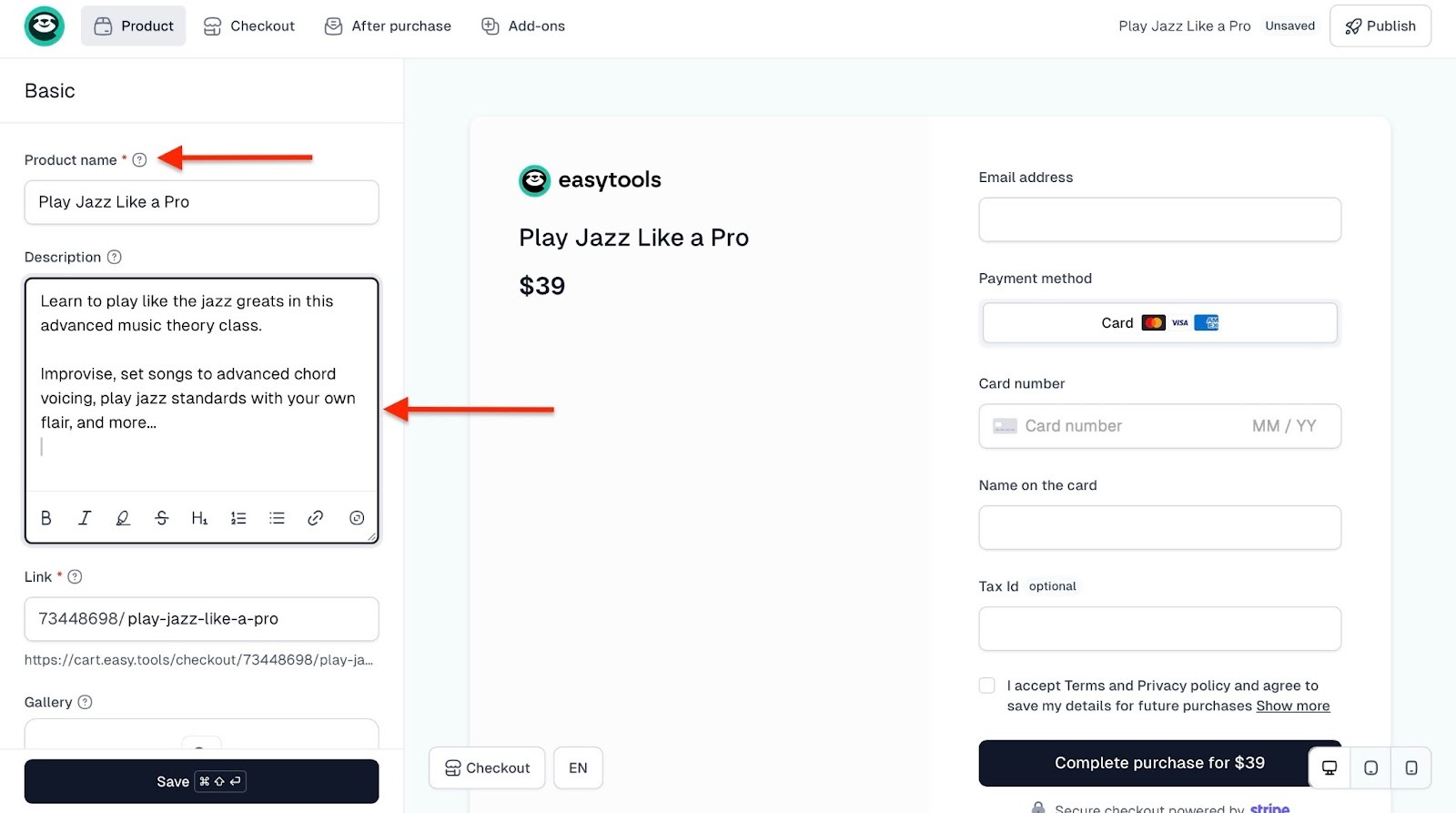
Then, scroll down and click the upload area to add an image from your computer. The image file format should be PNG, JPG, or GIF.
You can also add an MP4 video file.
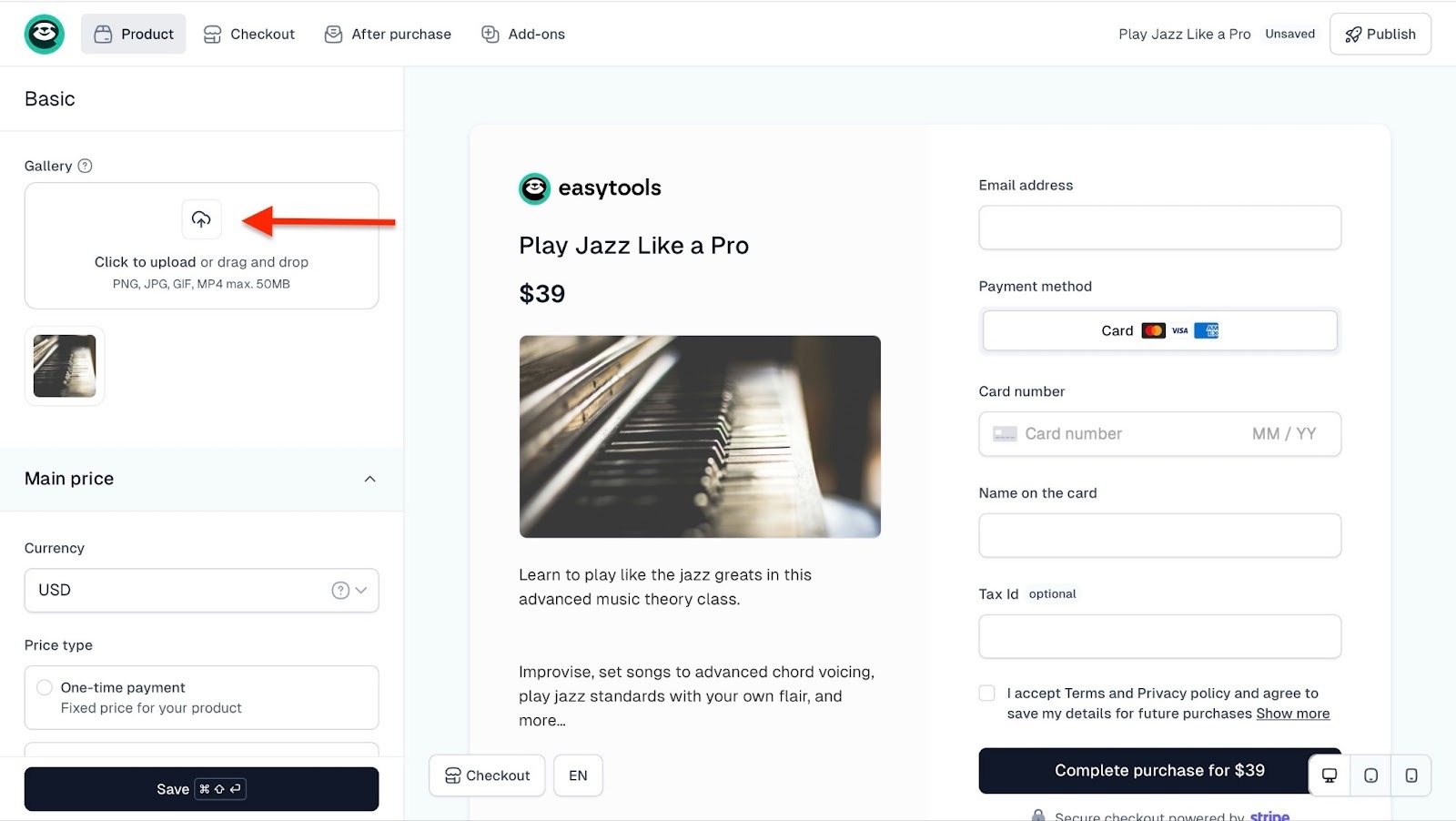
Once you've done that, scroll further down and select your preferred currency. I will choose USD.
From here, select the price type. Let's choose “Subscription.” Then, add the price.
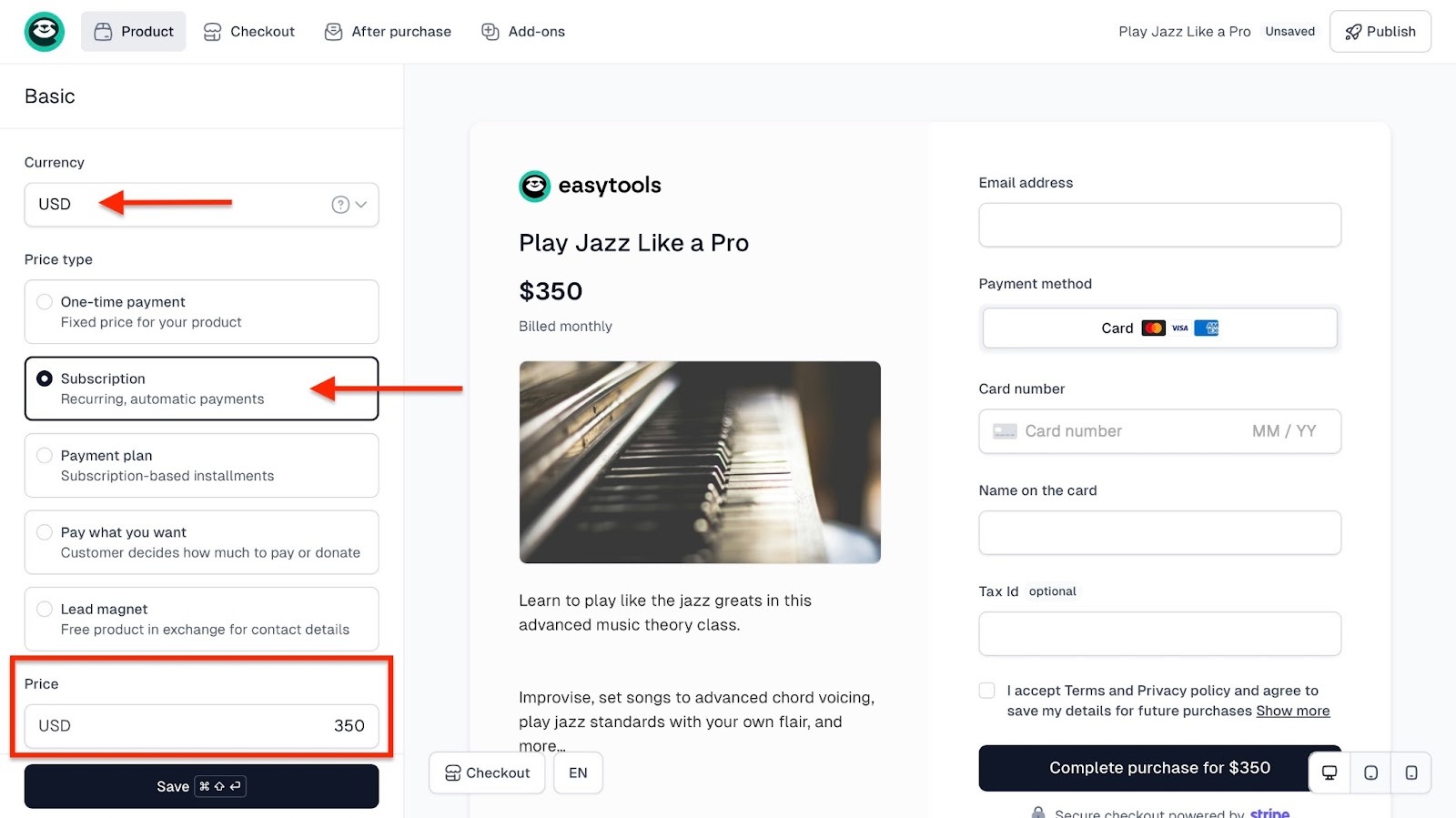
It's all slowly coming together.
Let’s continue by hitting the “General tax category” box and picking a preferred option. Now, add a billing period and a renewal frequency.
Let's stick with “1” so the subscription is renewed every month.
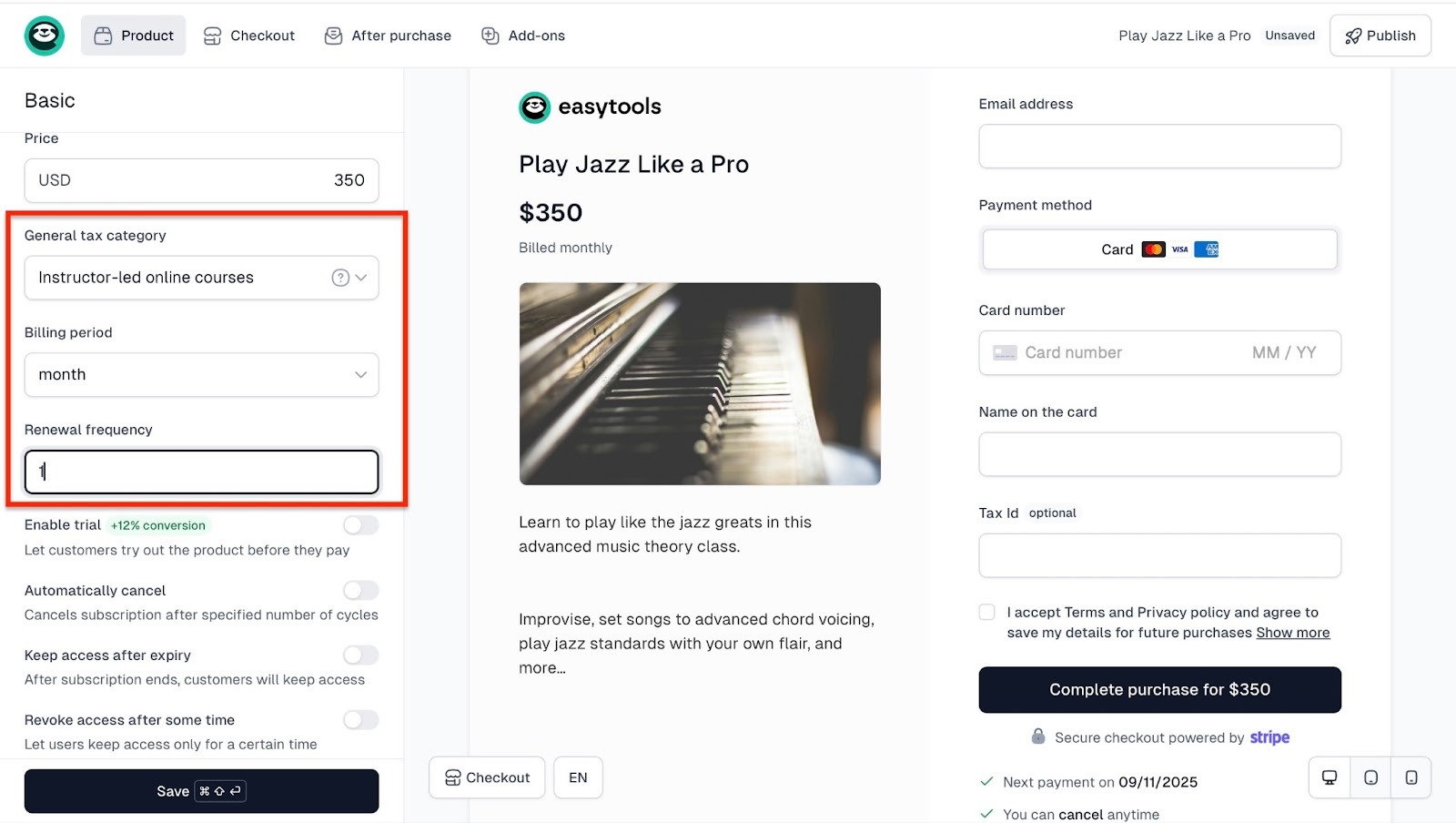
We built Easytools with attention to detail. So, toggle the switch in the section below “Renewal frequency” to add what will help your product.
For example, you can enable trial, upsell, cross price, and more.
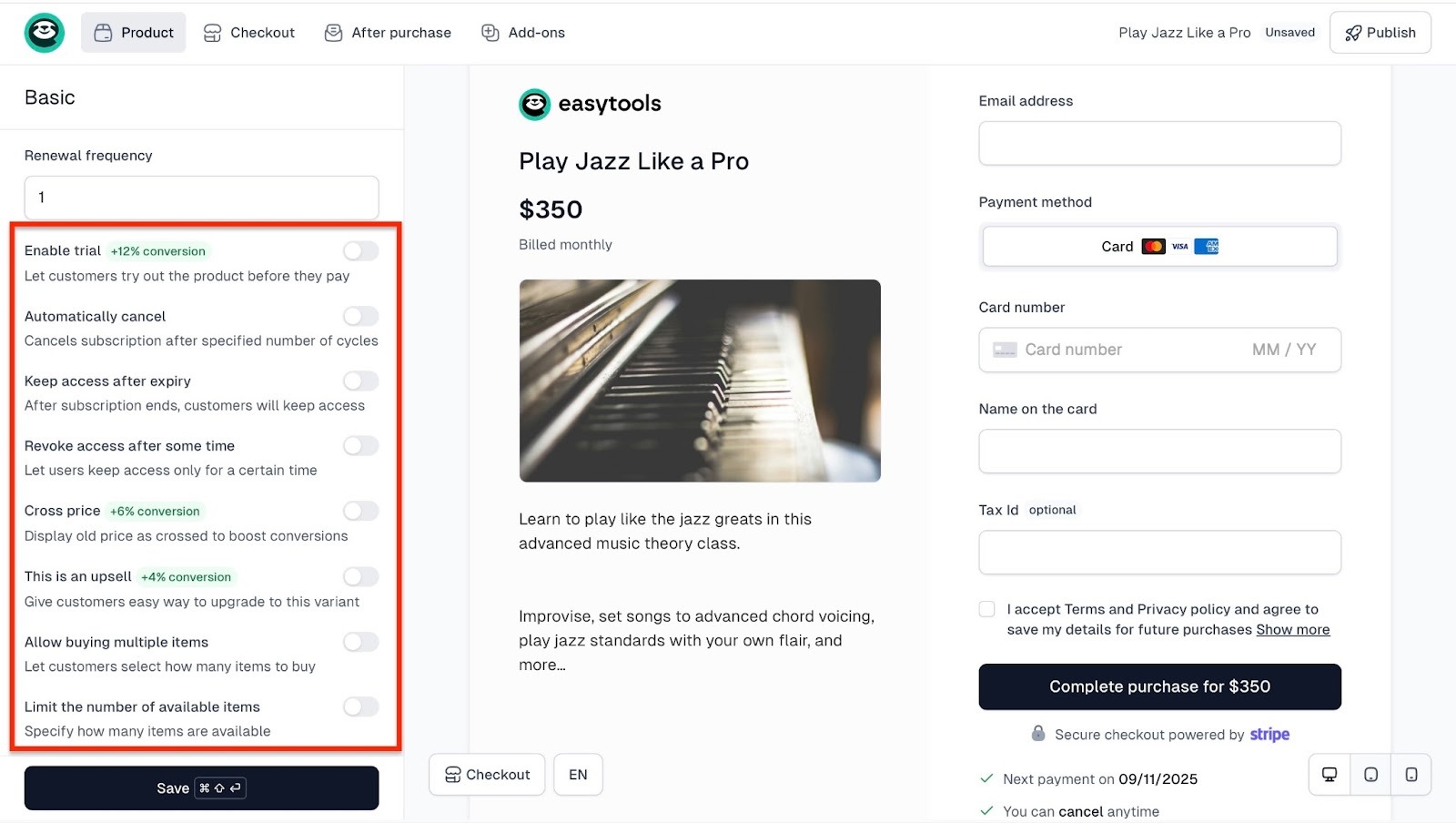
Since the product is subscription-based, you may add price variants.
In our case, we could add a price variant that allows our customers to have a weekly 1-on-1 music lesson.
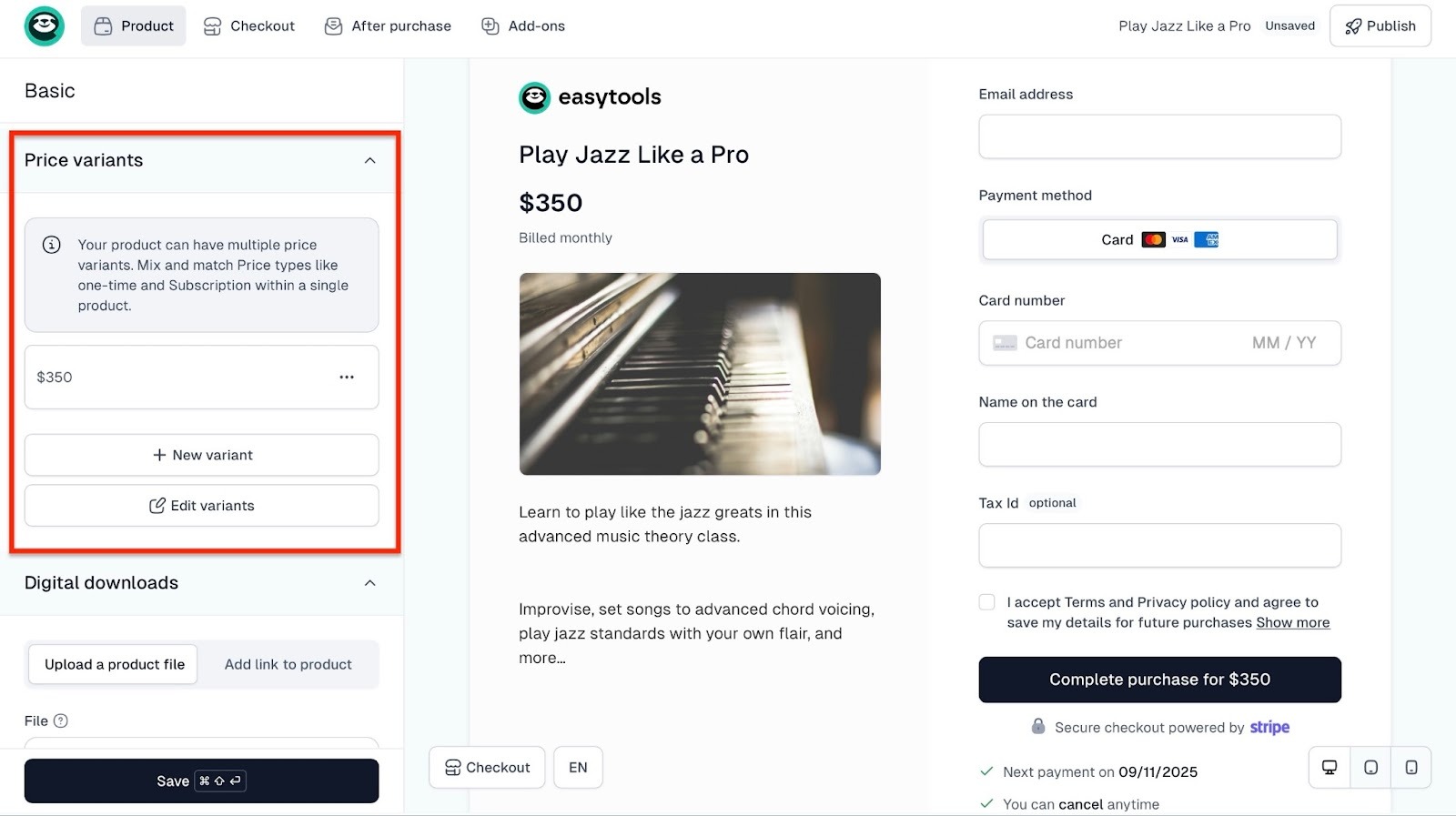
But let's stick to just the basic pricing.
Now, continue by clicking on the upload area to add a file of your digital product. You can also add the product’s URL link.
After that, click “Save” at the bottom of the window. Then hit “Publish” at the top right corner to finish.
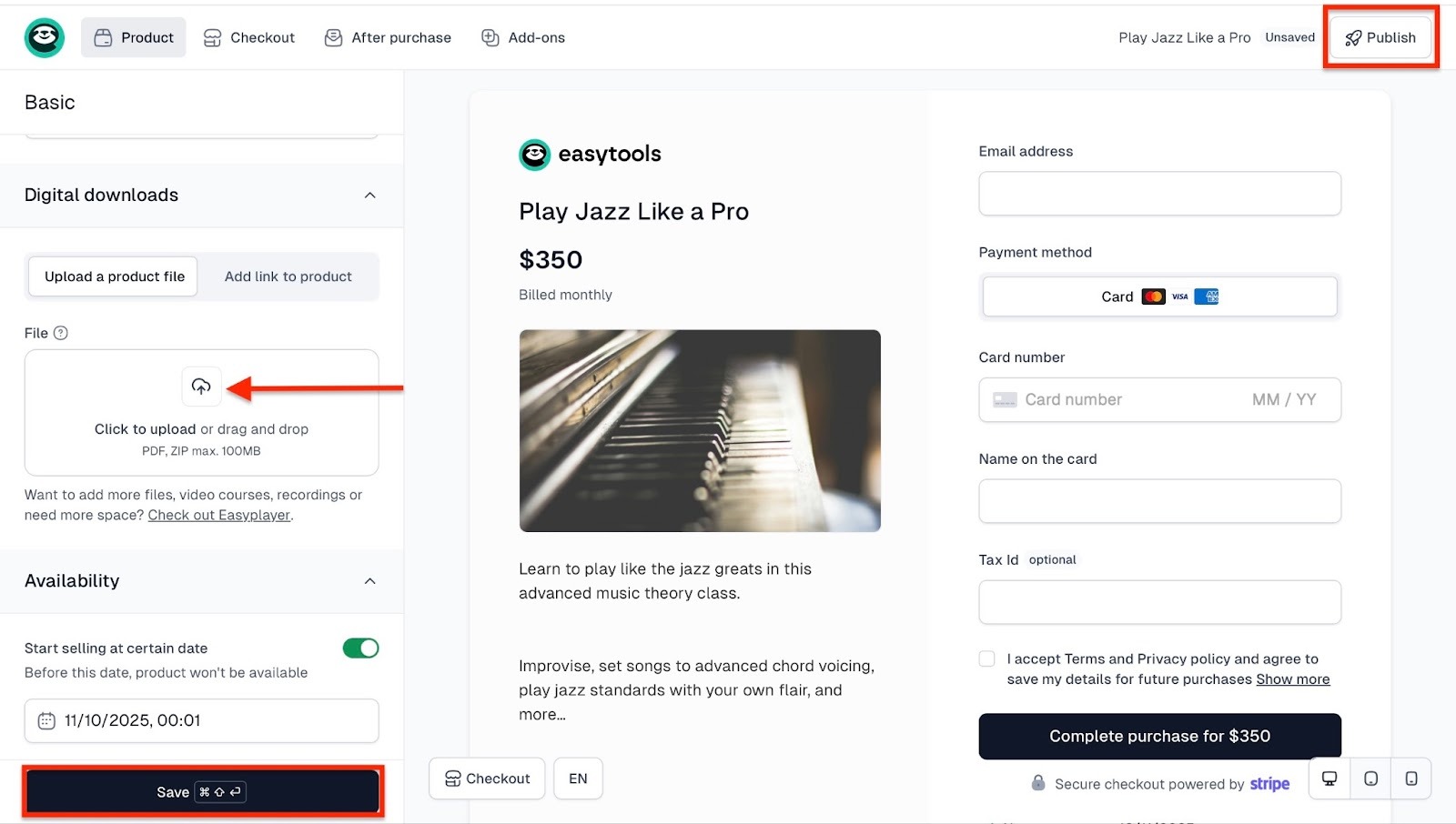
Clicking the preview icon will show what your live page looks like.

Your product is now live on Easytools.
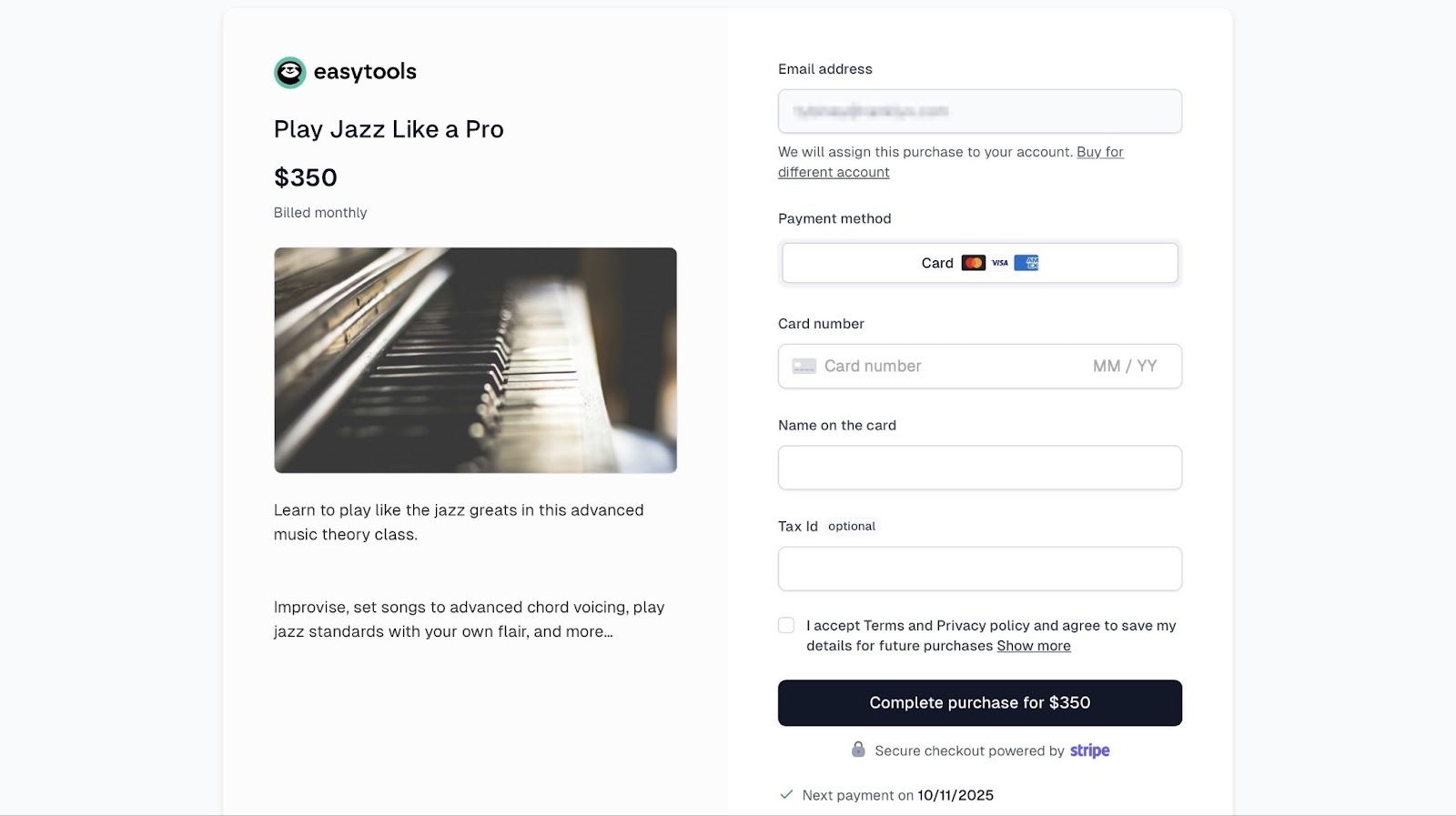
[fs-toc-omit]Features I loved
1. Courses and other paywalled content
Like I said earlier, you can sell online courses using Easytools. When someone buys your paywalled course, they automatically get access.
Let’s add a course in a few simple steps. The steps I will show below are the same for other paywalled content. For instance, follow them to create a dashboard where people who support your YouTube channel can watch videos earlier or behind-the-scenes videos.
Start by selecting “Courses” in the sidebar. Then move to the center of the window and click “+ New course.”
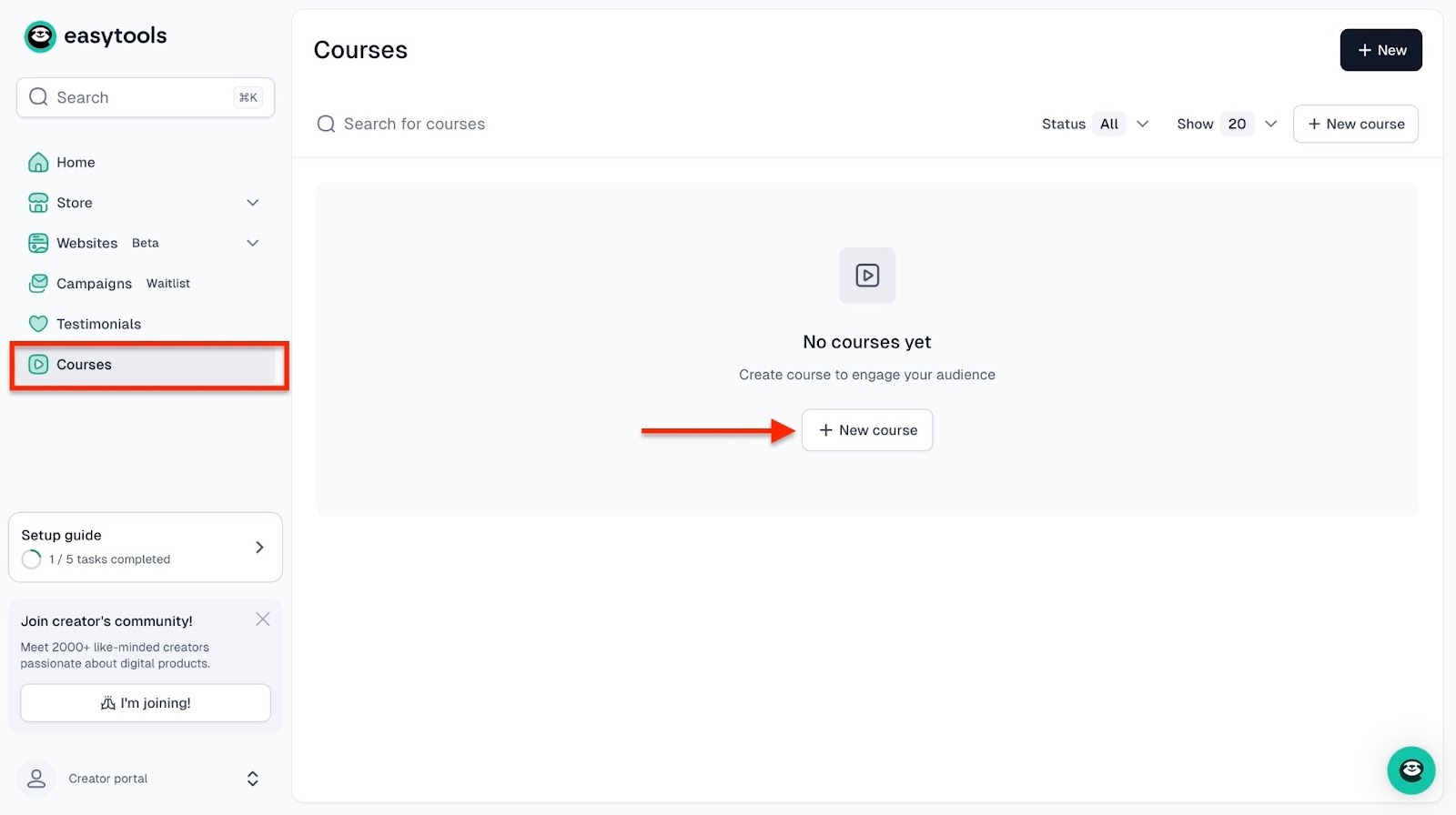
In the pop-up window, enter the project name and click “Create.”
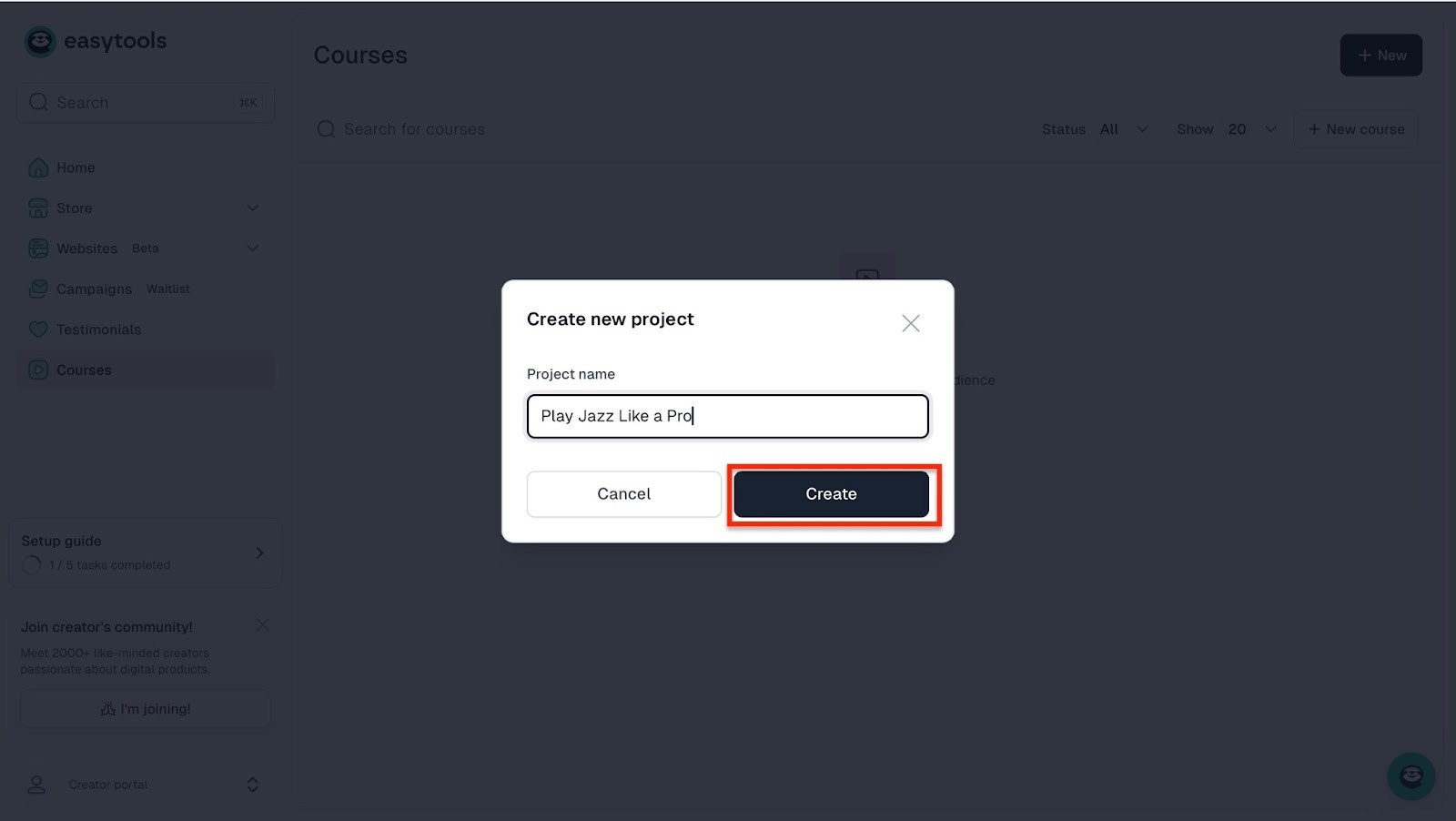
In the new window, you'll see that “Easycart Product” is automatically selected.
Let's move down and pair it up with the digital product we created before: Play Jazz Like a Pro.
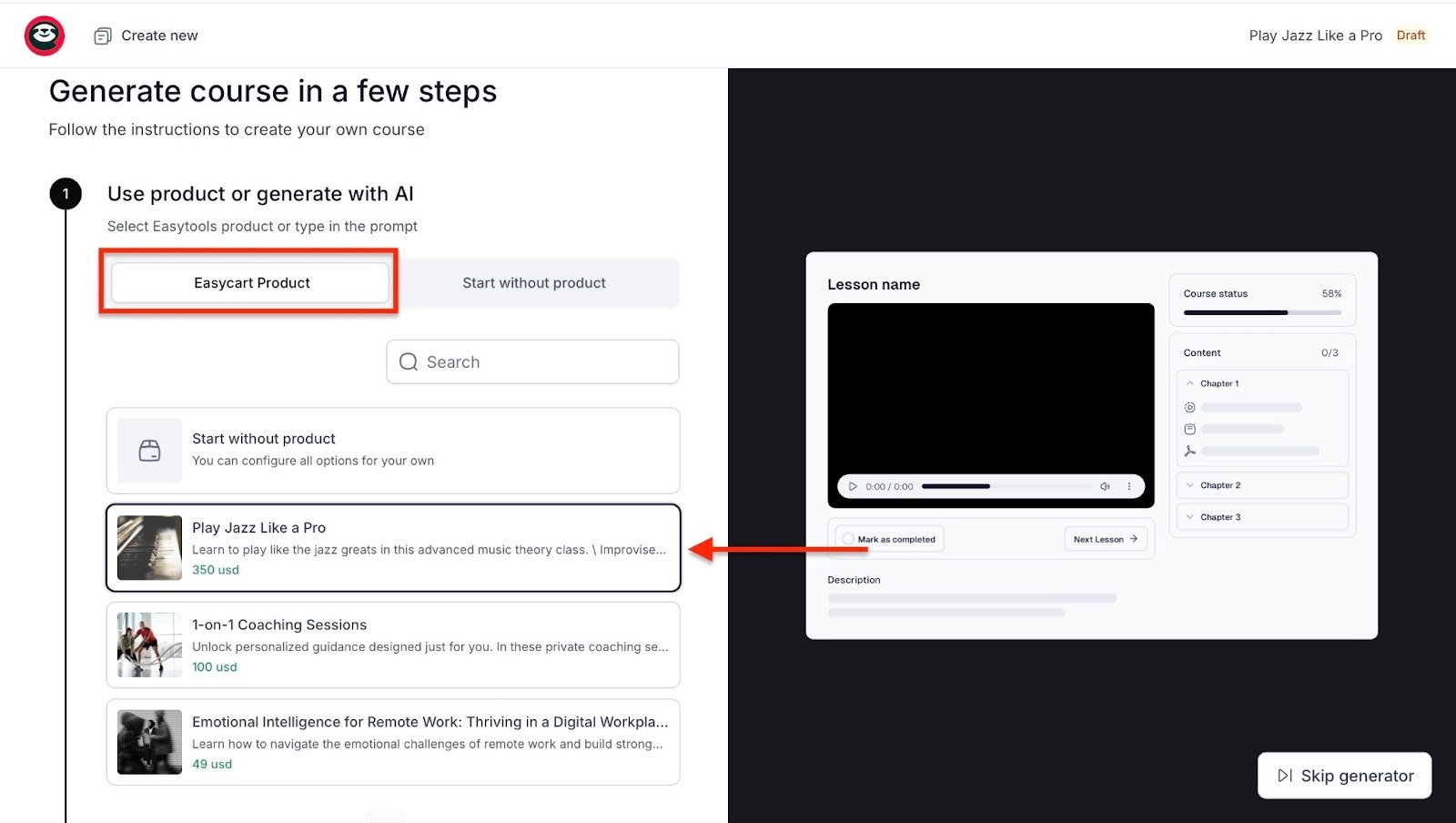
Then, scroll down to choose a color palette and click “Generate.” Our AI tool will speed up the process for you.

Now, select each of the tabs (Files, Layout, and more) at the top left side. Add files, edits, and more customization options.
Once you've done that, save the changes and hit the “Publish” button in the top right corner of the window.
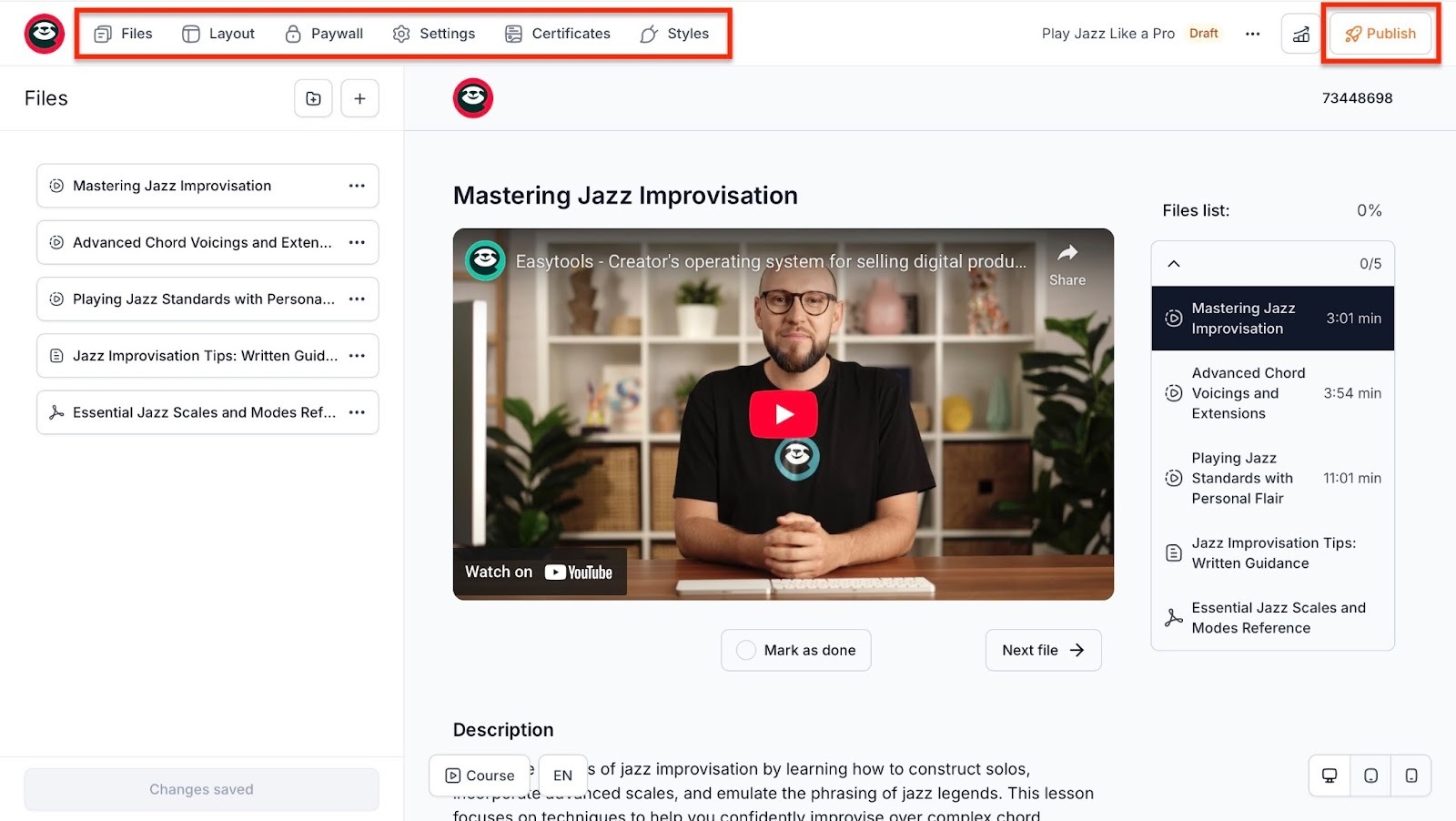
And voila, your paywalled content is live.
2. Analytics
As I said earlier, with Easy’s analytics feature, you can track your digital sales and how much your customers spend. That information will help you decide what is working and what isn’t. Let me just show you more about this feature.
Click on “Store” in the sidebar. Then select “Analytics” in the drop-down menu.
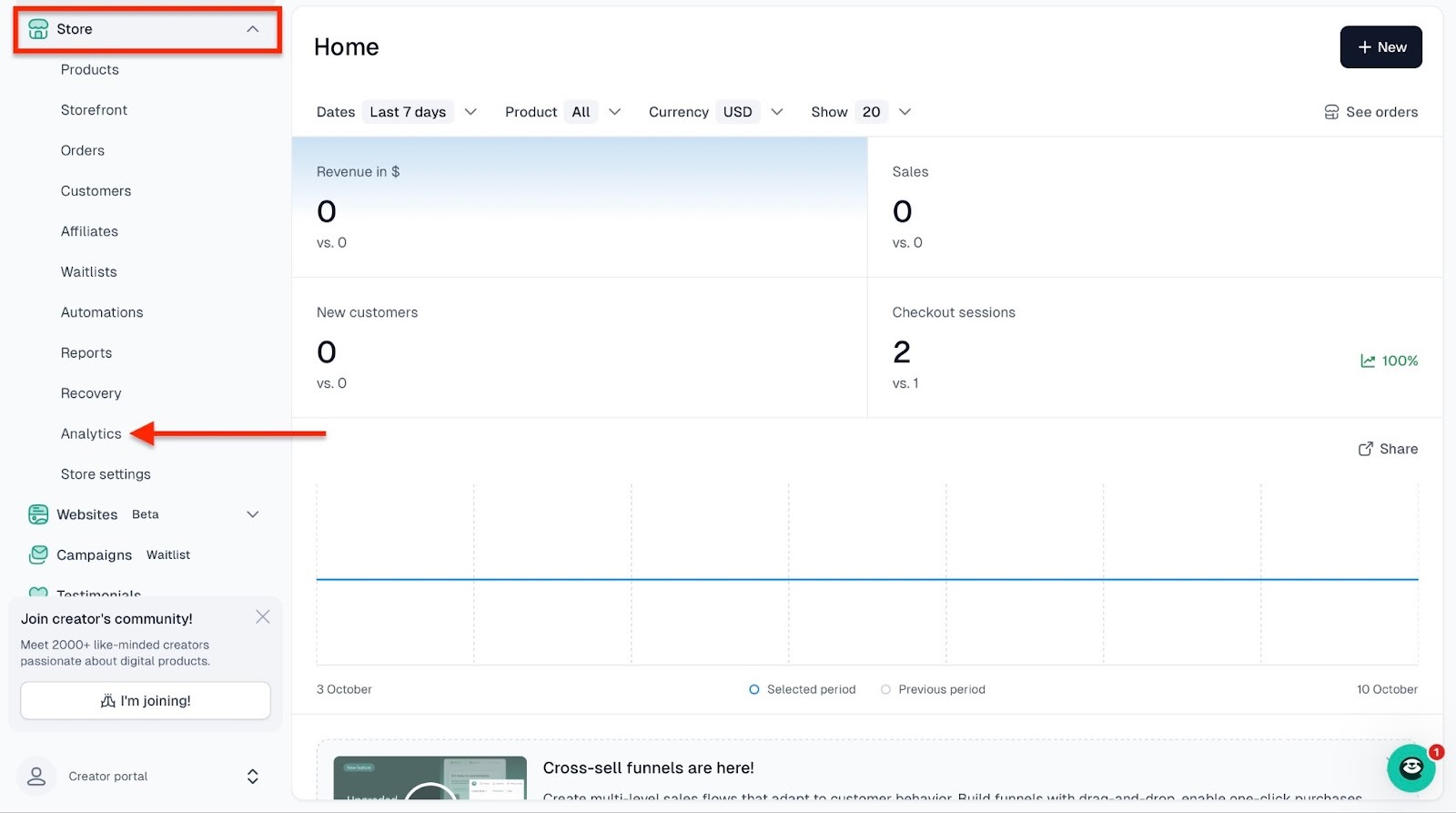
In the new window, you can track and view revenue, sales, checkout sessions, and more.
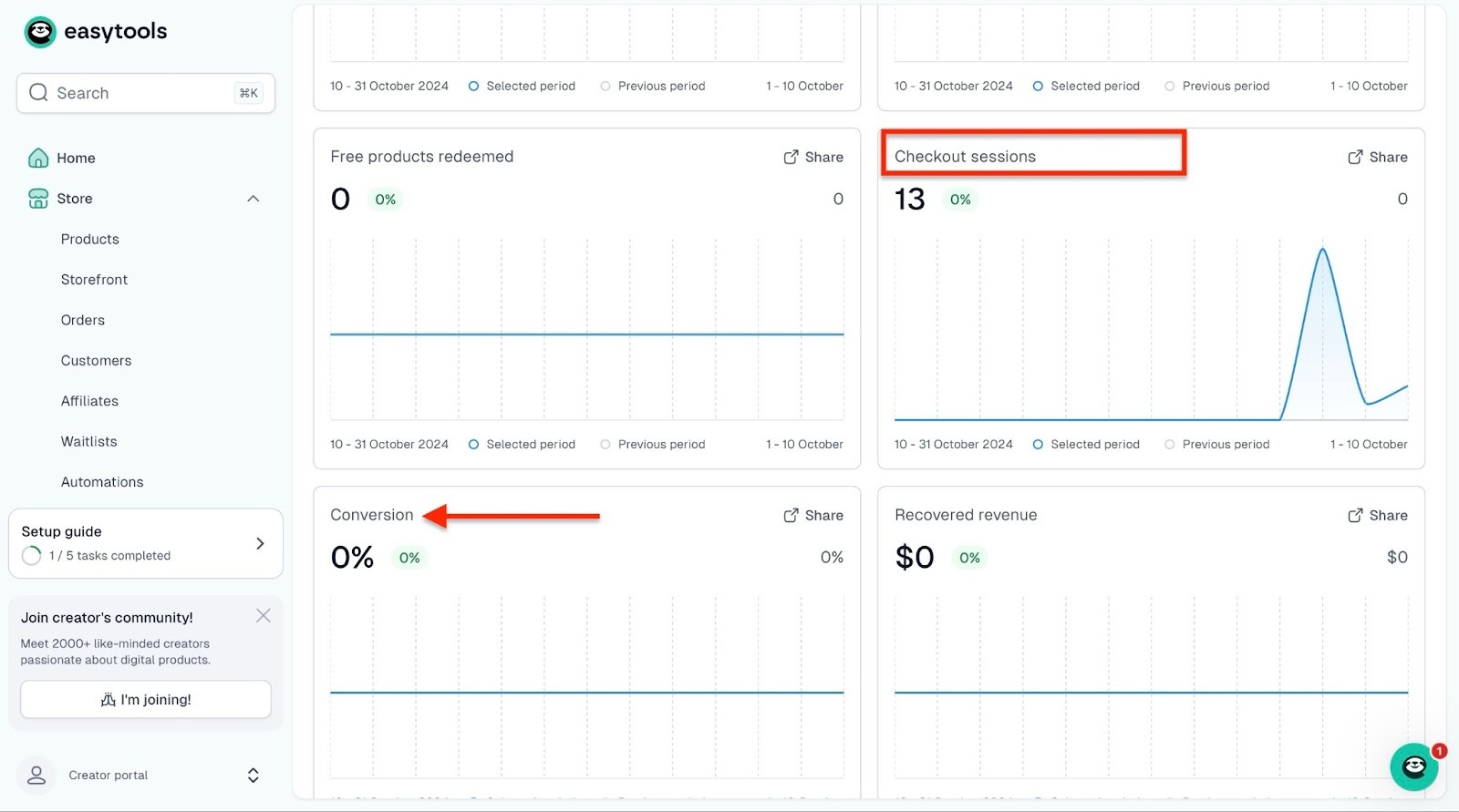
Select the “Dates” tab to view the metrics for a particular period. View the data for all time, a week, a fortnight, a month, a quarter, or a year.
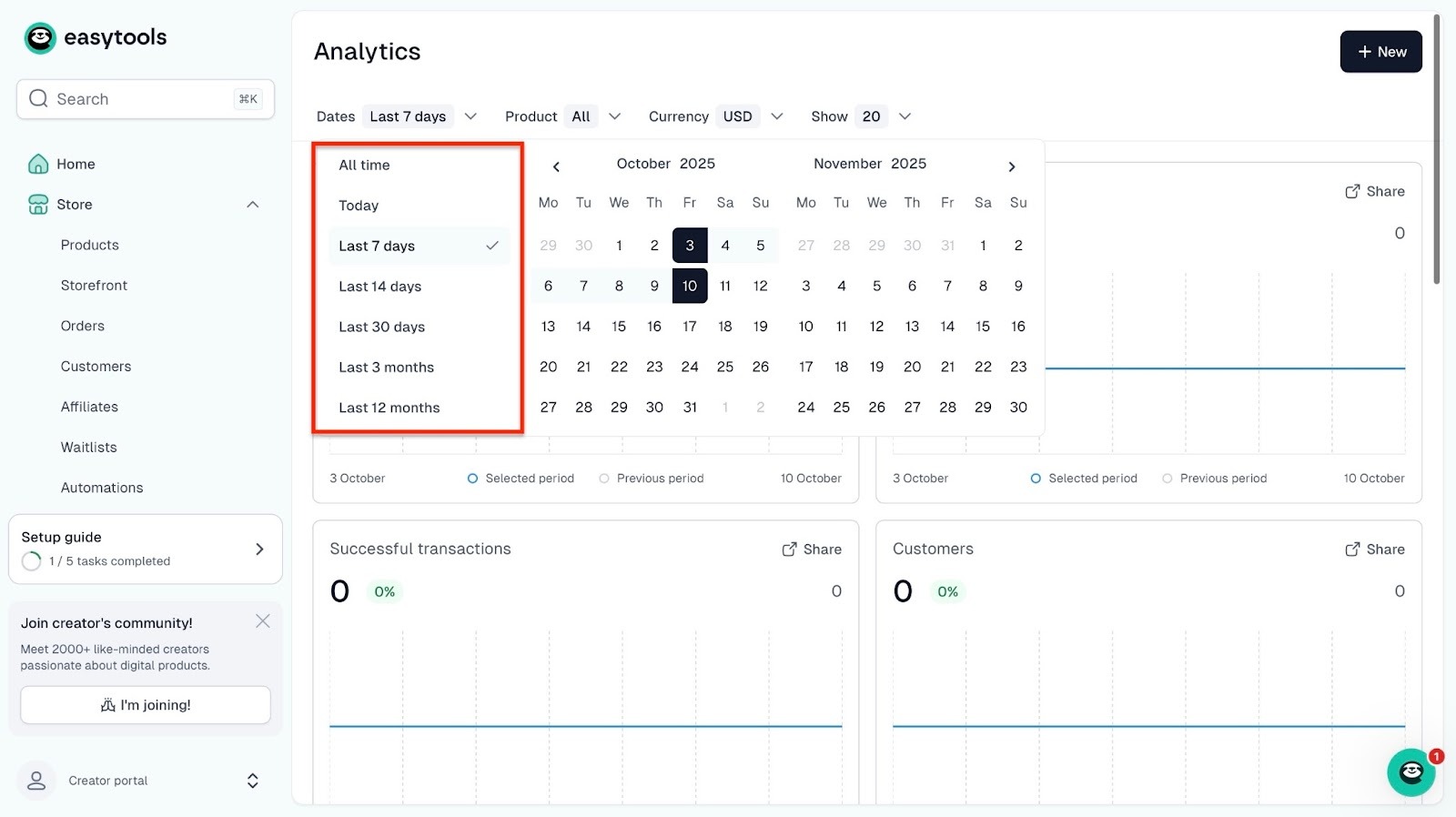
In the same window, click the “Product” tab to see the analytics for all your products or specific ones.
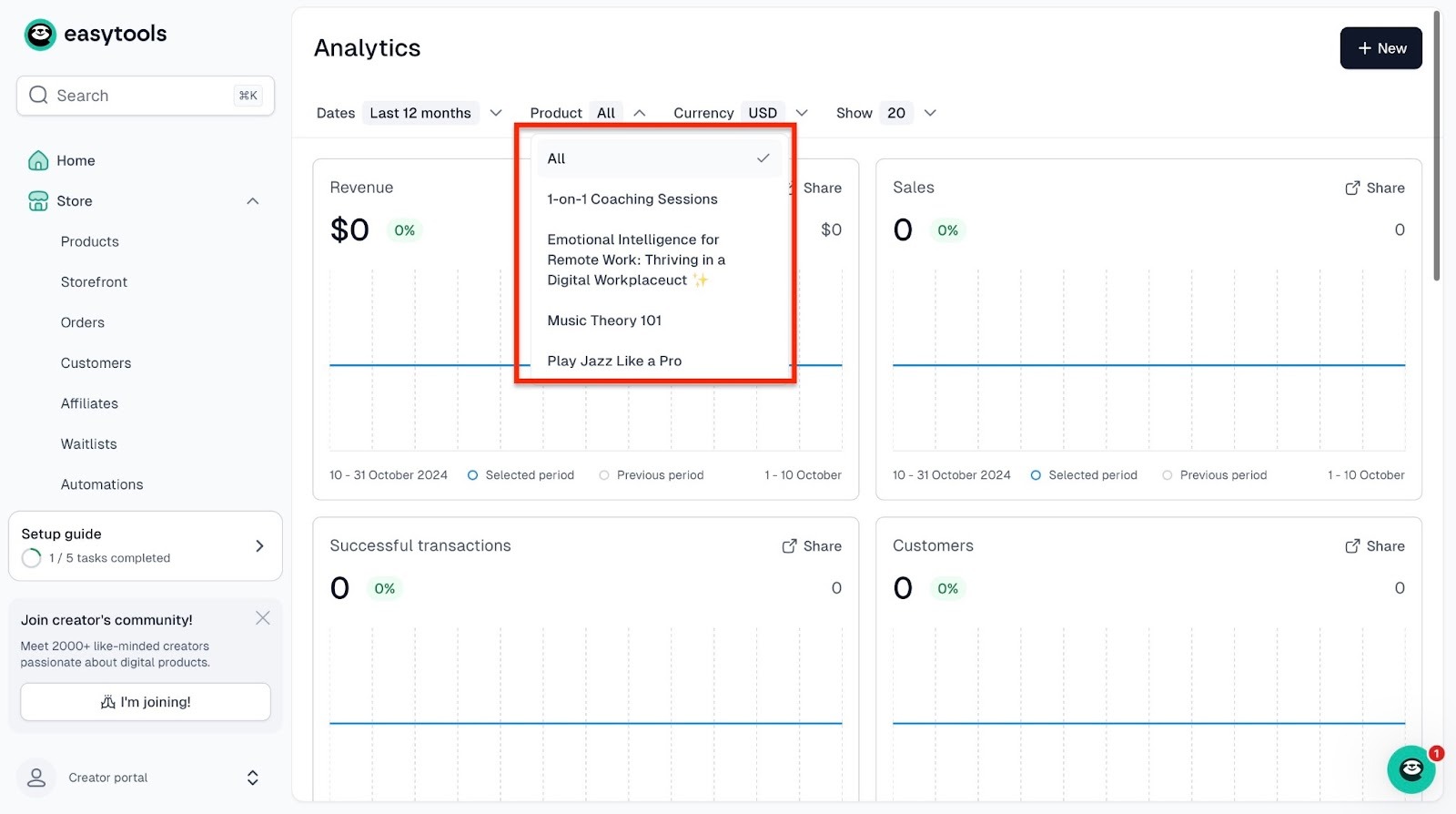
[fs-toc-omit]Best for
- Easytools is best for creators and influencers looking to sell memberships, subscriptions, online courses, e-books, coaching, and certificate programs.
[fs-toc-omit]Pricing
- Starter: $0/month
- Creator: $59/month
- Professional: $99/month
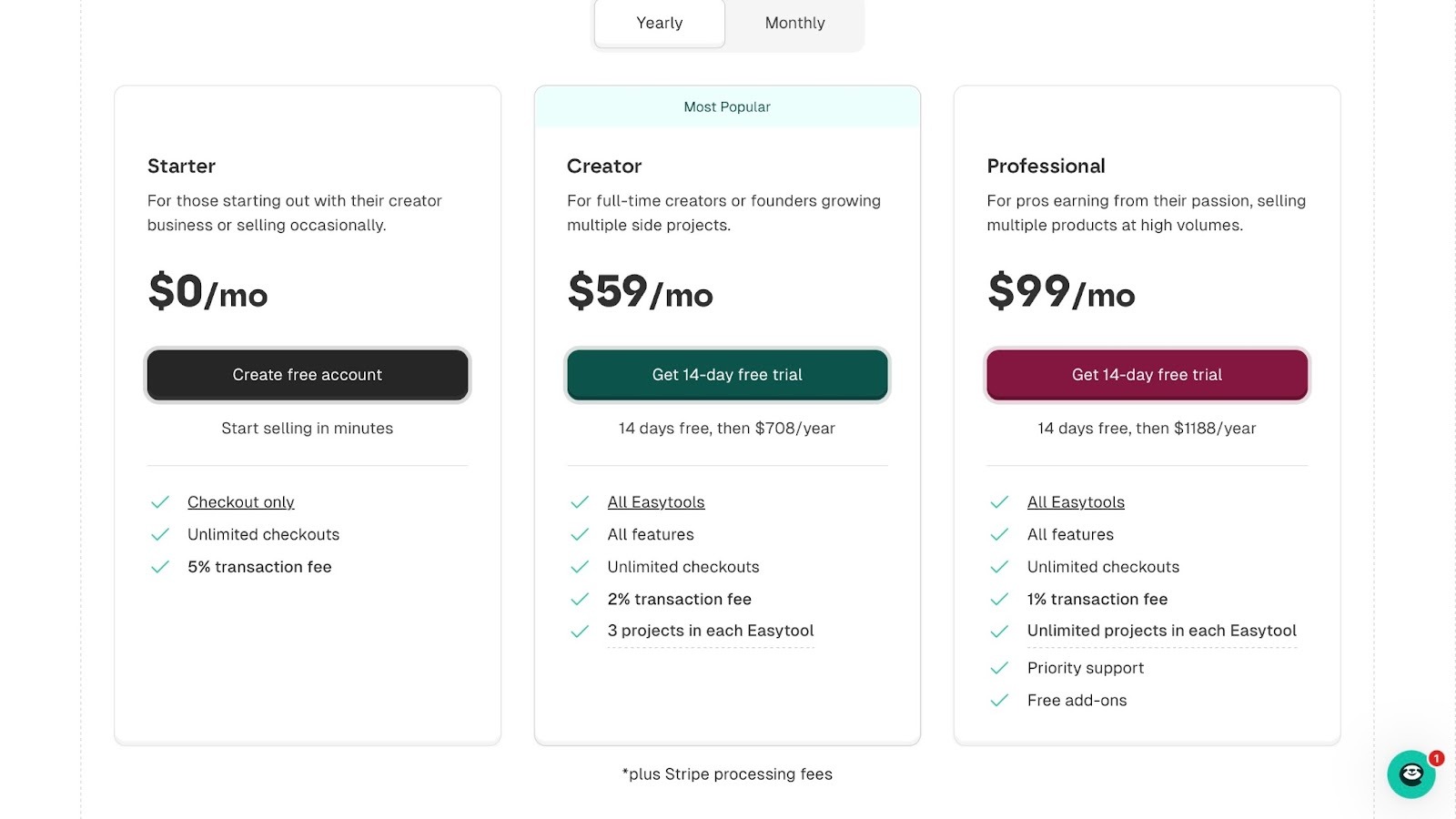
2. Teachable
Rating: ⭐⭐⭐⭐ 4/5 stars | Starting price: $29 (with 7.5% transaction fee) | Integrates with: WordPress, Zoom, Linktree | Best for: Course creators and tutors
Our next best Patreon alternative is Teachable. I added it to my list because it offers more than community features. It comes with course features, coaching, digital downloads, and memberships as well.

I also created coaching services on the platform by naming them and uploading a thumbnail. I even chose the author and added their profile picture and biography.

It's a platform well known for course creation as well. I simply add a course title, describe my course, and set my price.
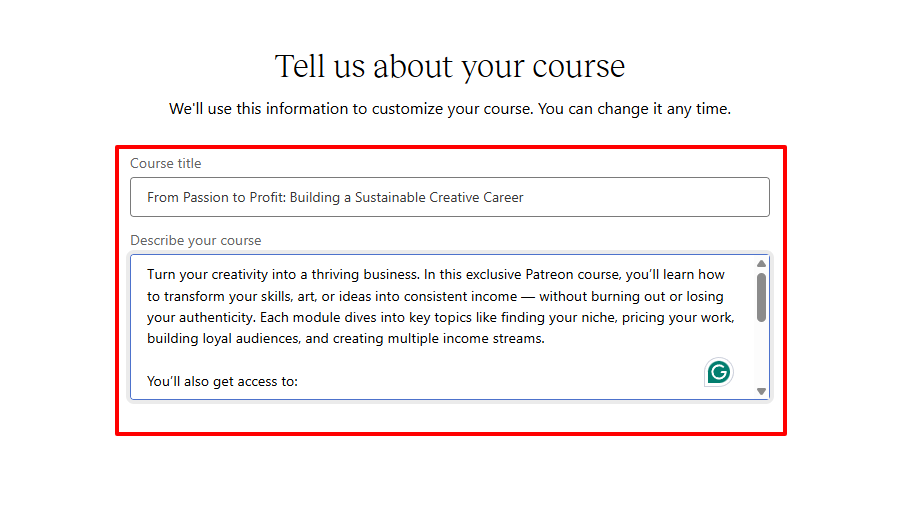
But the Membership got my attention. Users make a tier for exclusive members and name it. Then, they create a section where they add all the products they want.
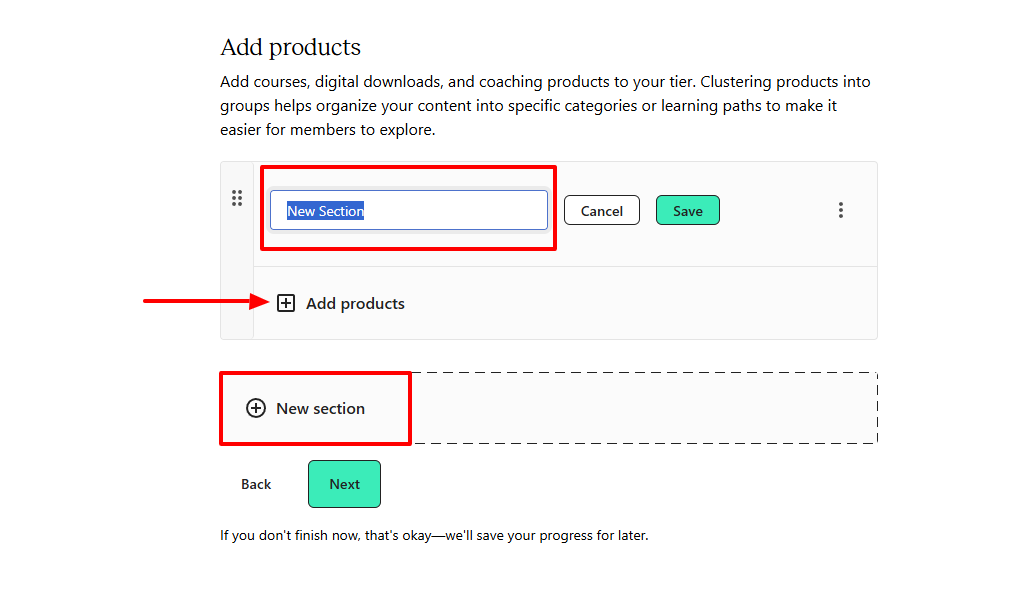
There are many reasons why creators are looking for Patreon alternatives. One of them is creating a private course for their members.
I will use the Course feature to see how it works.

I started with the course title and added a description.

I then added a thumbnail that draws attention.
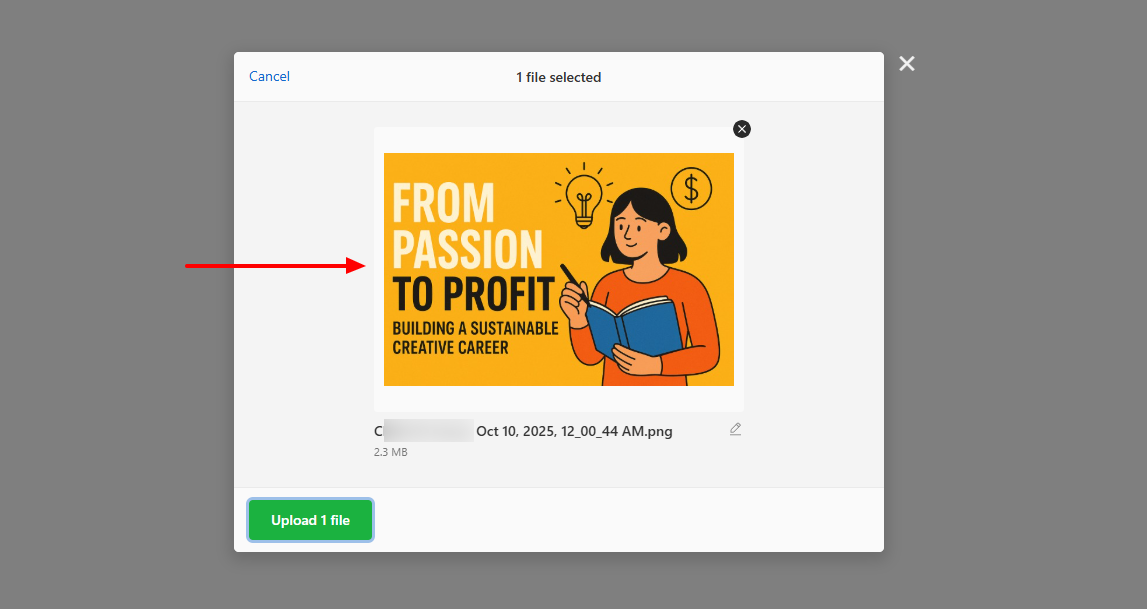
For the price, there were many options: one-time purchase, payment plan, subscription, and free. I selected ‘Payment plan”.
This means buyers can pay in installments.

I’ll enter my price and specify the number of monthly payments.
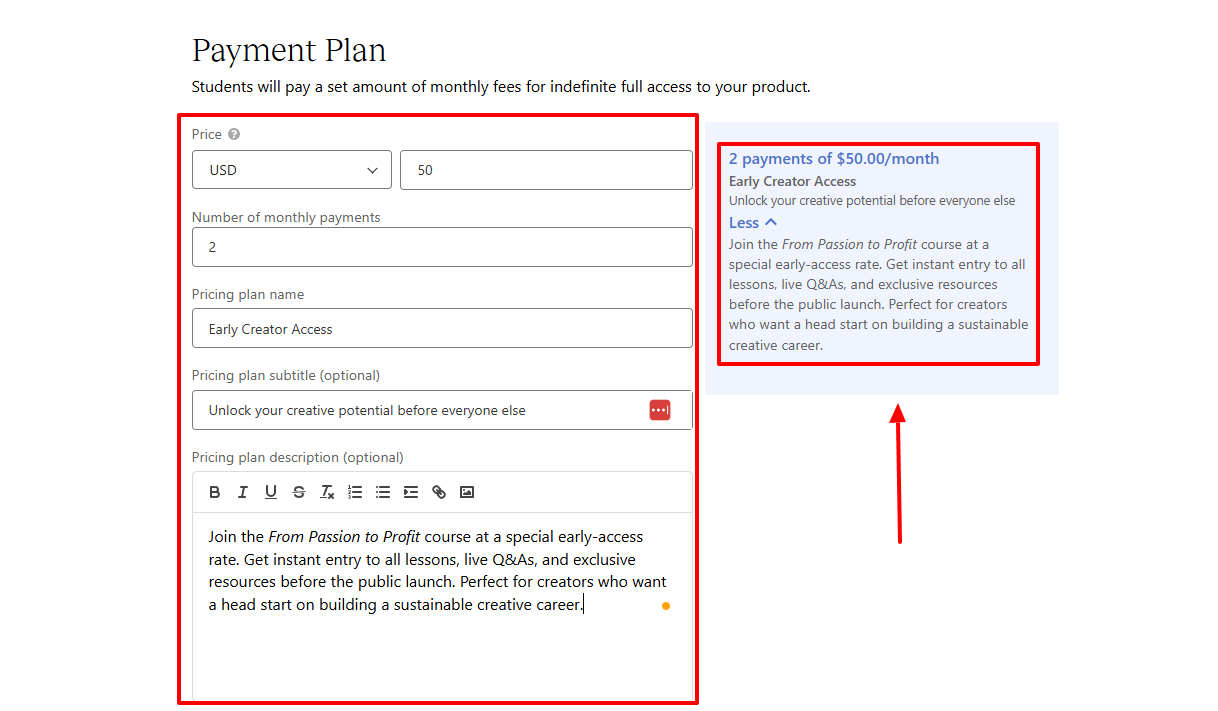
Now, there are two ways to outline your course curriculum on Teachable:
- Generate with AI
- Start from scratch
I wanted to try their AI, so I simply entered the course description and waited.

I was quite surprised by the outcome. It generated an entire outline broken down into 25 lessons, from introduction to conclusion.
From there, I added my content, edited the whole curriculum, title, layout, and thumbnail.
Once everything looked good, I just had to click the “Publish” button at the far right of the interface.
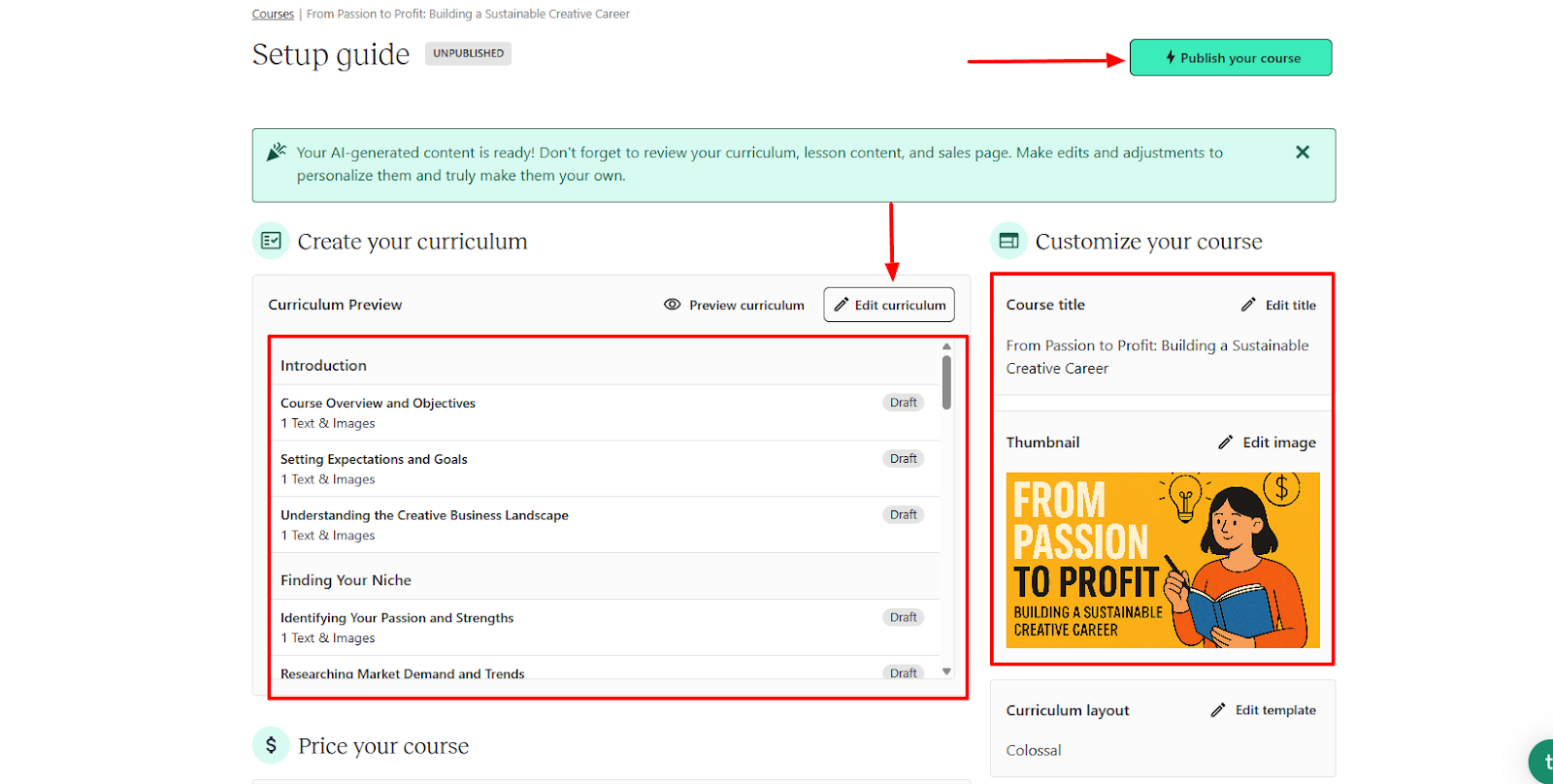
And this is what the checkout page looked like from the client’s perspective.
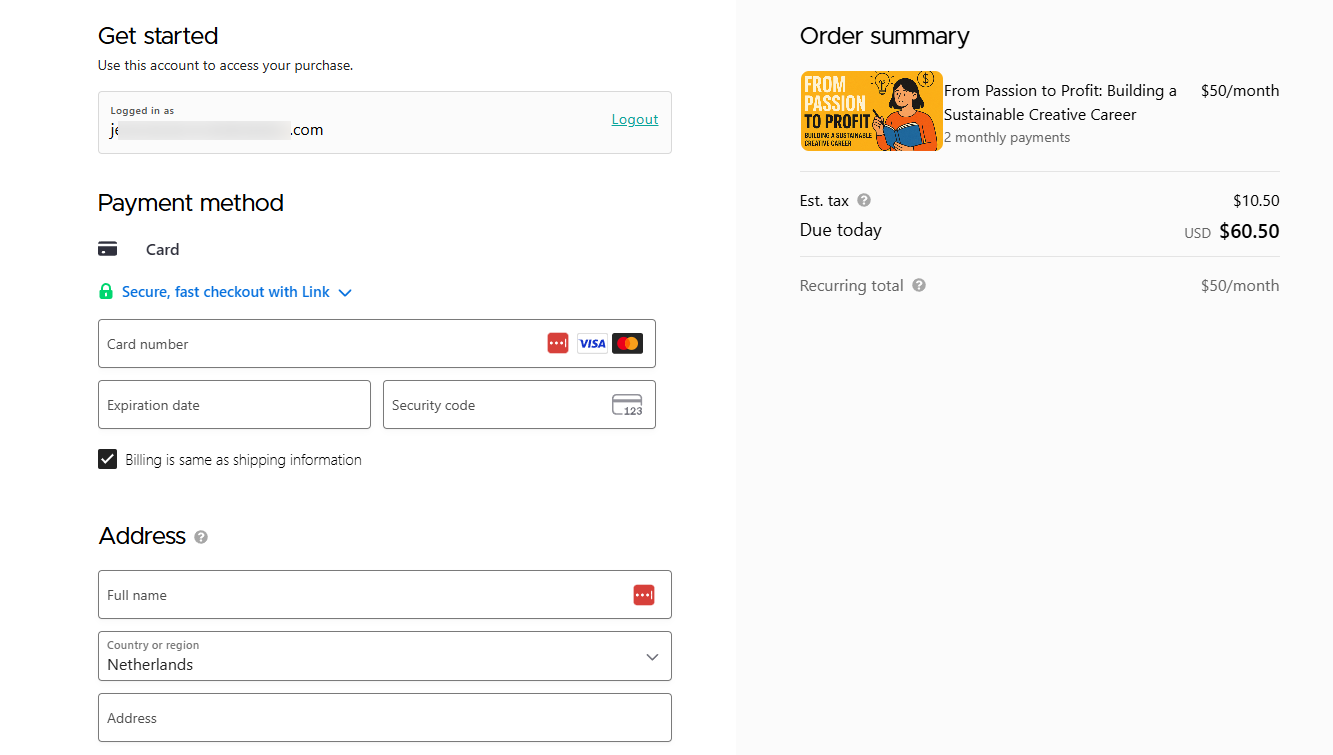
Now, let's review more reasons I added Teachable to my best Patreon alternatives.
[fs-toc-omit]Features I loved
1 . Digital downloads
There are a lot of creators, coaches, and independent business owners out there. If you are one of them, digital downloads let you monetize your expertise and reach a global audience.
A digital download can be an ebook, a template, a design, or anything someone can download. The beauty of it is that you upload the product once, and many people can download it hundreds of times.
Let’s see an example by going to Digital product > Create digital download.
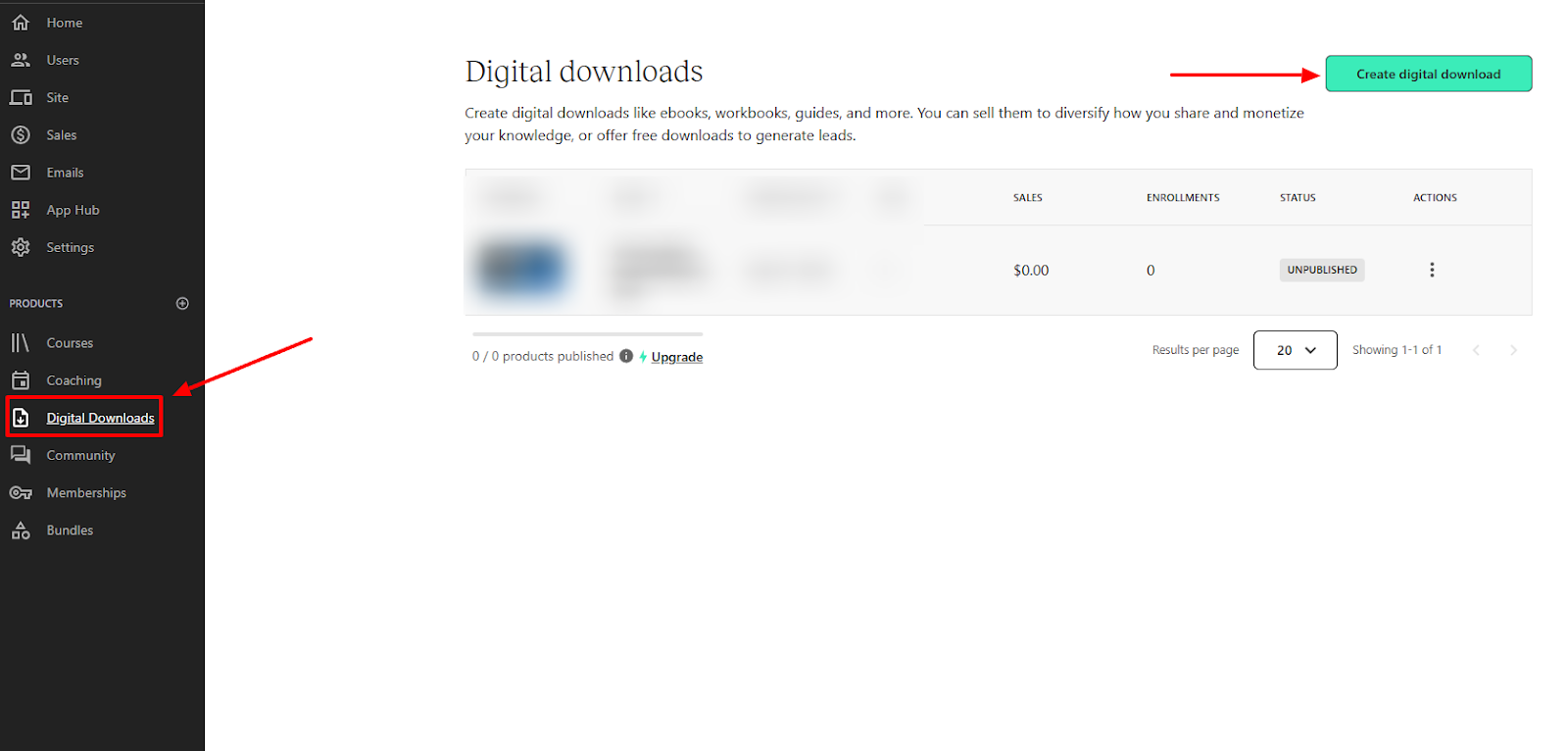
I can choose to create a downloadable file or a link.
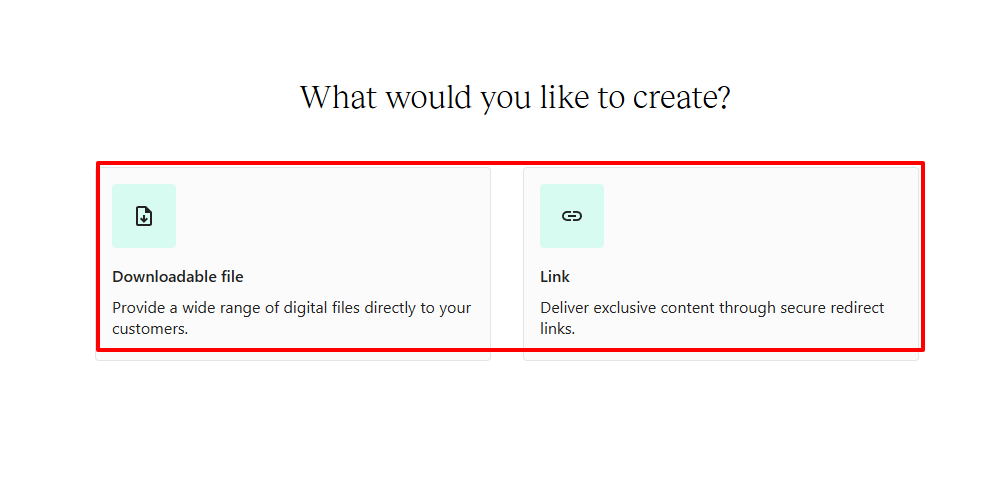
If you choose “Link”, you will then give a title, description, and choose a category.
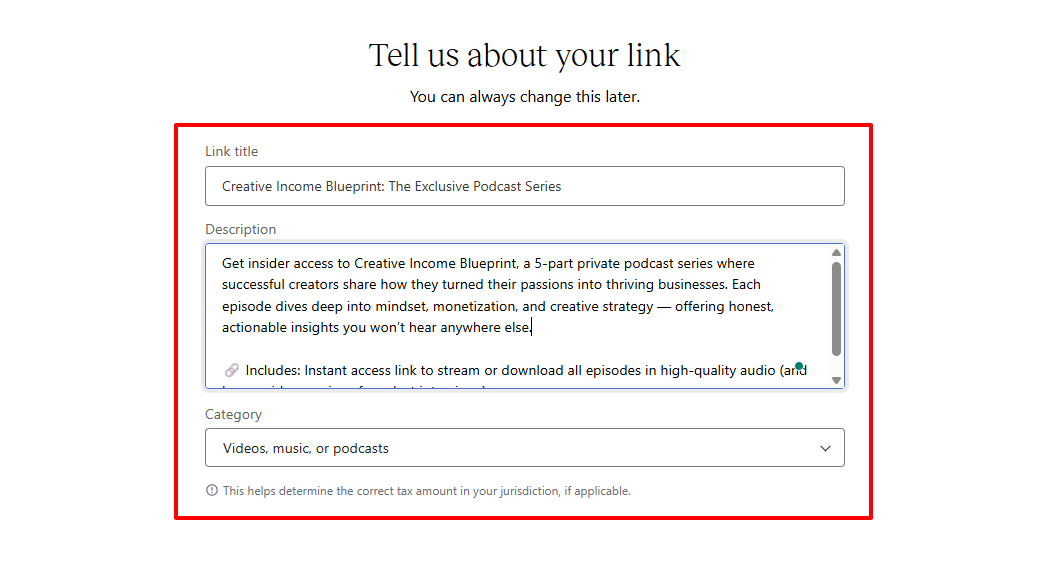
But you can add your content.
To do so, I had to choose the content delivery method between “file upload” and “redirect to URL”. I decided to upload a file.

The file I uploaded directly from my laptop popped up on my screen. This is what it looked like.
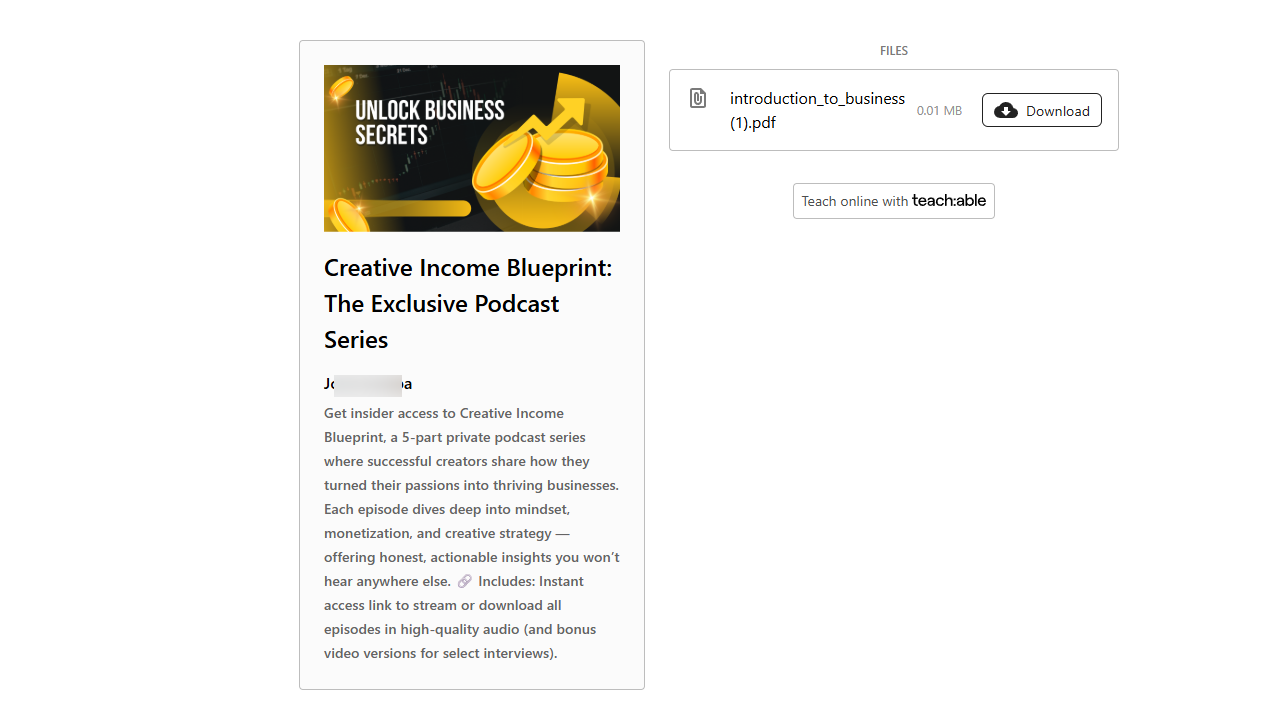
2 . Membership
One-time sales are good, but recurring sales are better. That's where memberships come in. You offer exclusive content every month, and people have to keep paying to access it.
I wanted to see how it works on Teachable, so I found “Membership” on the sidebar.
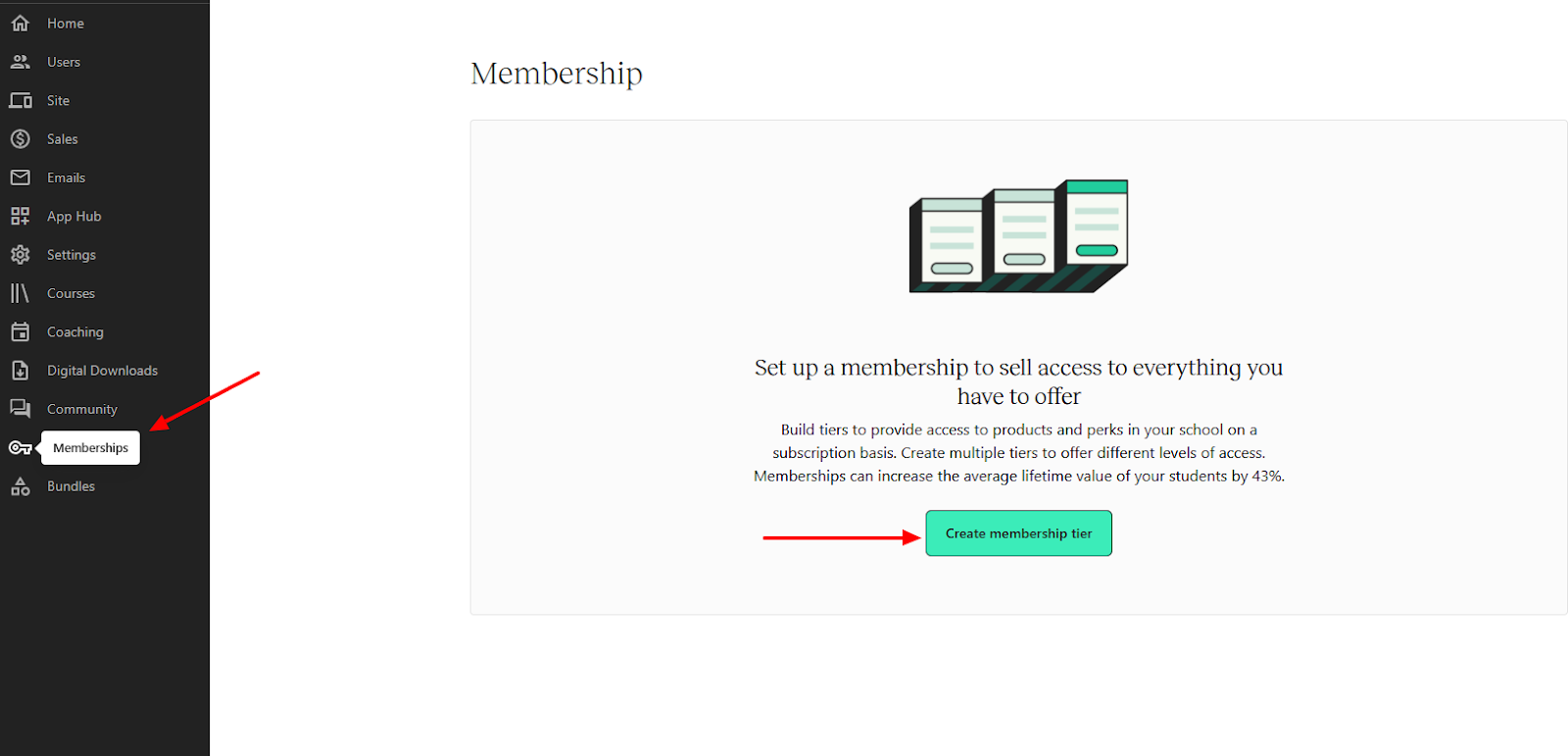
The first thing you will do is name your tier. Let's go with “Silver” to give it some class.
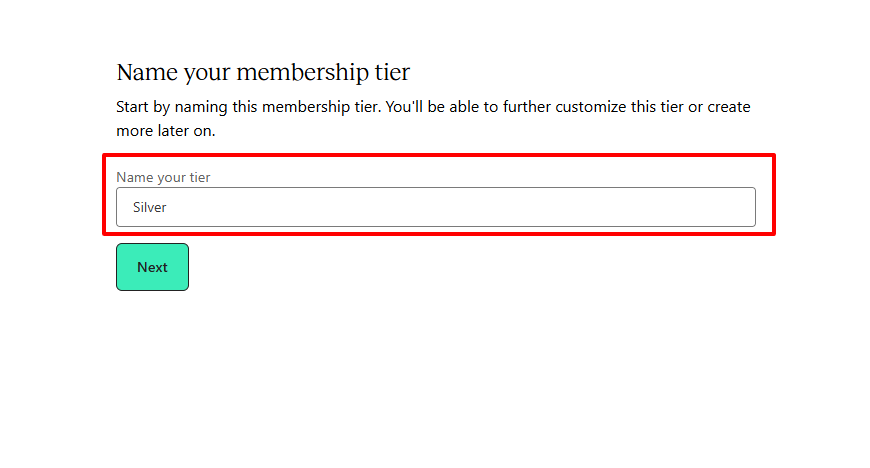
Now, name the section and add the products you want in your Silver tier. There is also the option to insert more sections.

Once you start selling, you'll see your total revenue in dollars, active members, and average monthly revenue per member.

[fs-toc-omit]Best for
- Teachable is best for course creators with a community seeking a platform with advanced course features.
[fs-toc-omit]Pricing
- Starter: $29/month + 7,5% transaction fee
- Builder: $69/month
- Growth: $139/month
- Advanced: $309/month
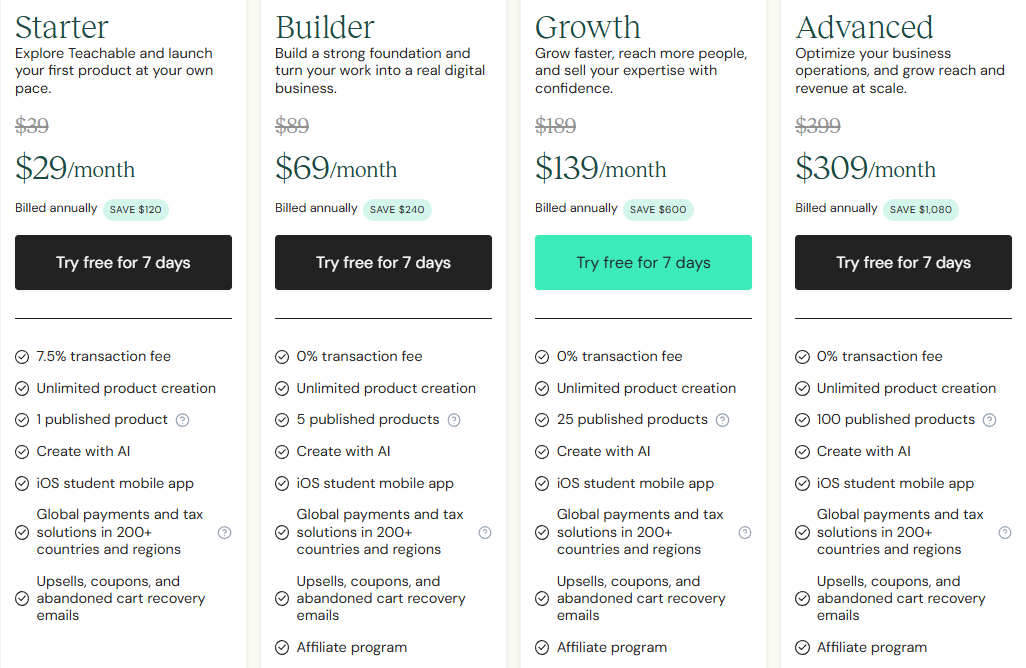
3. Podia
Rating: ⭐⭐⭐⭐ 4/5 stars | Starting price: $33 (with 5% transaction fee) | Integrates with: Mailerlite, PayPal, Calendly | Best for: Solo creators and entrepreneurs
We will continue this list of the best Patreon alternatives with Podia. It's very similar to Easytools and Teachable.
Just like both tools, you don't need a separate website builder, email marketing tool, and digital product platform.

Creating a coaching session, for instance, is easy. I only need to add my product name and choose the product type. Later on, I will upload an image, add a description, and a price.
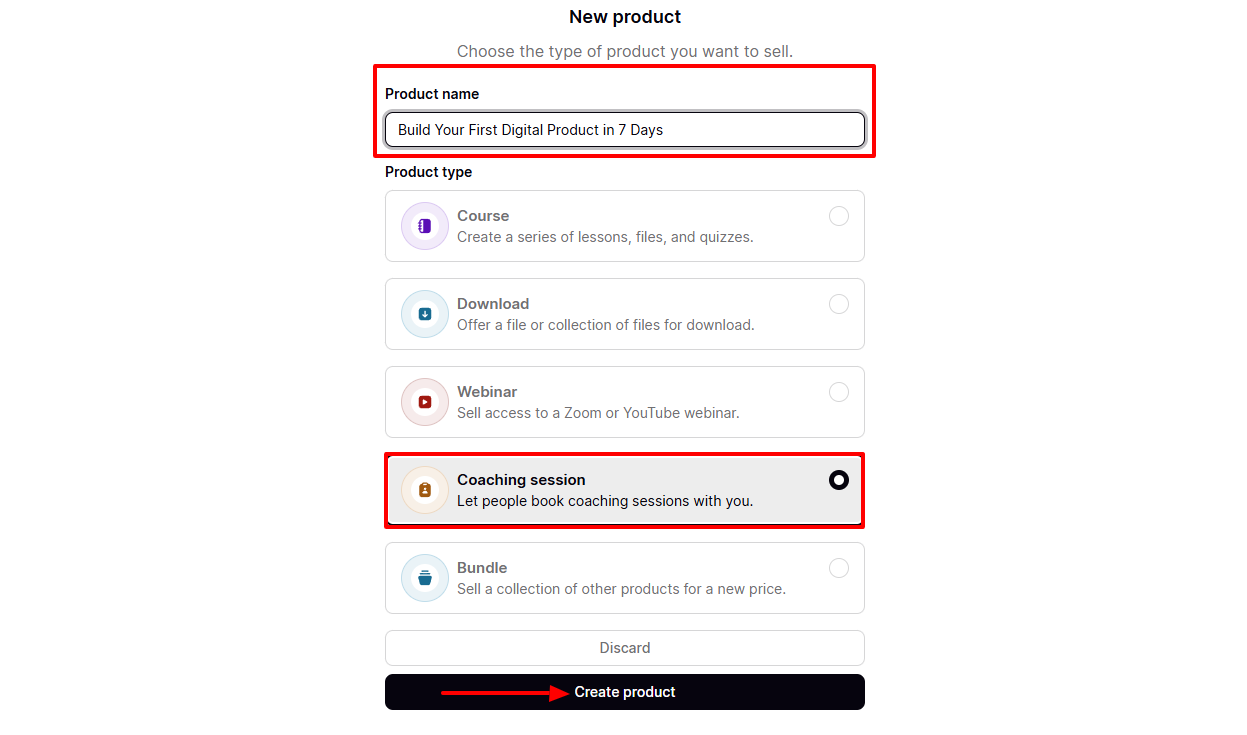
Podia lets me build and manage an online community. I'll set topics for my members, add a nice name, description, and upload a banner.
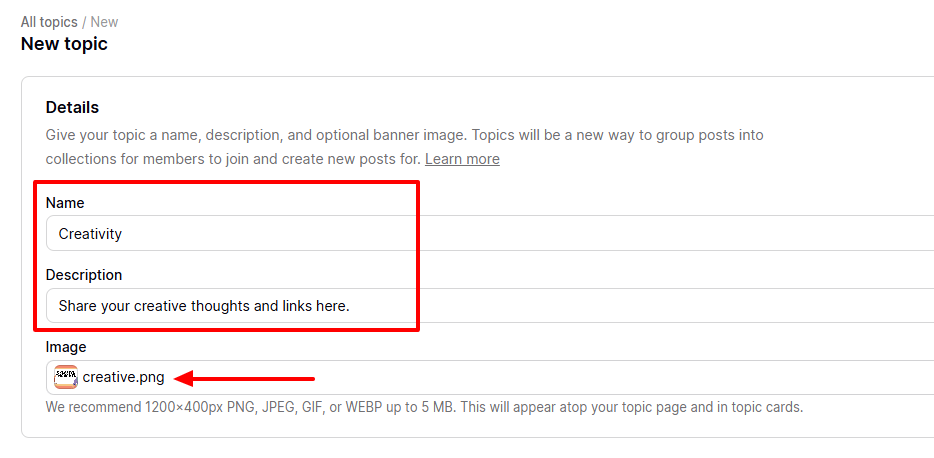
It's interesting to note that I can directly add someone to my audience. I will enter their name, email, and tags, and the person will appear in my audience and be subscribed to my emails.
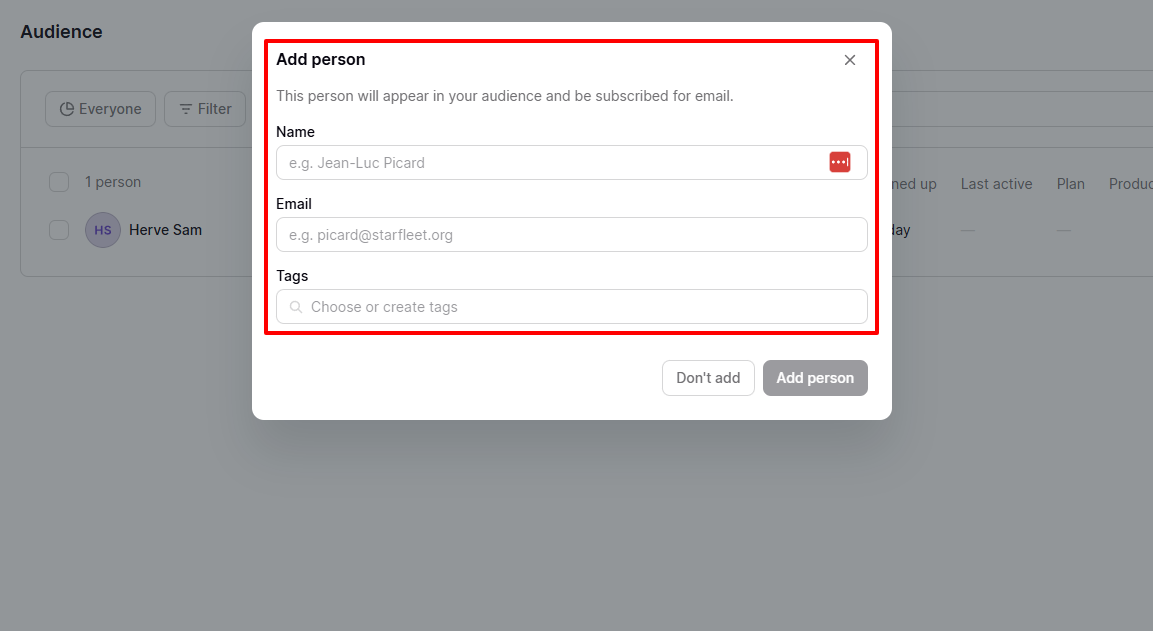
But Podia did not forget writers. You can write a full blog post, with a title, publish date, and author.

Let me share my experience after testing Podia.
I will create a coaching session. The very first action after I sign in is to locate Products > New product.
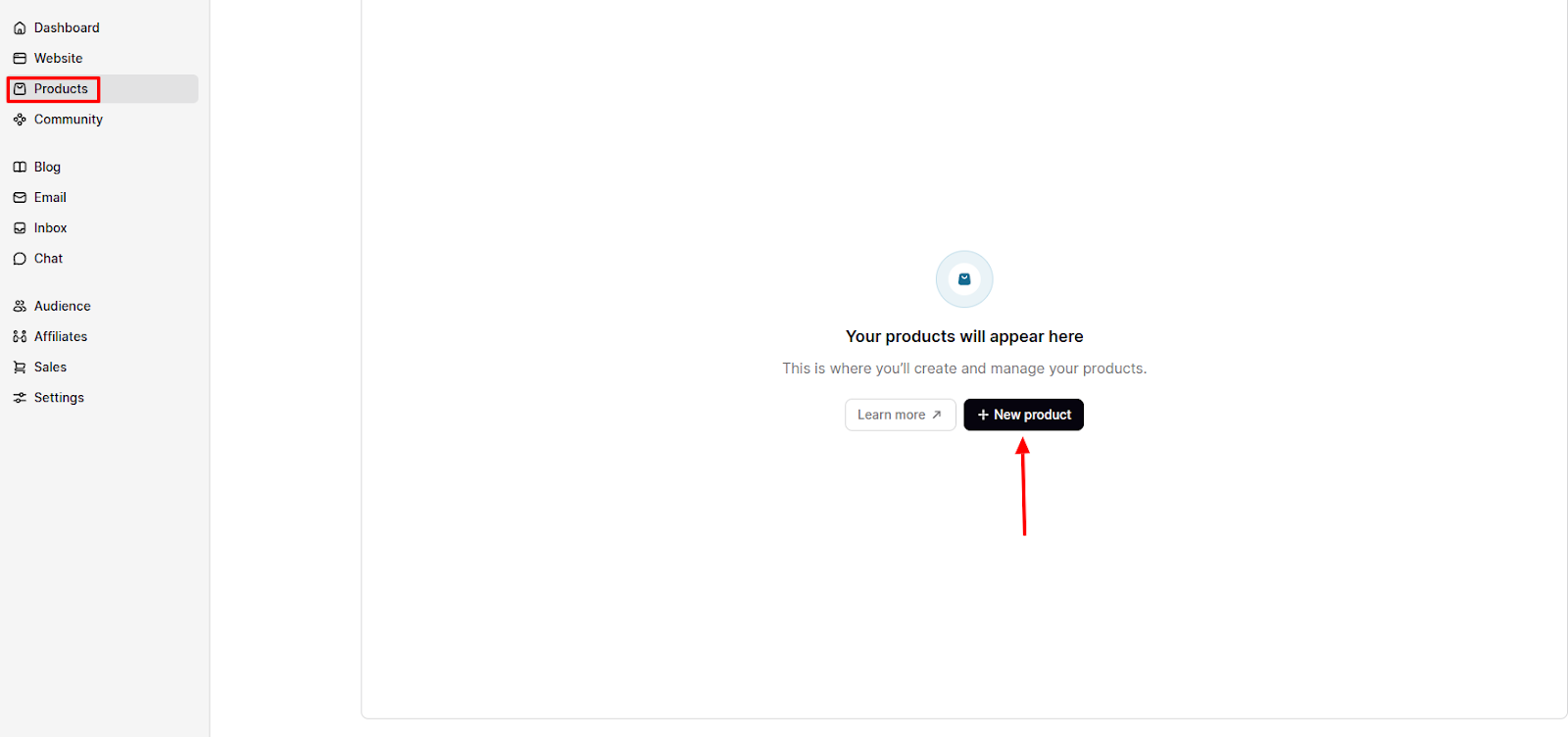
There are a lot of products to choose from, but like I said earlier, we’ll focus on coaching.

There were many actions to take, and I didn't even know where to start. Whether it was setting up my coaching, adding coaching to my courses, or editing the sales page.
So, I focused on what seemed most important to me: embedding a booking calendar, so people would easily book a session.
Below, I'll write my coaching instructions for more information.
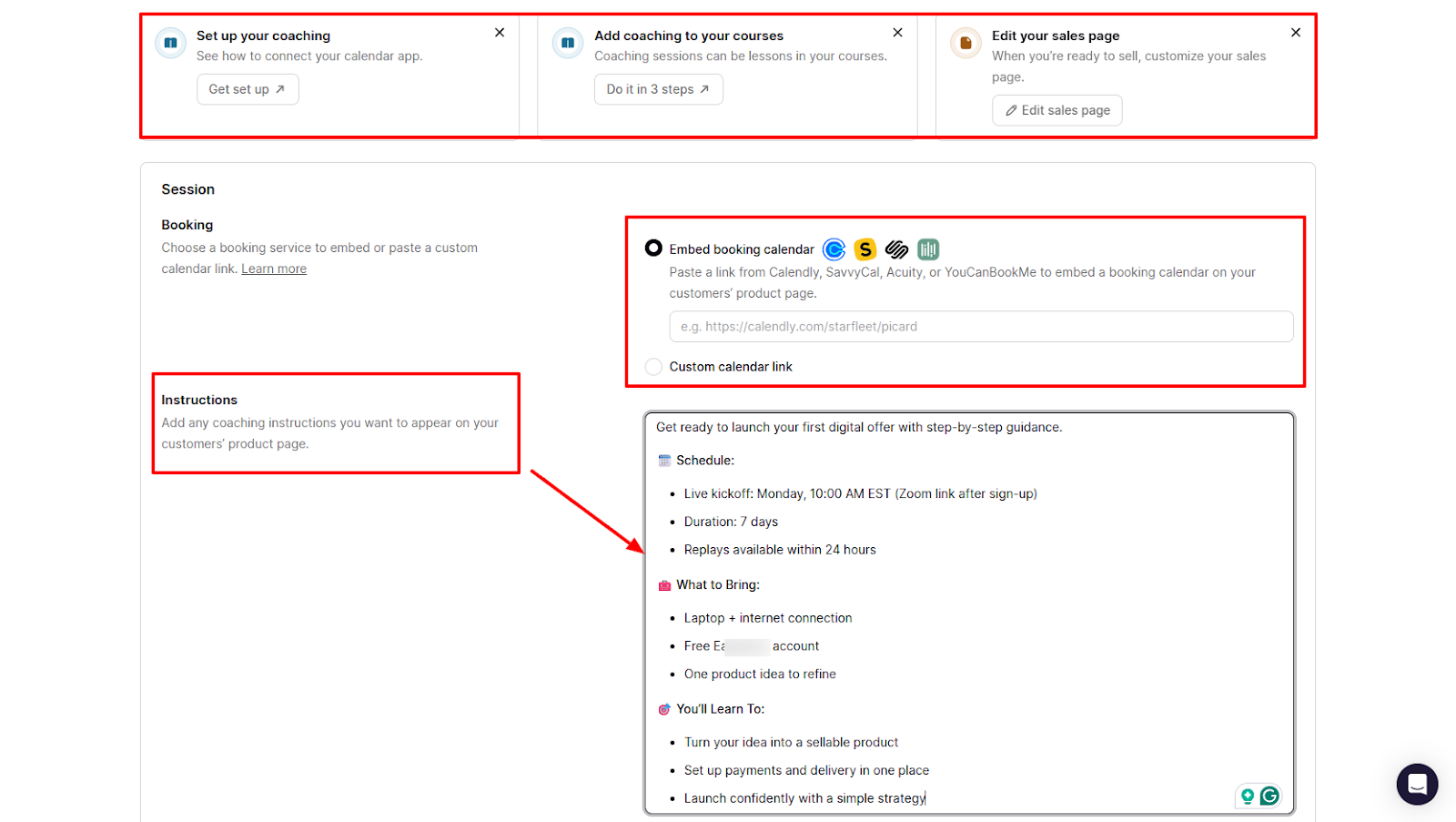
Next, let's provide more details: title, image, description, and category.
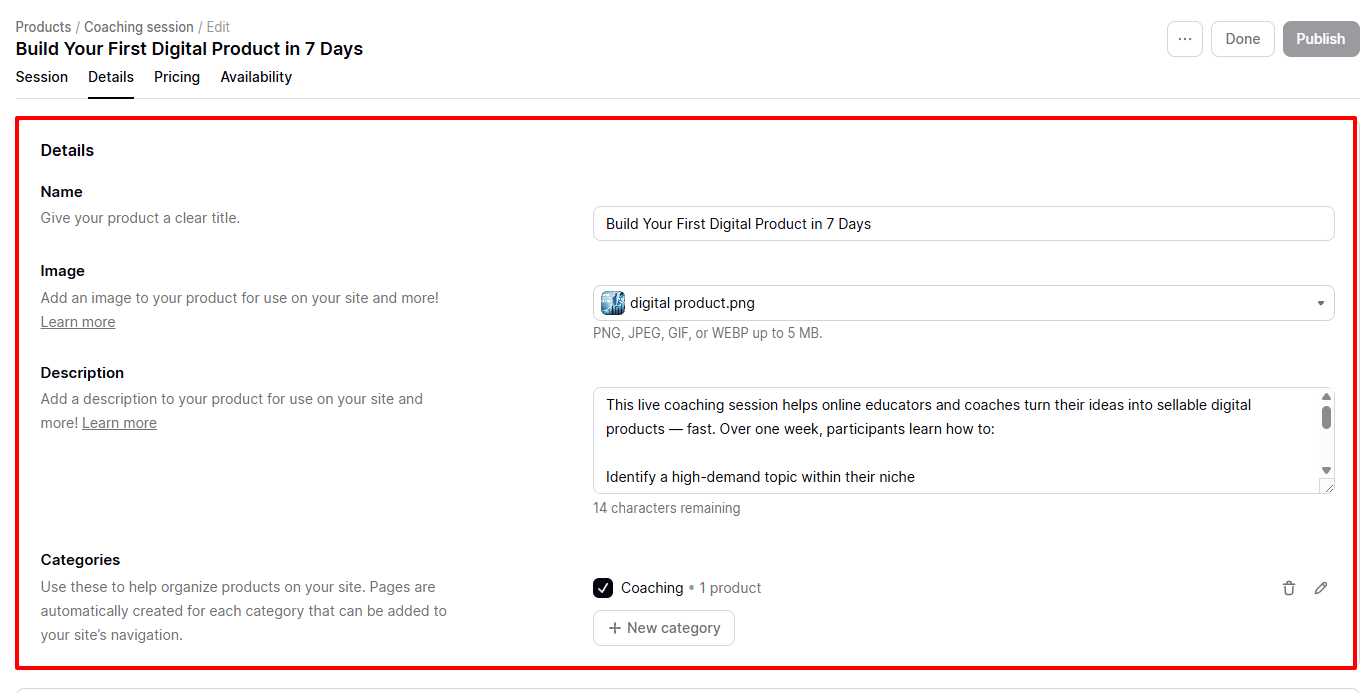
I made the offer “free.” There was also an upsell option.
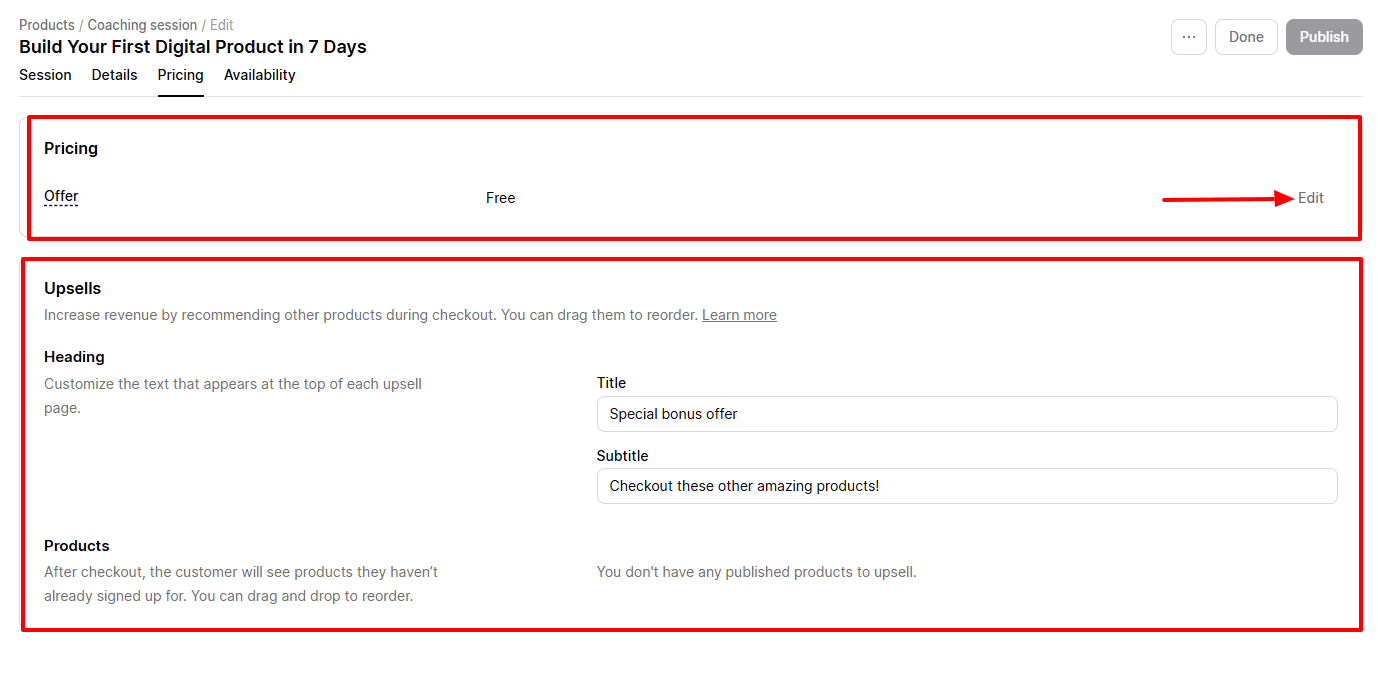
What impressed me the most was the availability. The coach will pick a start date, sign-up limit, and duration.

That’s it! Your audience will appear in the interface below.
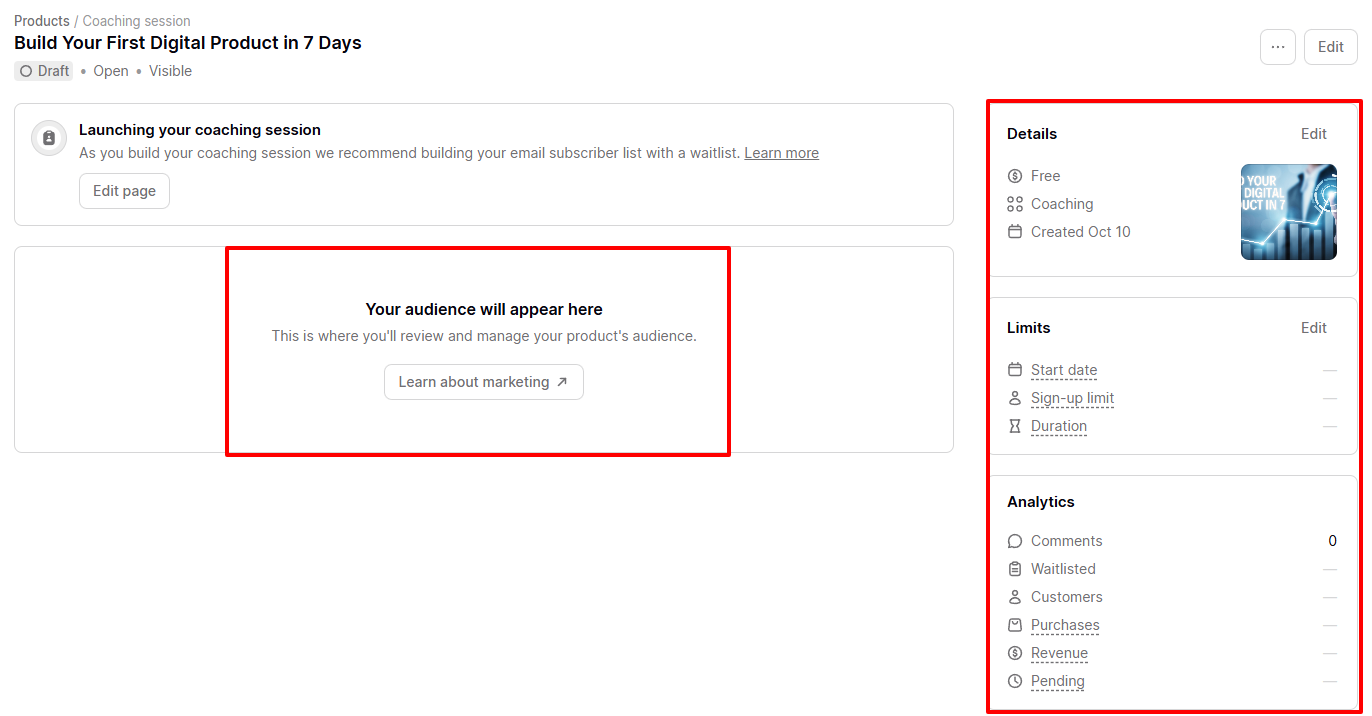
This is pretty much what customers will see.

Aside from this, there are also other reasons why I added Podia to my list of Patreon alternatives.
[fs-toc-omit]Features I loved
1 . Community
For a coach, selling a course isn’t the only goal to achieve. Coaches try to build a connection, trust, and an ongoing transformation.
But they can’t achieve that without a community. This is basically the heart of your business as a coach.
I tried to create one on Podia, and this is what it looked like.
Head to Community > Create community.

Next, invite members to join the community.

Then write a topic (it works like a group), give it a name, description, and upload a banner.

The coach can adjust the access level to their liking. They even choose who can view, follow, and make new posts.
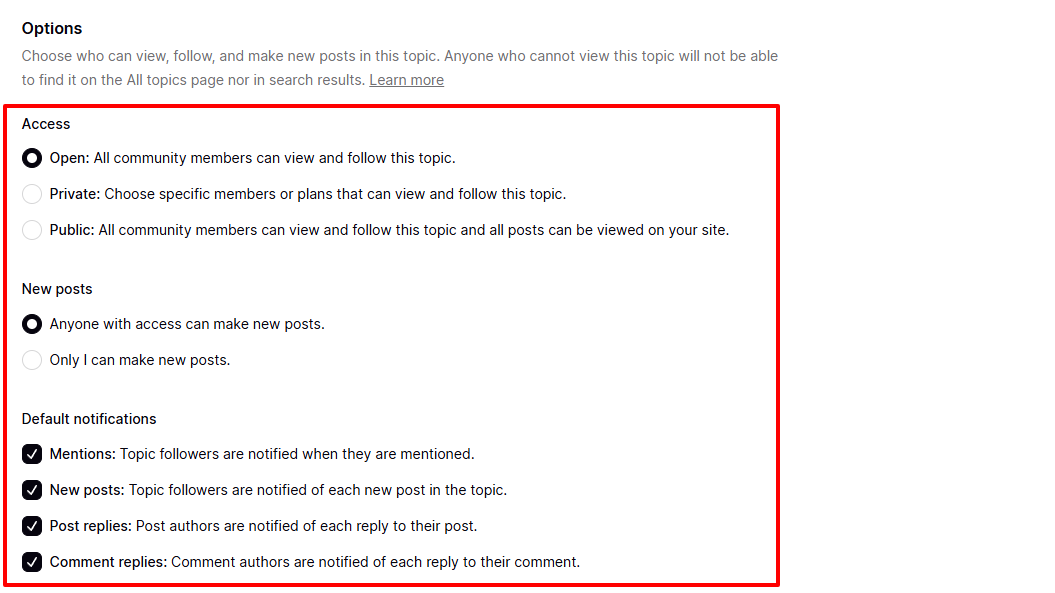
Finally, they create posts to share new updates with their community. The right side shows your topic, and only members who have access will see it.

2 . Blog
Creators love to share insights, attract organic traffic, and become an authority in their niche. Writing blogs is one of the best ways to do that. And if you’re good at writing blog posts, you may turn readers into paying customers.
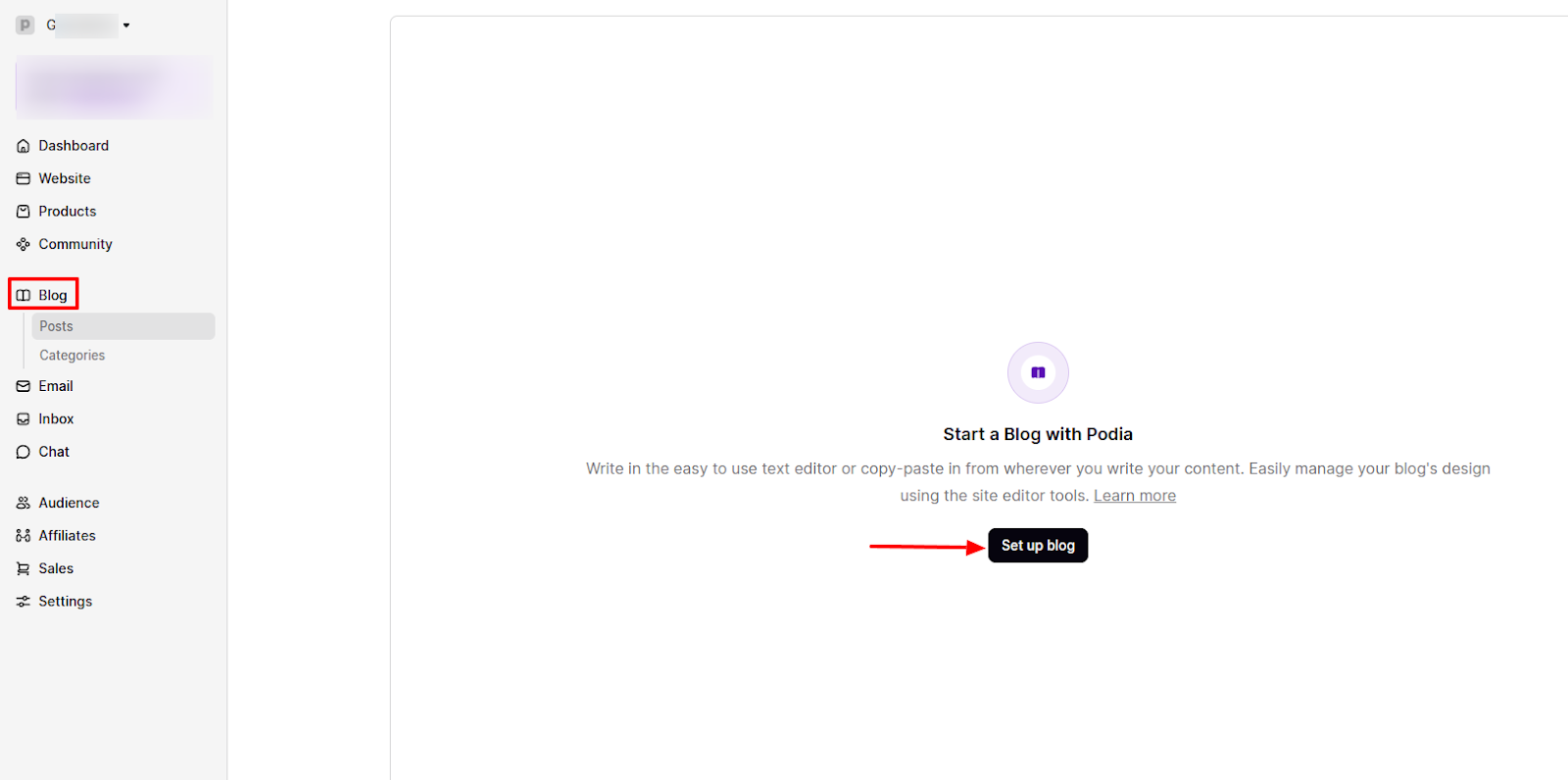
I could set up my blog by following a few actions:
- Import my posts (good for those who’ve already been writing),
- Design the blog post page and
- Prepare the blog page.
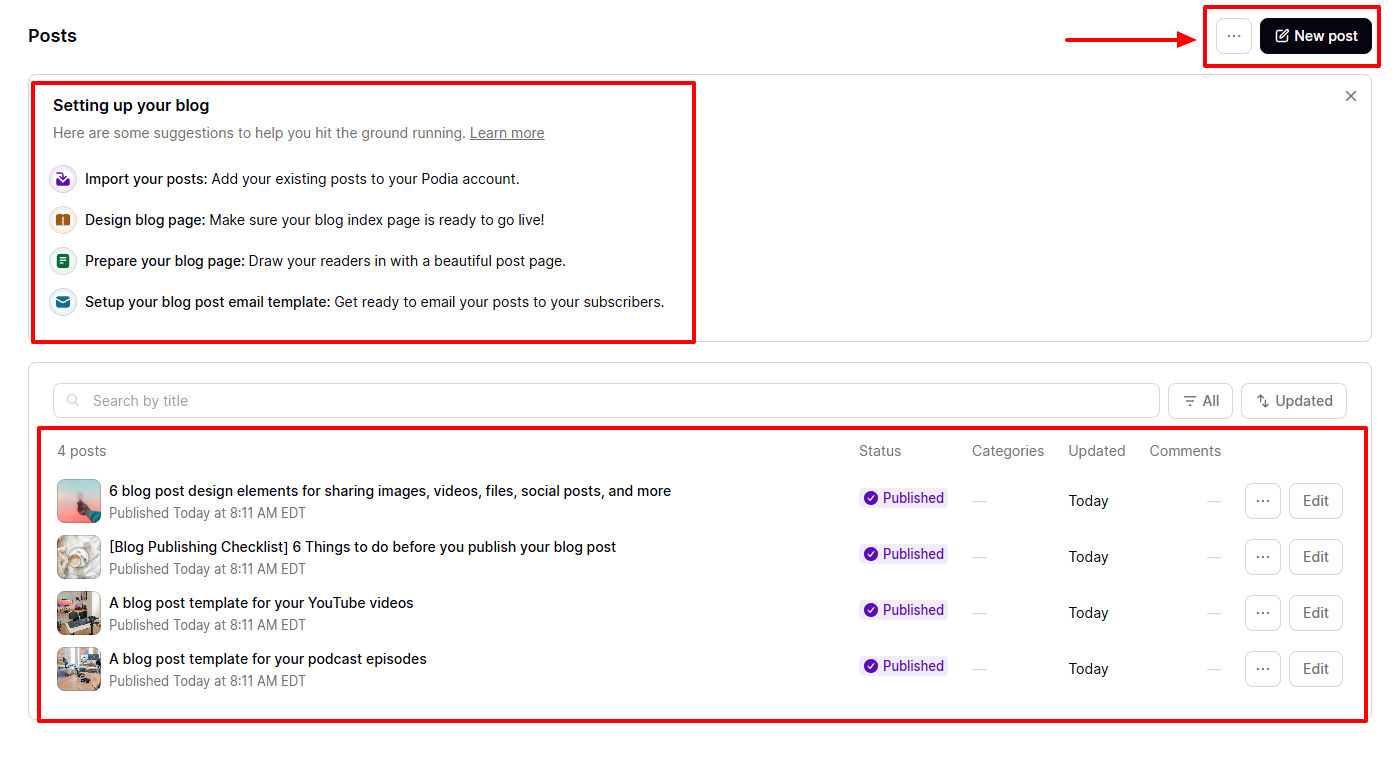
Let’s write a blog post from scratch. On the far right, set the publish date and choose an author. SEO optimized your content if you know the basics.

Insert images, write an excerpt, adjust the comments setting, and choose a category.

Finally, once the blog is ready, send it to your email subscribers.
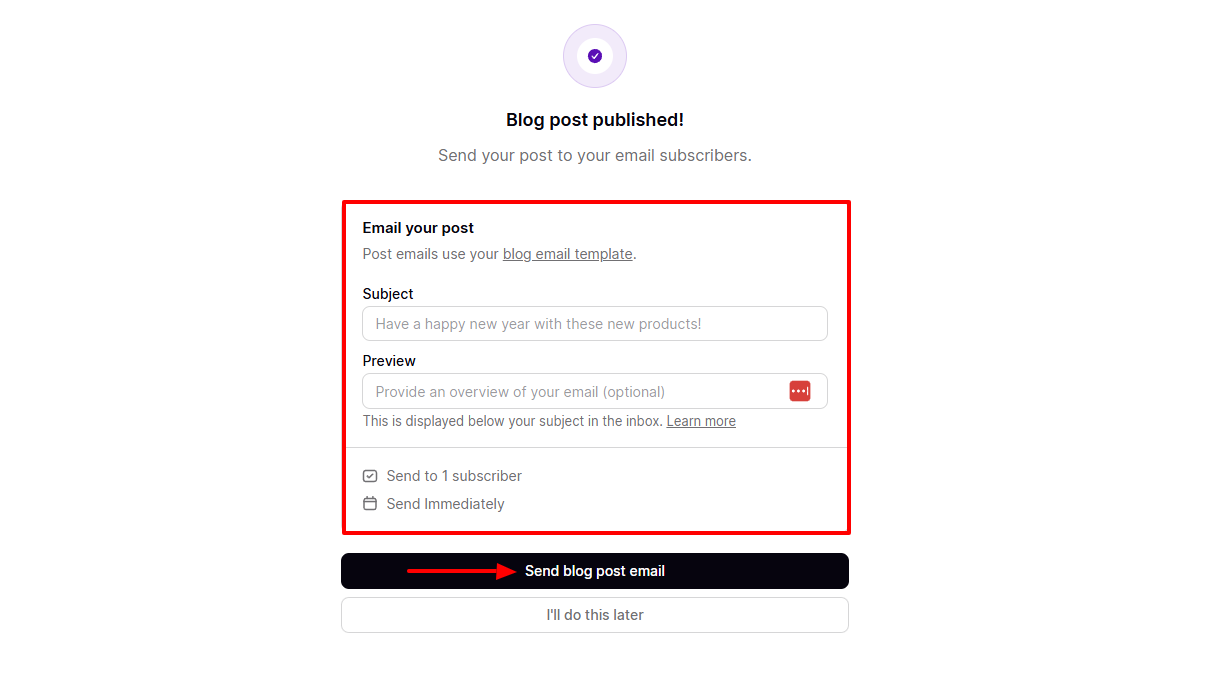
[fs-toc-omit]Best for
- Podia is best for solo creators who want to create a community around blogs, courses, and coaching sessions.
[fs-toc-omit]Pricing
- Mover: $33/month + 5% transaction fees
- Shaker: $75/month
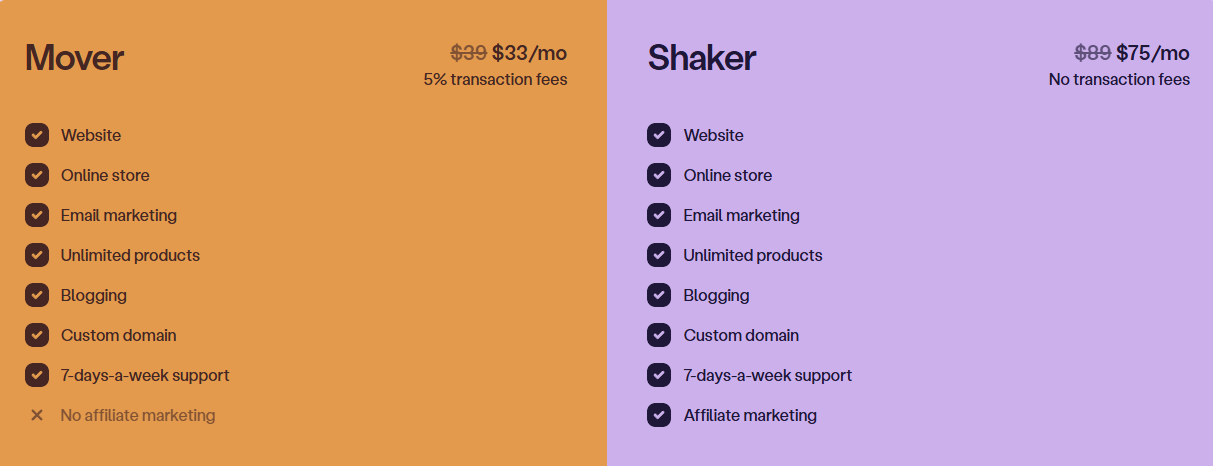
4. Skool
Rating: ⭐⭐⭐⭐ 4/5 stars | Starting price: $9/month | Integrates with: Stripe, Discord, YouTube, Loom | Best for: Creators and online tutors.
If you’re looking for a Patreon alternative that has a zero-to-no learning curve and combines course creation and community building, Skool is a great alternative to consider.
You can sell a course, host a vibrant community, and earn affiliate commissions without switching tools.
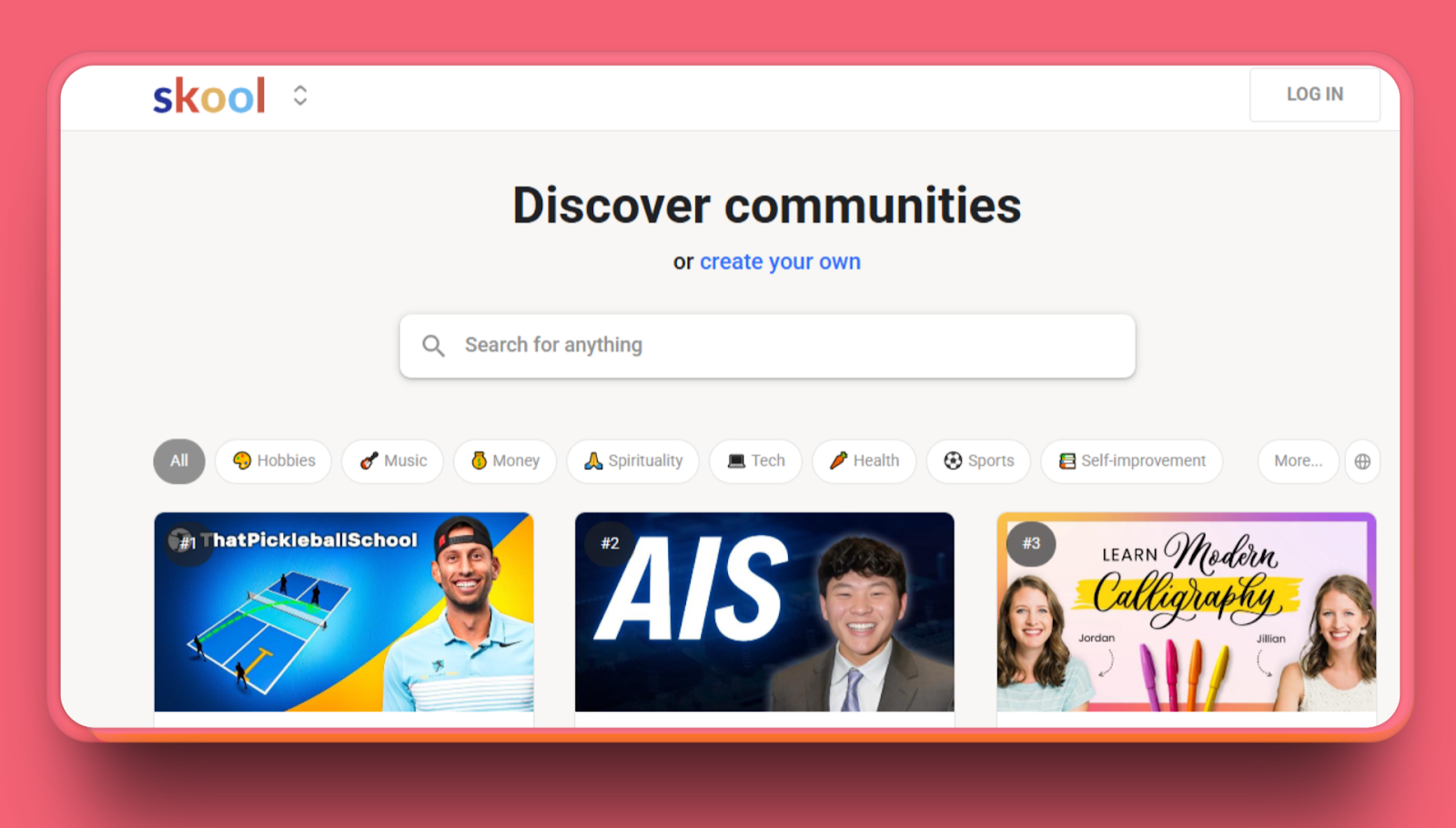
Inside its classroom interface, users can publish as many courses as they need. They organize learning materials and lessons with images and videos.

Thanks to the community section, they chat with members, share ideas, or pin posts. And you know the rest: resources, success stories, and live sessions.

Page displaying users locations and online status
There’s also a calendar page where you can create and view all upcoming community events and sessions. You can set up recurring activities and schedule live events.
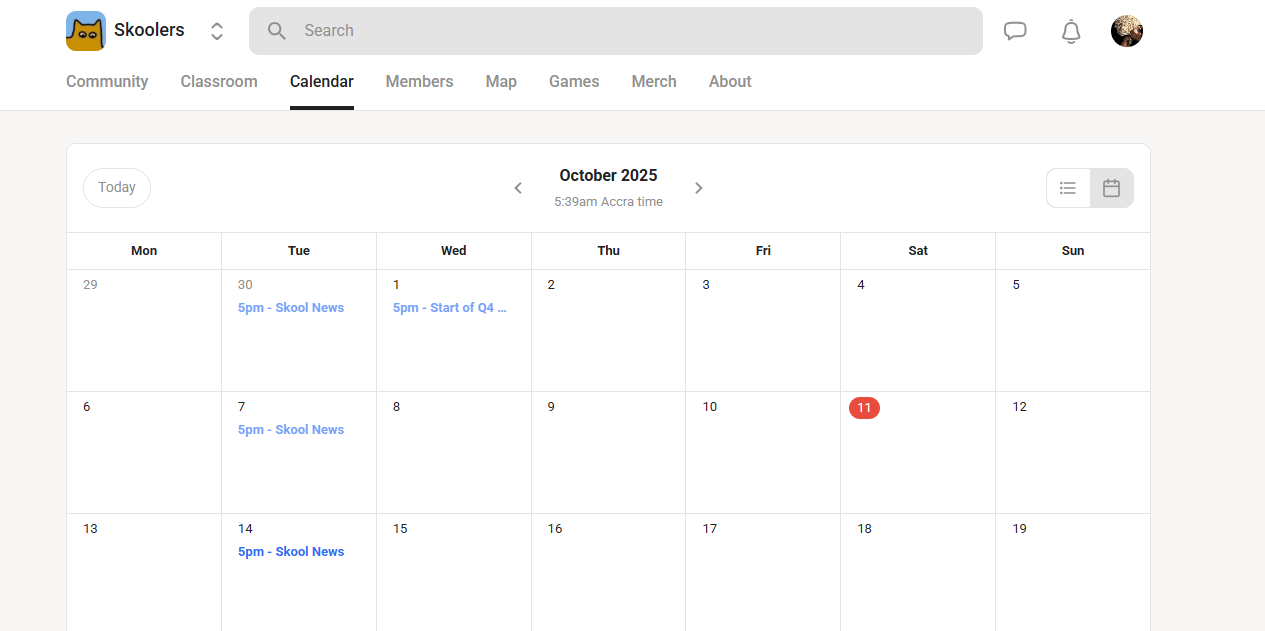
There is more.
The members feature helps you see everyone in your community in one place: their profiles, bios, and online status.

Let's go back to the classroom interface and see how Skool works.
First, we need to create a new course.
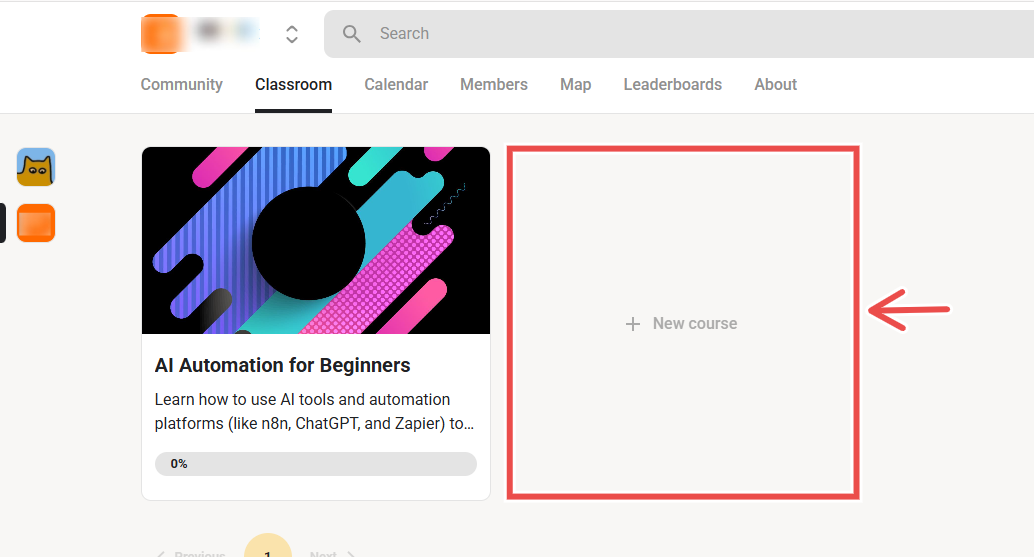
A pop-up window will appear. Here, we enter our course name and description.

Next, we select the course access.
For example, if we select “Open”, it’ll be free, which means everyone can access it. It's good if we want to attract as many people as possible.
There are also more options like buy now, level unlock, time unlock, and private. In this example, I’ll choose ‘open,’ so new learners can join for free.

The new course page is ready.
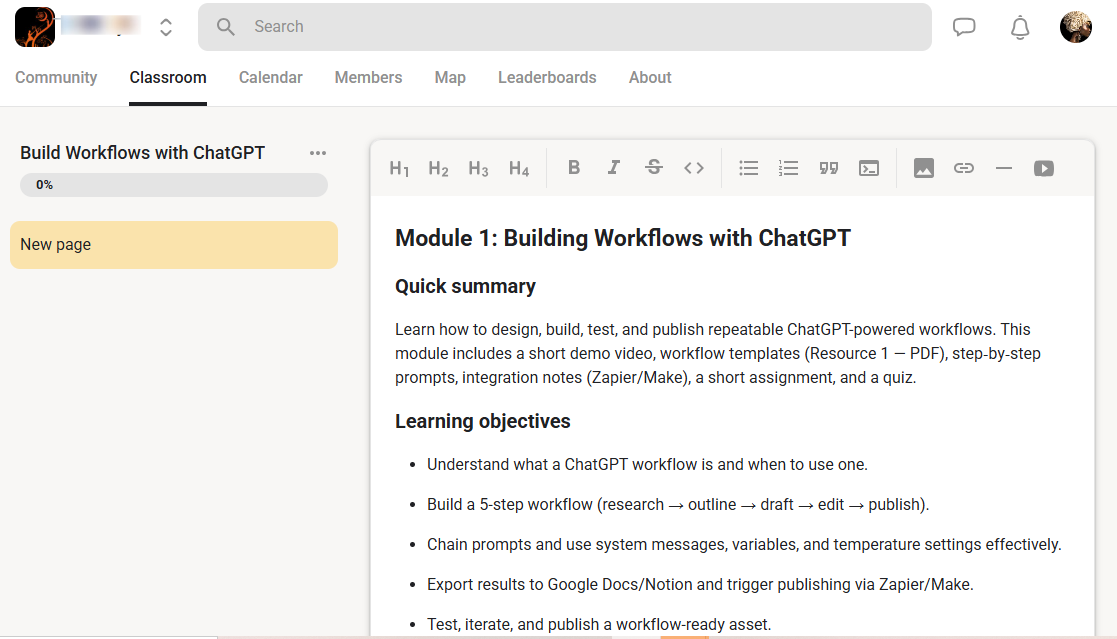
Users can import a YouTube, Loom, or Wistia video.

We will go with YouTube.
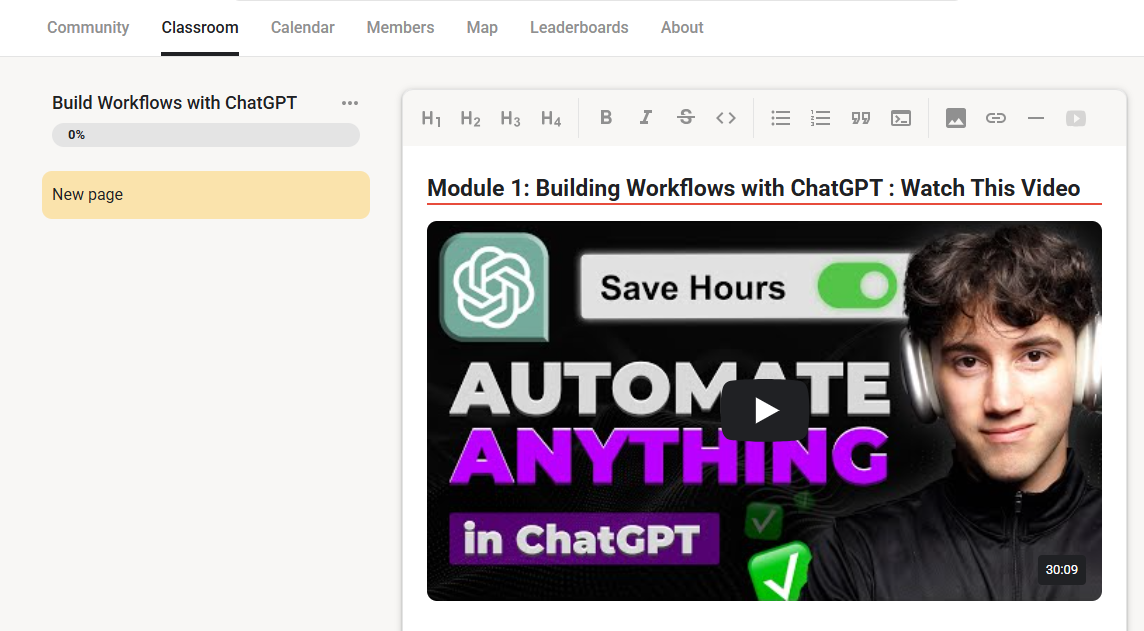
We will also provide resources and transcripts.
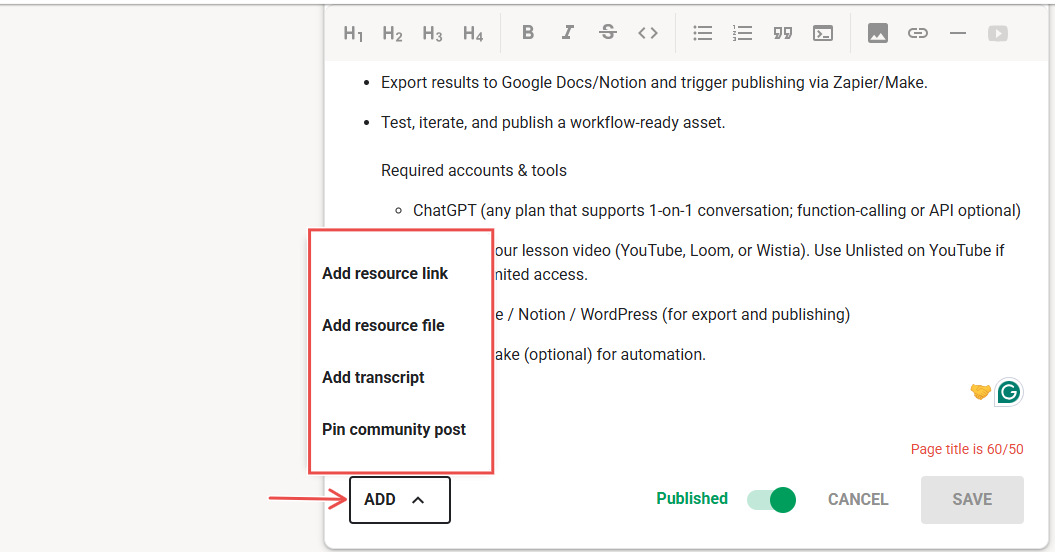
Next, keep “Published” toggled on and click “Save”.
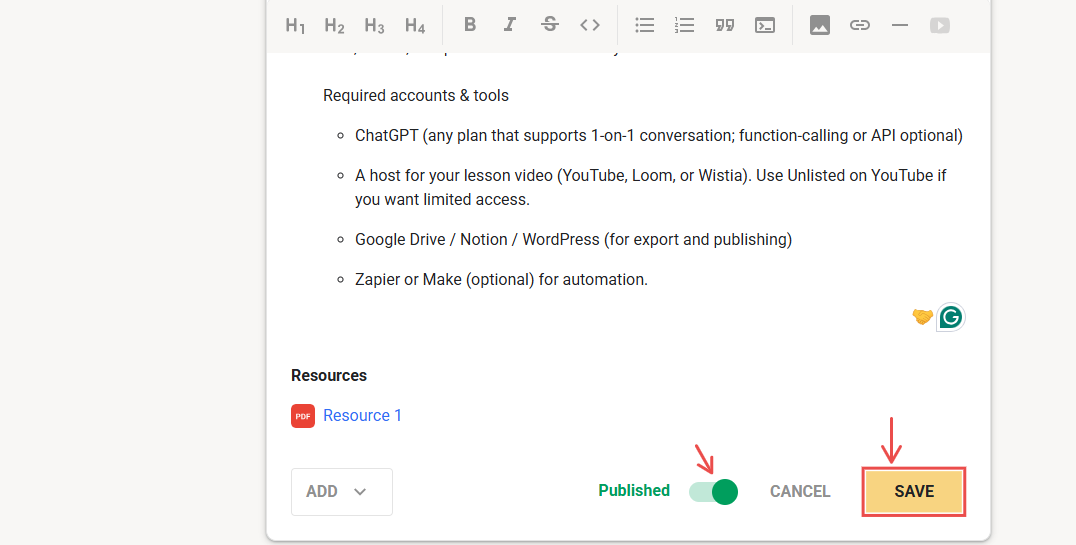
Click “Add page” to insert a new course module.
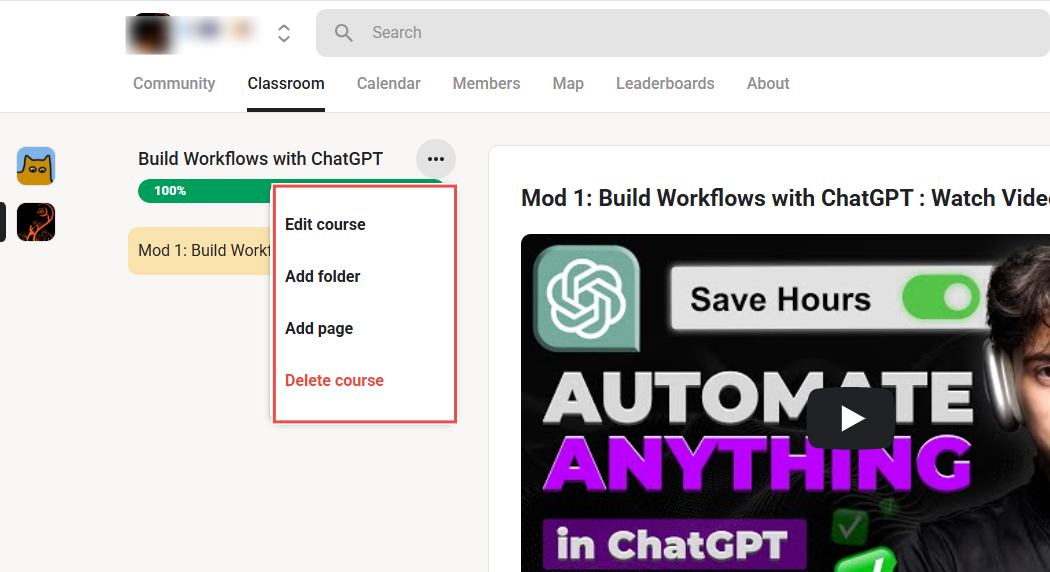
The course creation is now complete. If you have more than one course, you’ll see them under your classroom tab.

What else did I find during my testing?
[fs-toc-omit]Features I loved
1. Community
Thanks to Skool’s community tab, you don’t need to have your courses on one platform while hosting your community somewhere else, like on Facebook. You can have both on one platform.
Here’s how to set it up.
First, select the community tab. Then select ‘Settings.’
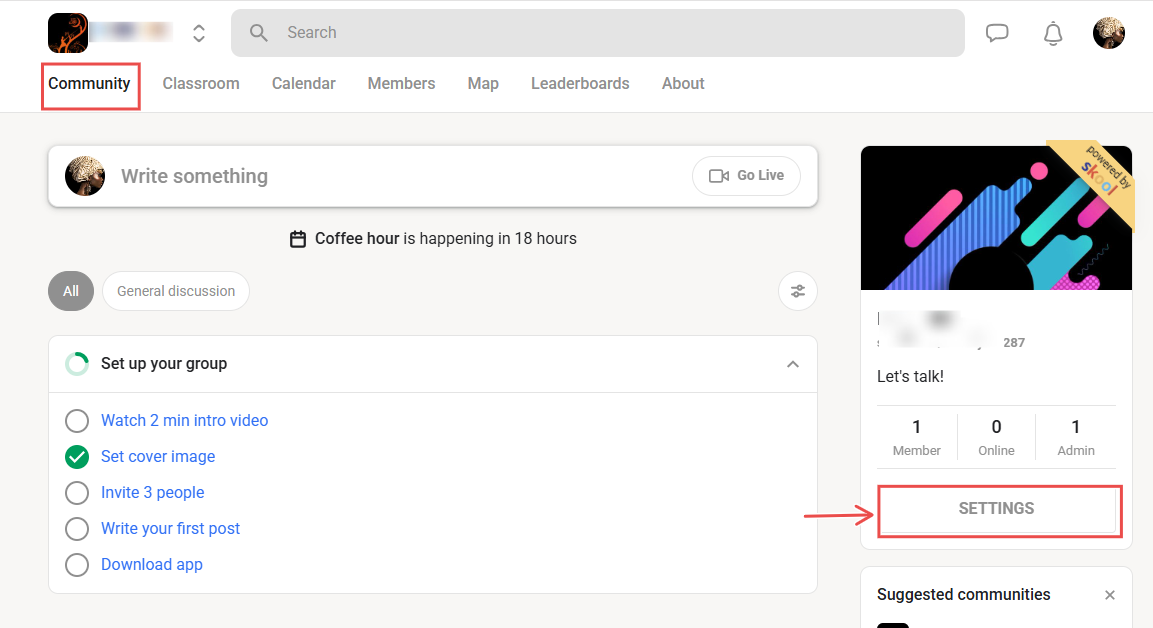
This opens a pop-up page. Click ‘General,’ ‘Add cover image,’ your group name, description, and logo. You may choose to customize your URL as well.
This is the link you will share to invite people to join your community.

For the next step, choose whether your community will be private or public.
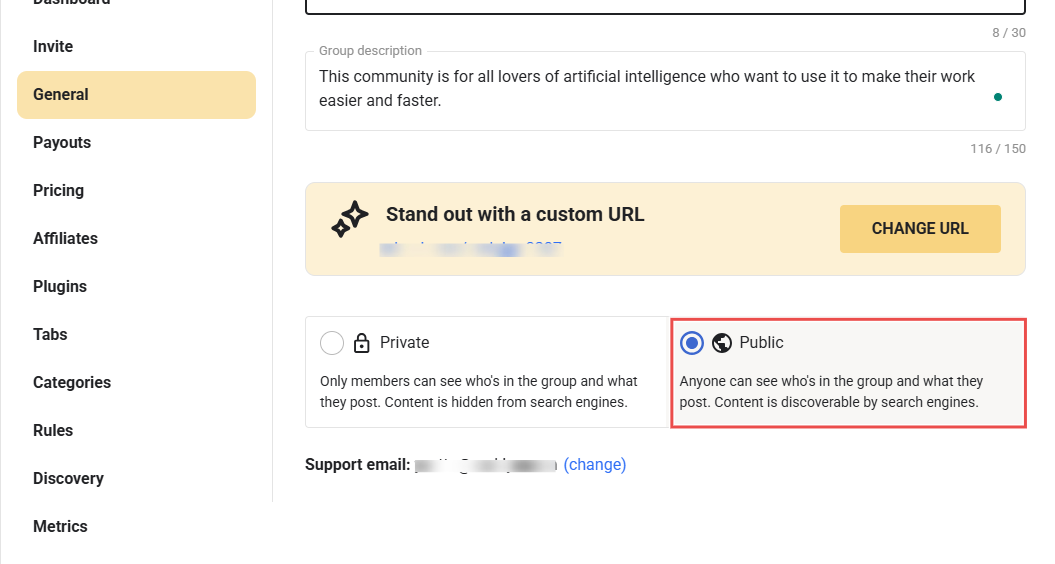
2. Affiliates
This is how you can encourage people to promote your product. When someone buys it through the link, you give a commission to the person who referred the product.
Choose the percentage you want to pay.

Click on your profile and then on ‘Affiliates.’
You’ll see your unique affiliate link for your product here. Now, you can copy and paste it in your YouTube description, on your social media, or anywhere else you have a platform.
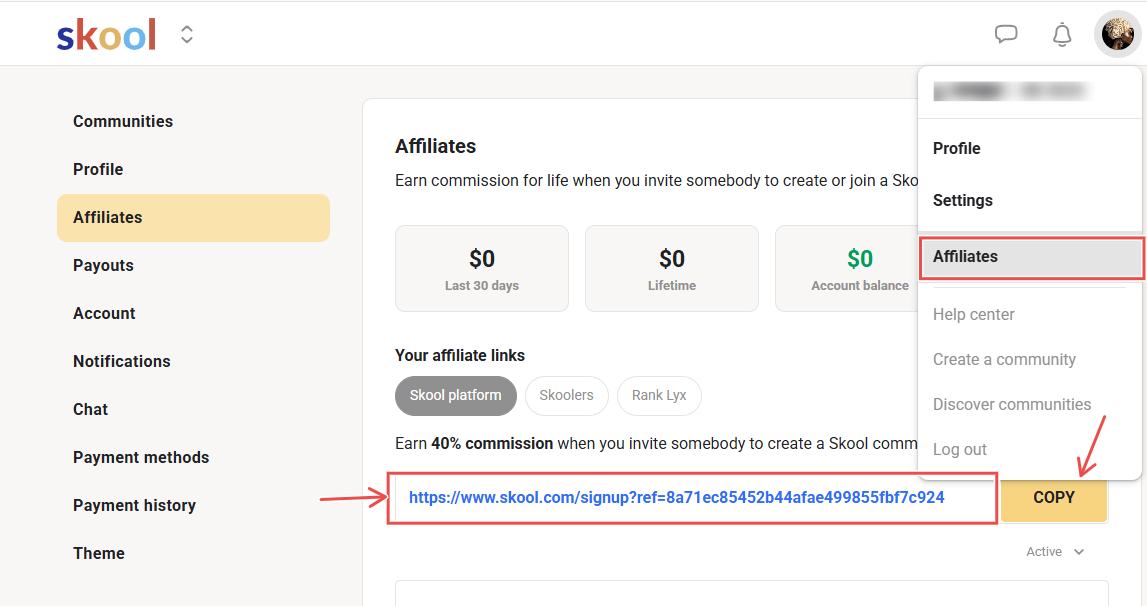
Let’s test the link to be sure it works
To do this, we’ll copy the link and paste it into a new tab. If the link is active, it will show a message identifying the affiliate who shared it.
With this, whenever someone purchases your course or joins your paid community through that link, that affiliate automatically earns a 40% commission.

For example, if your course costs $99, and 10 people buy it through an affiliate’s link, that affiliate will earn $396 in commissions.
Multiply that by more affiliates, and you can grow your audience while rewarding the people who help you promote your work.
[fs-toc-omit]Best for
- Skool is best for creators looking for a community platform to monetize their knowledge and skills.
[fs-toc-omit]Pricing
- Hobby Plan: $9/month
- Pro Plan: $99/month
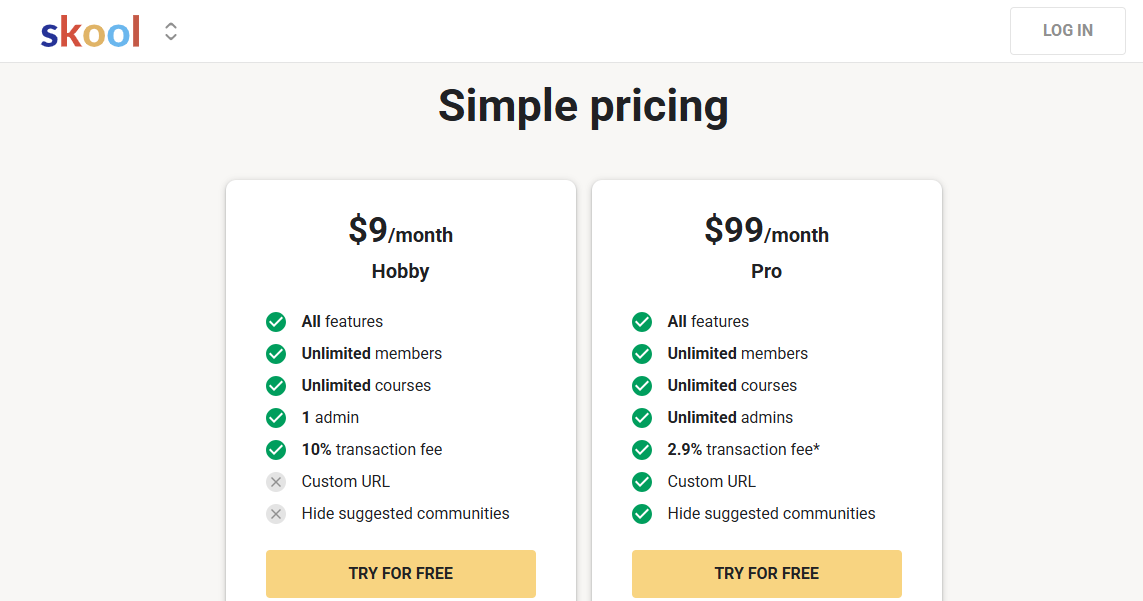
5. Memberful
Rating: ⭐⭐⭐⭐ 4/5 stars | Starting price: $49/month + transaction fees | Integrates with: Mailchimp, Klaviyo, Discord, Discourse | Best for: Small creators, educators, coaches, and podcasters
I added Memberful to this list of Patreon alternatives because it has the advantage of giving you direct access to your members.
You not only get to create and manage your product, but you can also send direct messages to members of your community.

Just like all Patreon alternatives in this article, you can set up a website by adding forms, branding, and more.
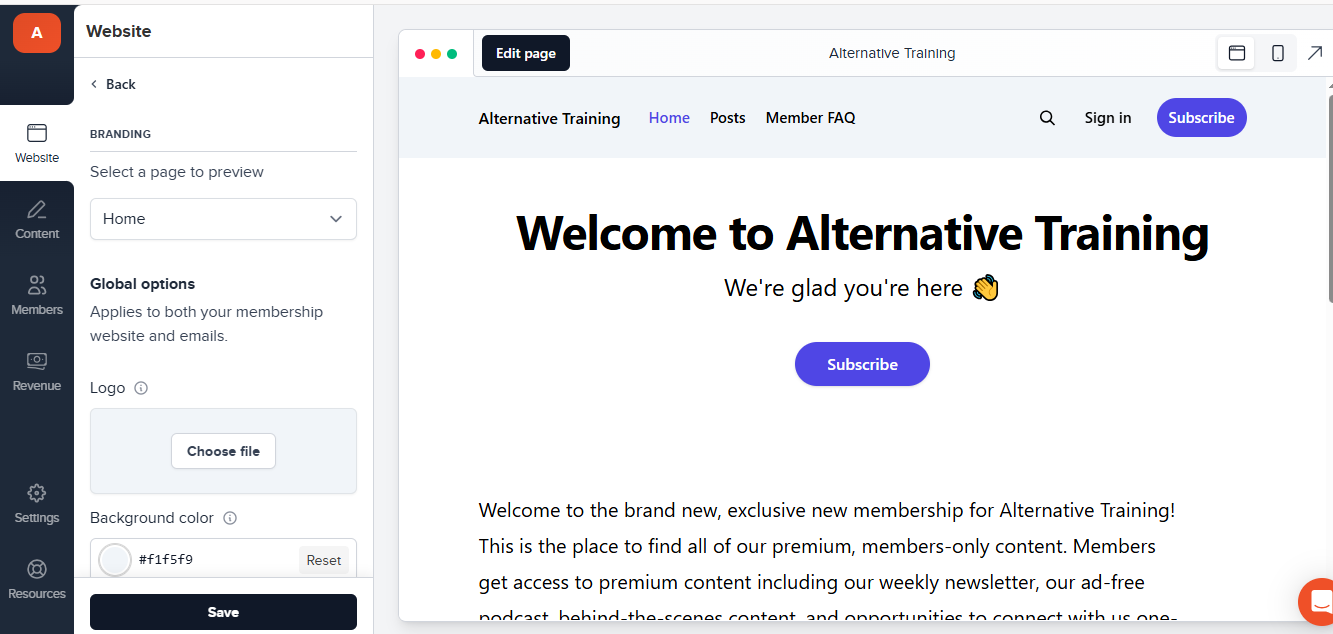
After creating their site, users can write, organize, and manage posts, podcasts, downloads, and email content. They even track visibility and engagement.
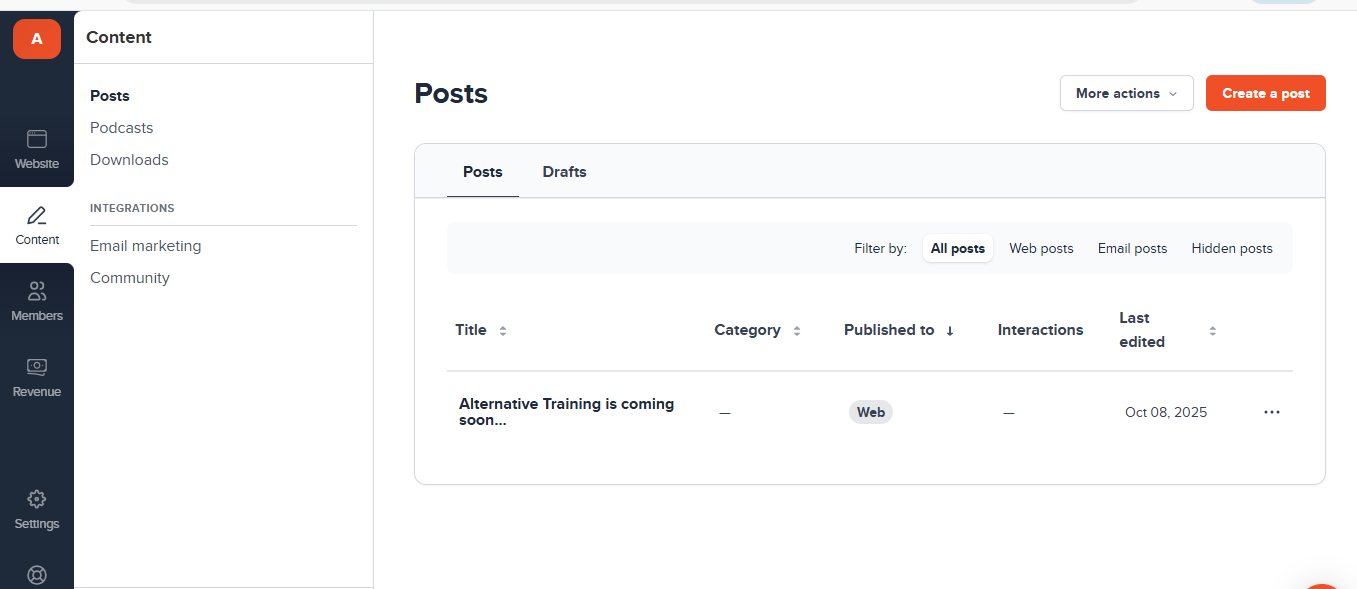
And for more data control, they view member activity, manage subscriptions, and email their audience.

On the revenue dashboard, you can track your money, net revenue, monthly recurring revenue, and paying members. You can view growth metrics and compare the performance of your different pricing plans.
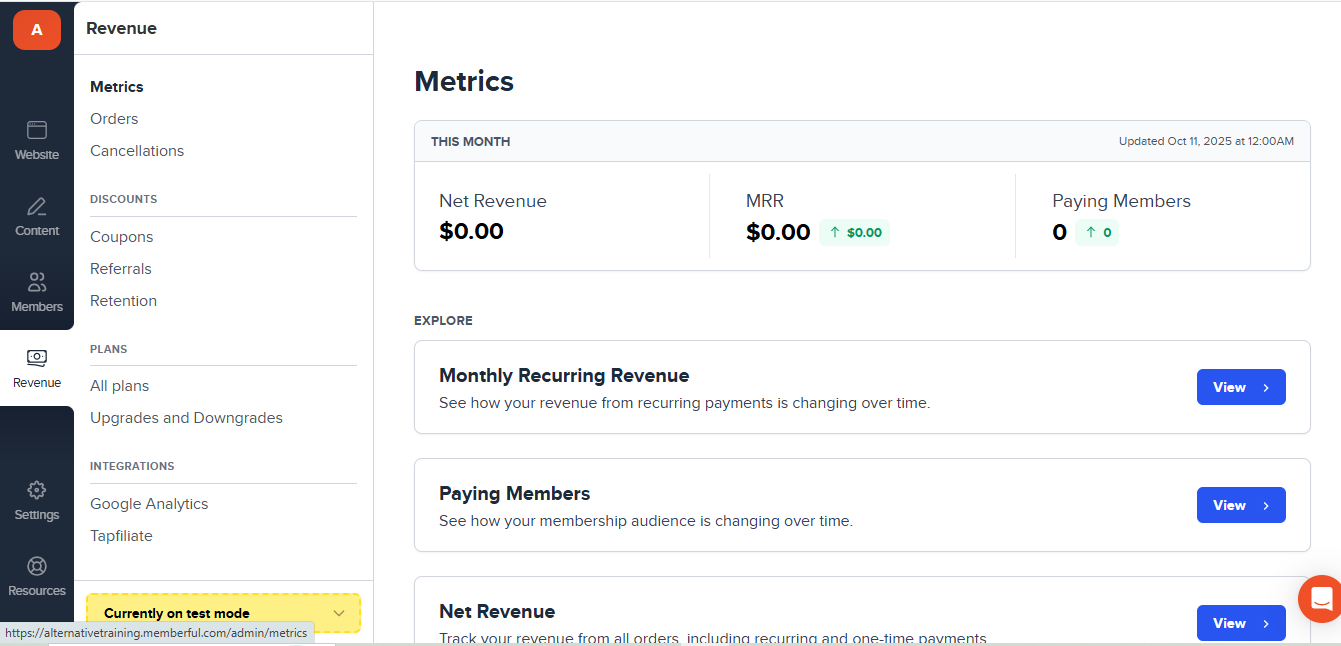
I can’t imagine going through the entire process of building a website only to become the only visitor, mainly for two reasons.
One, it’ll be pointless hard work, and two, it won’t earn me any money.
But what I don’t want to imagine at all is the point where I do start getting visitors, but can't turn them into members.
The cool thing about this Patreon alternative is that it has a members feature, which allows you to manage everyone who supports your content or services.
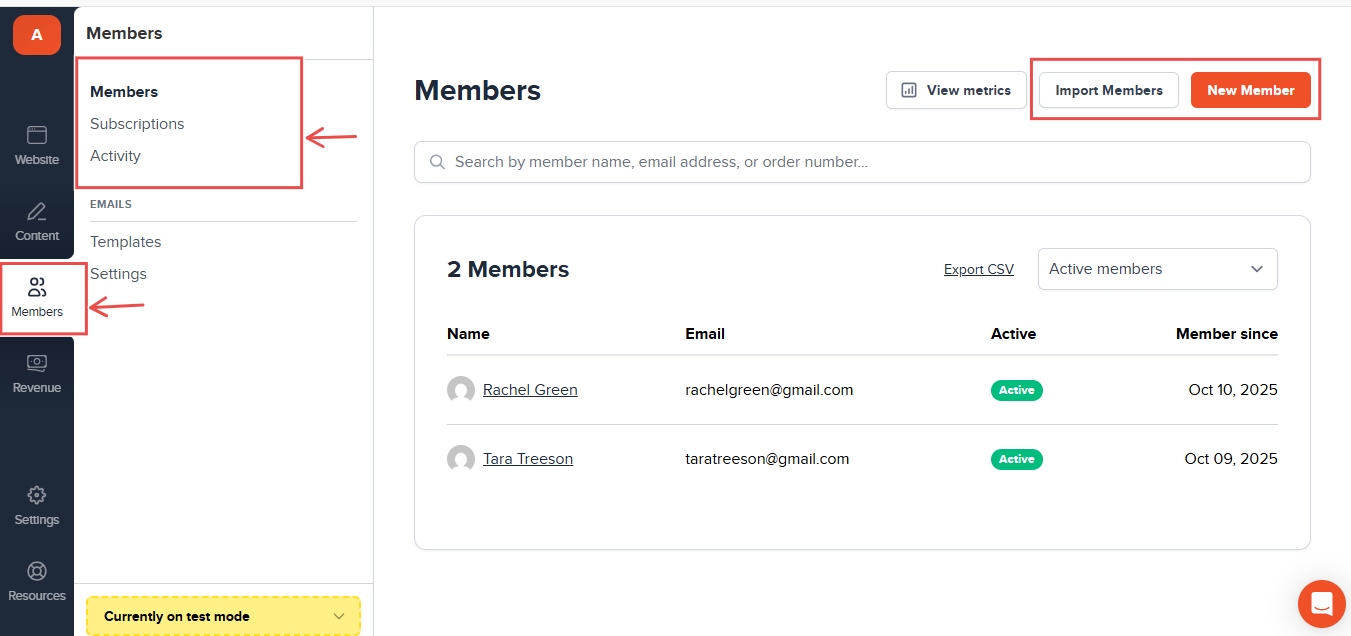
You can then add a member manually.
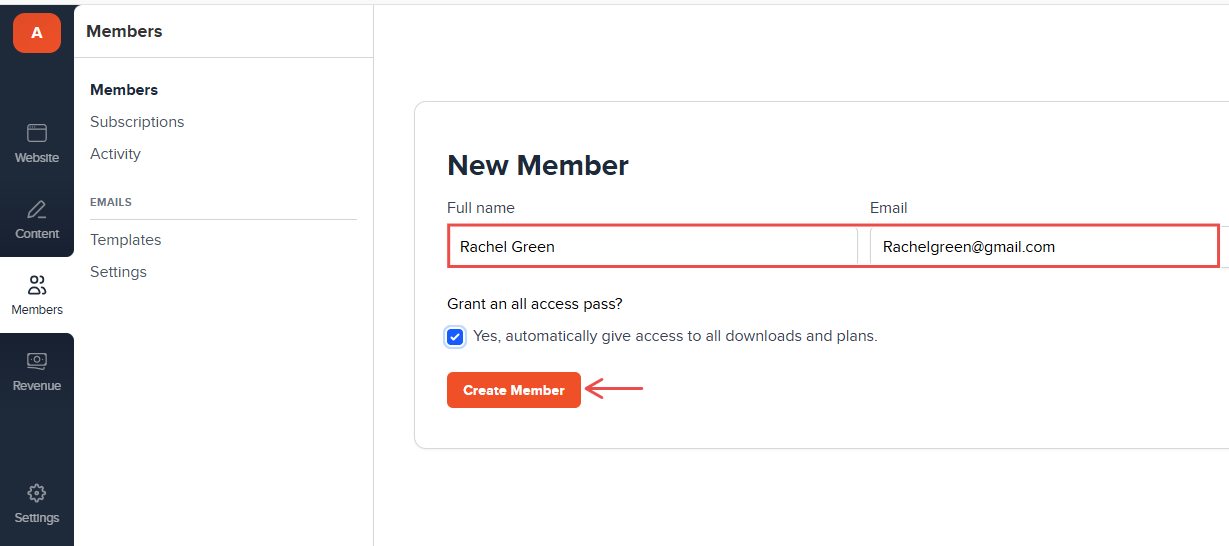
Now, take a look at Subscriptions. You can view all your active plans here.
And if you’re looking for a particular member’s subscription plan, just type their name in the search box.
You can view yearly plans that expire soon, for example. Click ‘Edit subscriptions’.

Select ‘Yearly’ and set an expiration range.
Memberful will show all matching subscriptions. If you want to extend access to specific members, this is where you do that.

Scroll a little further down to apply bulk actions.
You can:
- Set a new expiration date
- Extend expiration by a certain number of days
- Add a coupon code for discounts or promos.
For example, if you’re running a “Holiday Bonus Month,” you could extend all active subscriptions by 30 days, or add a coupon code called “HOLIDAY30” for the next billing cycle.

In the templates section, you can customize messages to fit your brand voice.

For example, you can personalize the current welcome message to something like,
“Welcome aboard! You’re now part of our growing community, and your support means a lot. You’ll start receiving exclusive updates, new content, and member-only perks right in your inbox.
If you ever need help or just want to say hi, reply to this email anytime.
The Team”
Type the new message, toggle the ‘send this email’ button, and save.
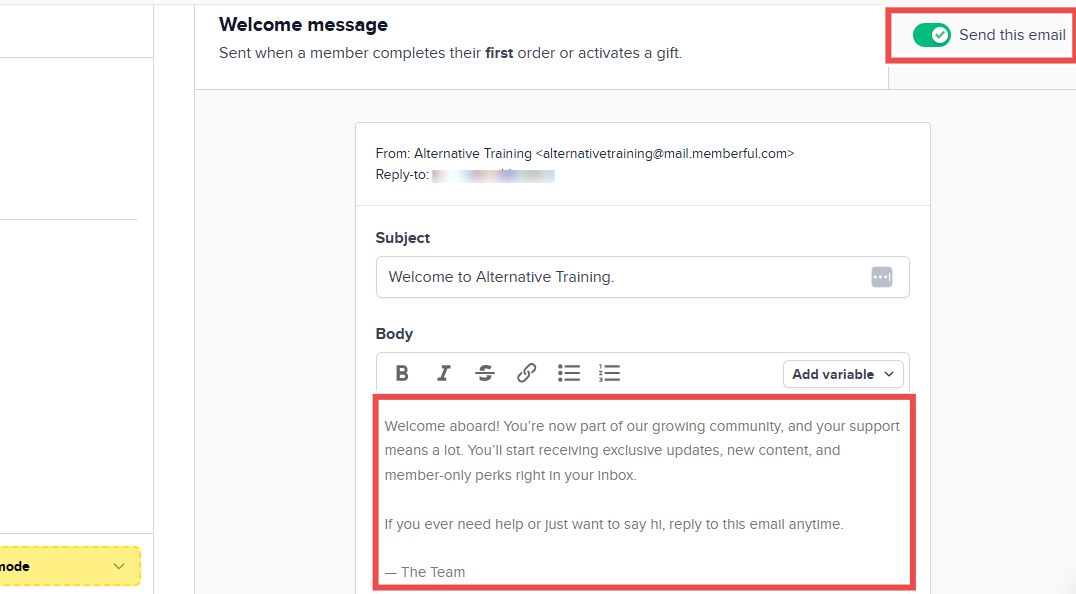
To keep a consistent branding, go to the email settings. Choose how you deliver messages, automatically through Memberful or through your own service and domain name.

Let’s do a quick test of our setup and send a sample email. Click ‘send a test email’ at the bottom of the settings page.
And voila!
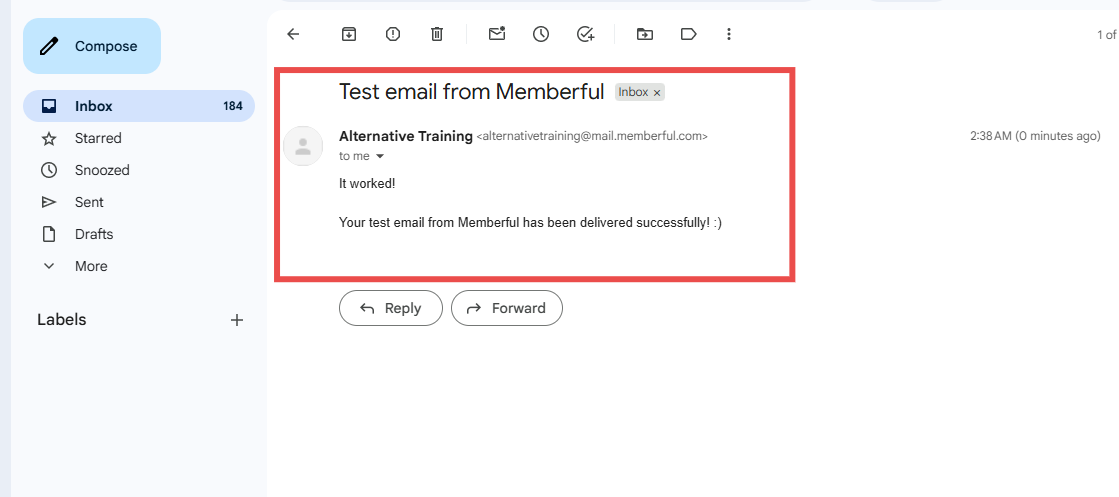
Now we’re ready to start welcoming members and managing subscriptions.
[fs-toc-omit]Features I loved
1. Website
The website section is where you control how your public site looks. This is what will attract people to your site.
Click on the little paintbrush logo next to branding.
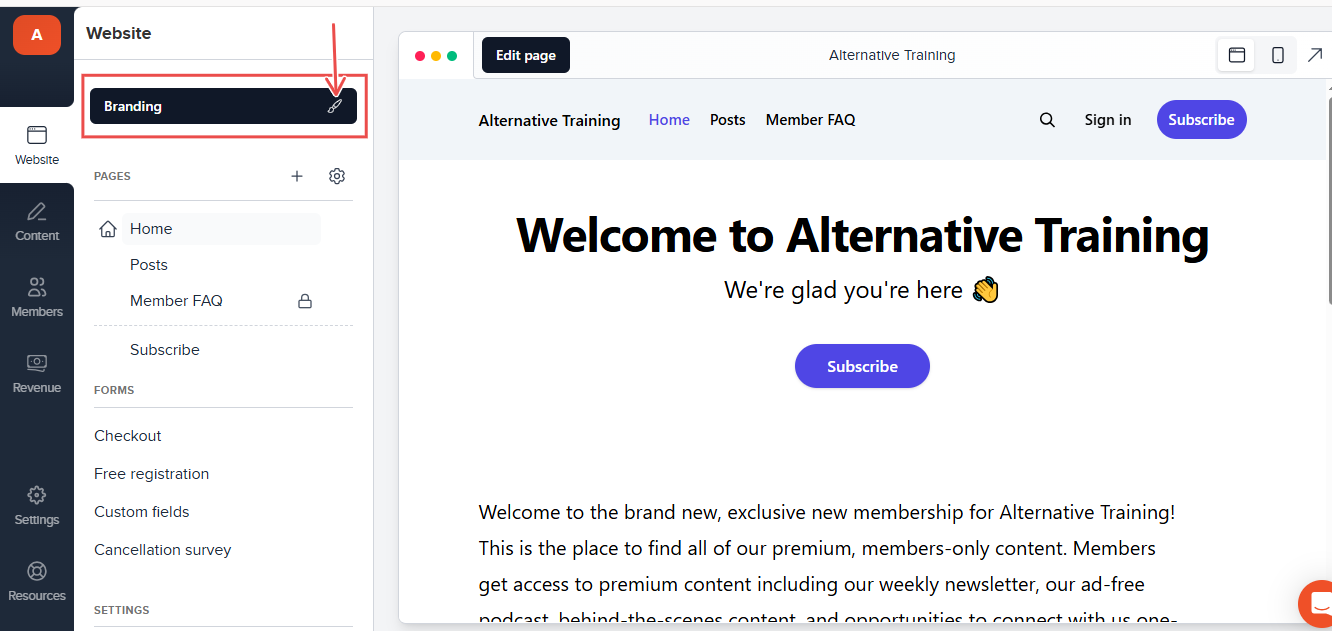
You can upload your logo, set the site name, and pick your colors or font.
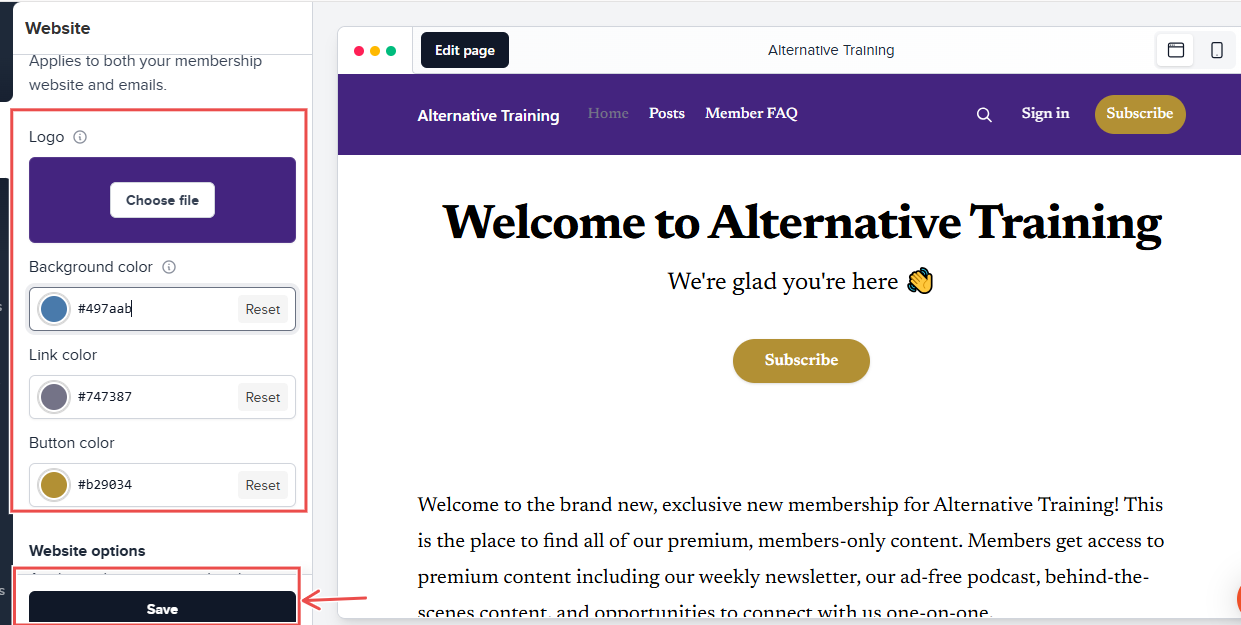
Next, go to pages and pick the page you want to work on. The automatic ones are home, posts, and FAQ. To add a page, click on the plus sign next to pages.

2. Content
Under the content feature in Memberful, we can add posts, podcasts, and ebooks. This means we can run our site as some kind of course platform where we upload materials.
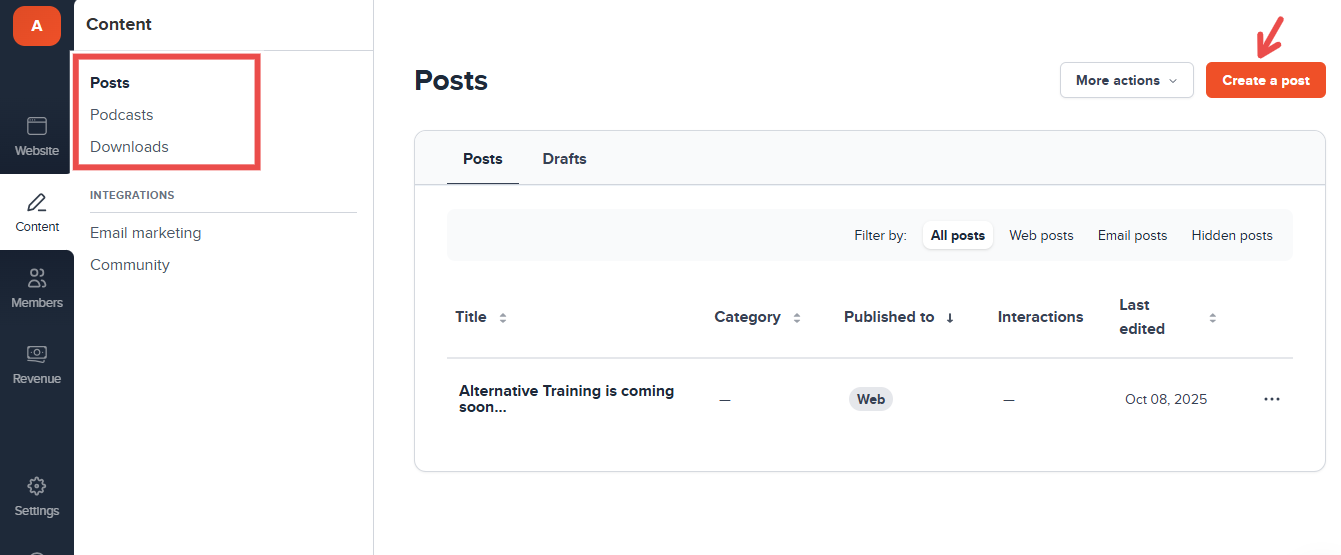
Under post settings, you can decide who will see the post. All members, active members on all plans, active members on select plans, or free and inactive members.
You can even enable likes and comments.
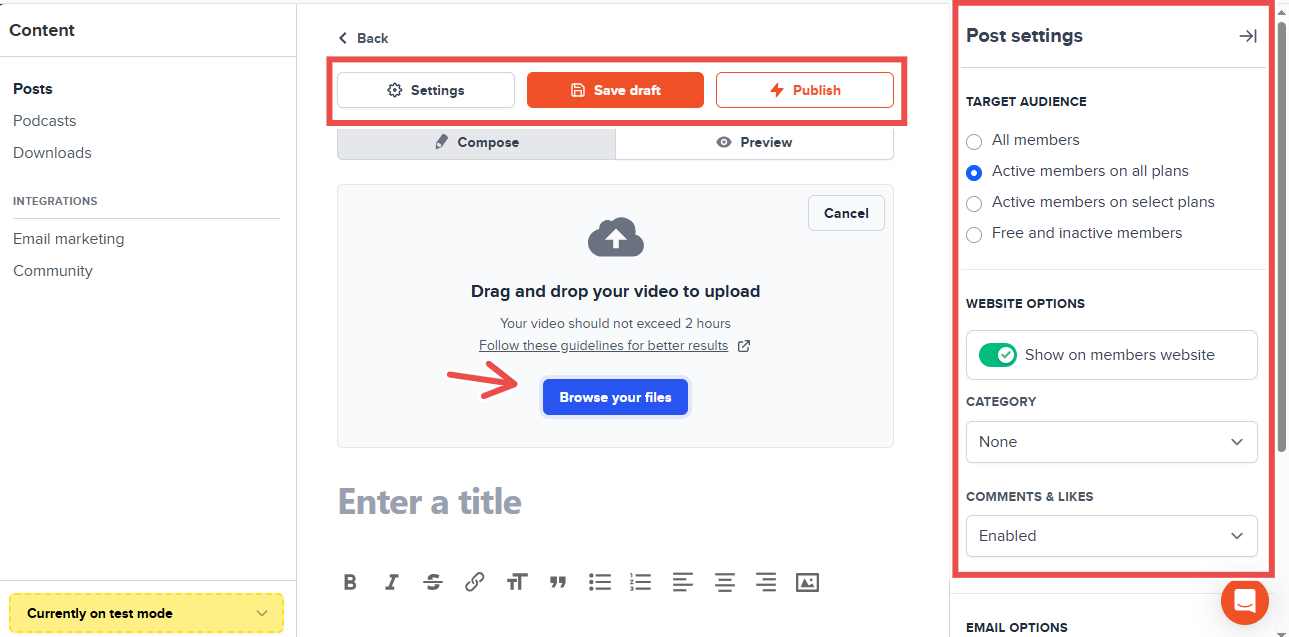
If you have a podcast, you can embed it in your Memberful site as well.
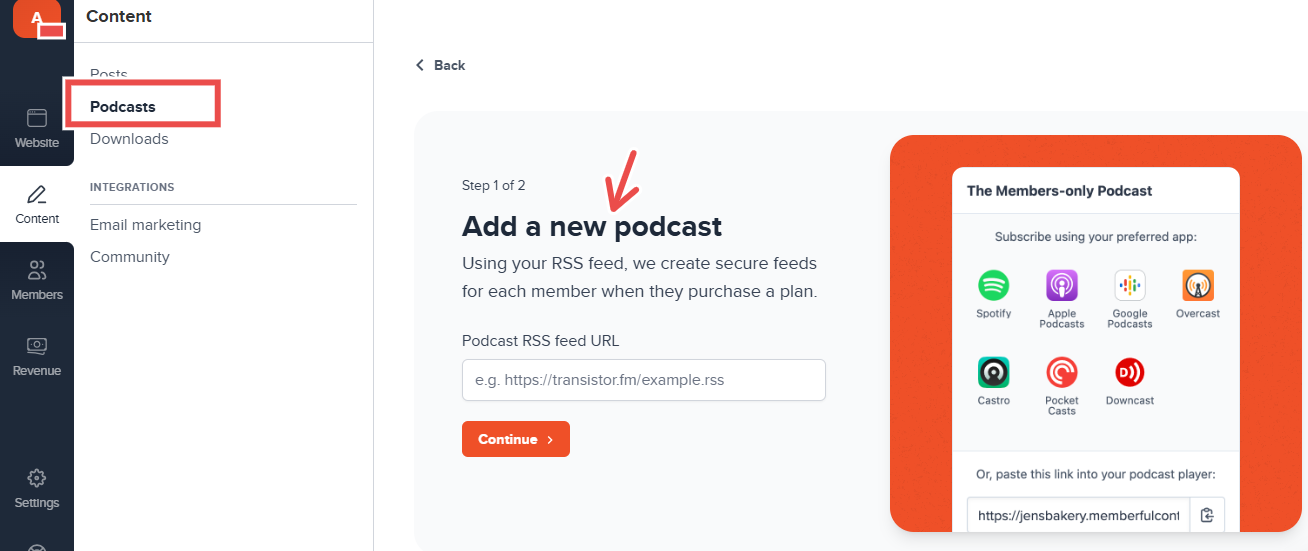
The Patreon alternative also has email marketing and community integrations. Integrate it with Discord, Mailchimp, Klaviyo, Campaign Monitor, and other similar third-party apps.
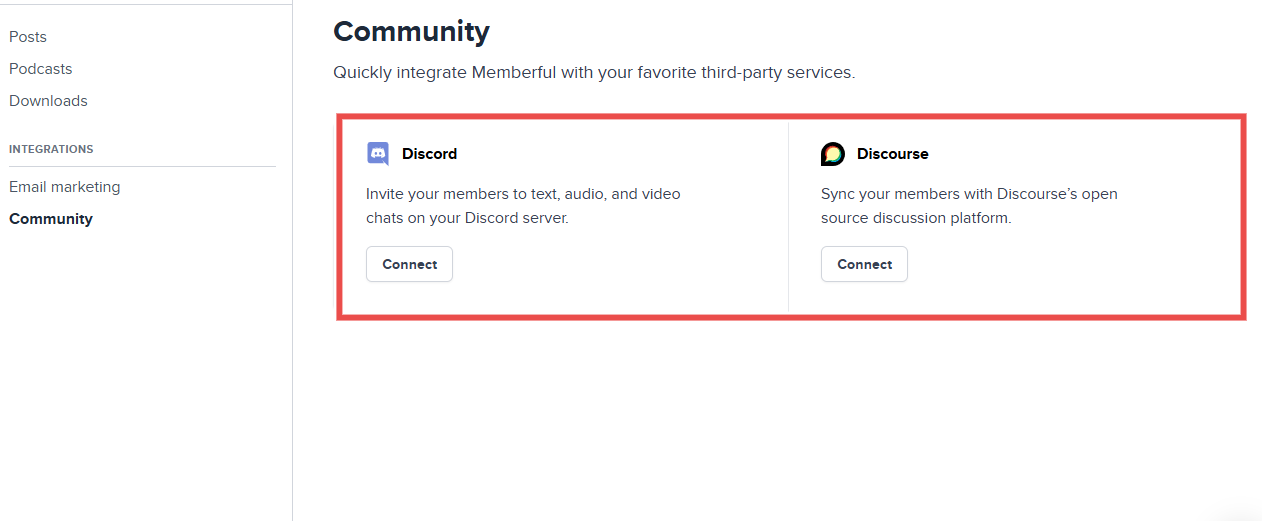
[fs-toc-omit]Best for
- Memberful is best for small creators, YouTubers, coaches, or podcasters.
[fs-toc-omit]Pricing
- $49/month + transaction fees
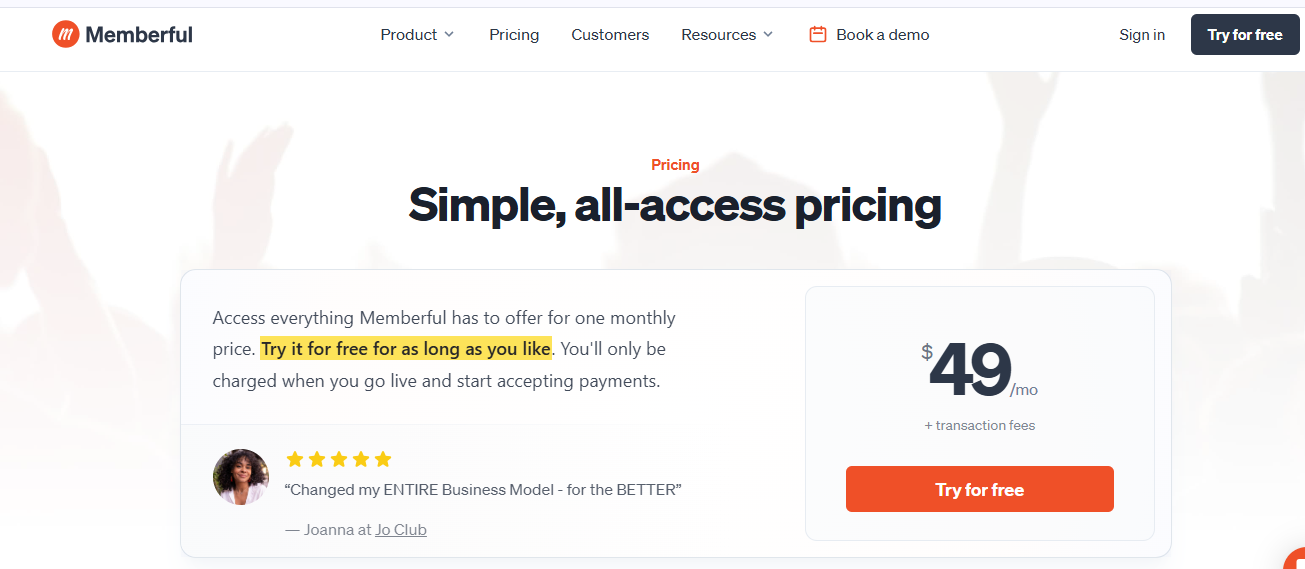
6. LearnWorlds
Rating: ⭐⭐⭐⭐ 4/5 stars | Starting price: $29/month | Integrates with: Mailchimp, ConvertKit, Moosend, Zapier | Best for: Creators, coaches, and training institutions
Last but not least on our list of best Patreon alternatives is LearnWorlds. It comes with many features for building interactive lessons, tracking lessons, and growing businesses.
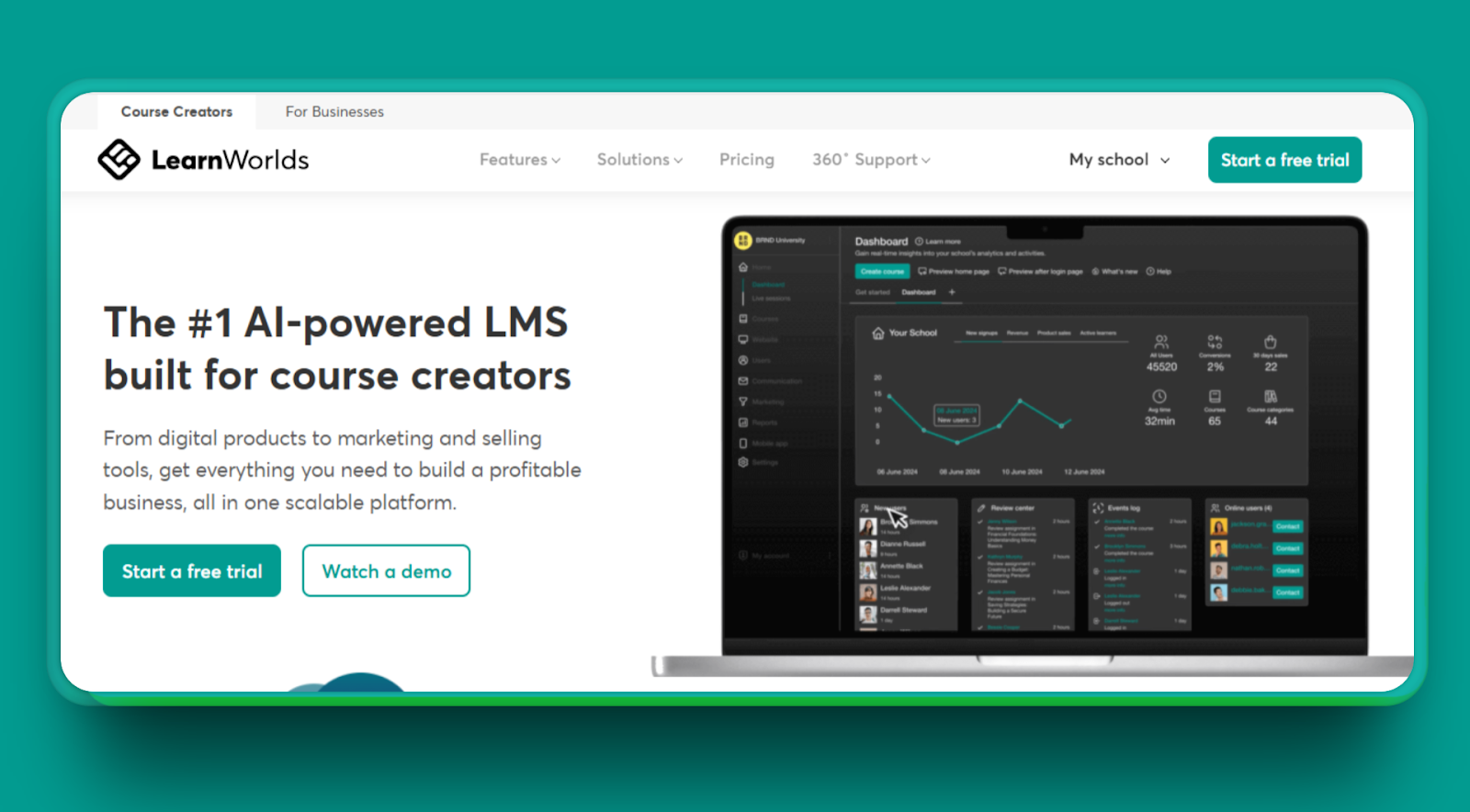
Take the courses and programs feature, for instance. Users create a gradebook, certificates, review centers, question banks, and course forms. It’s the ideal set for any course creation platform.
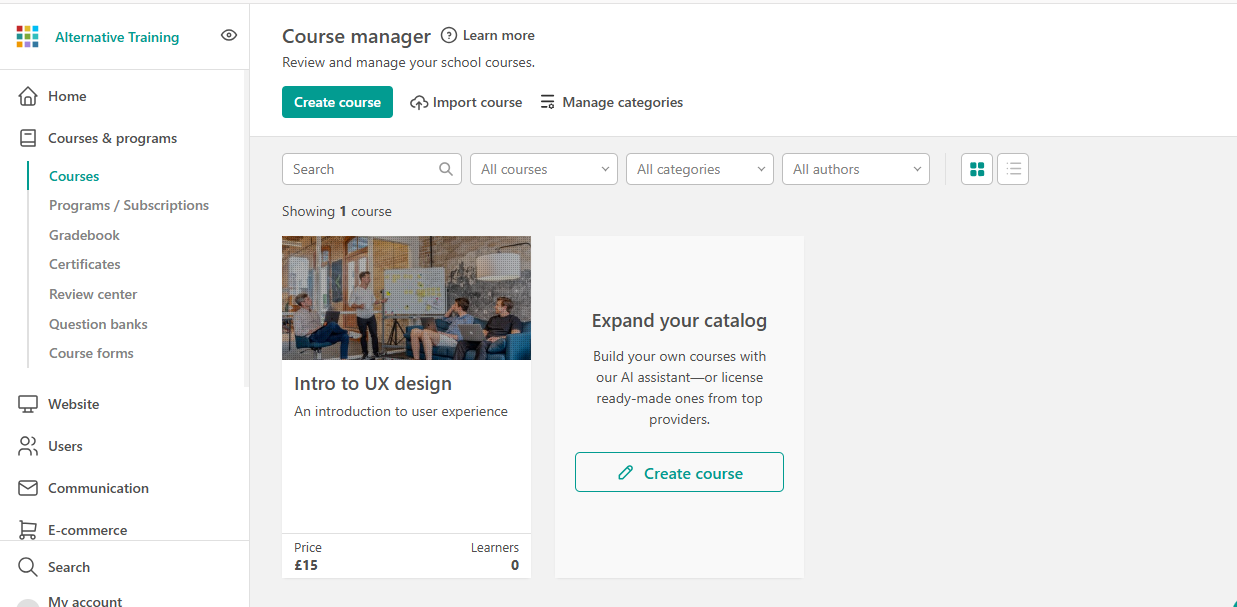
In addition, there’s a website feature that helps you design, add pop-ups, and insert funnels to your school site.
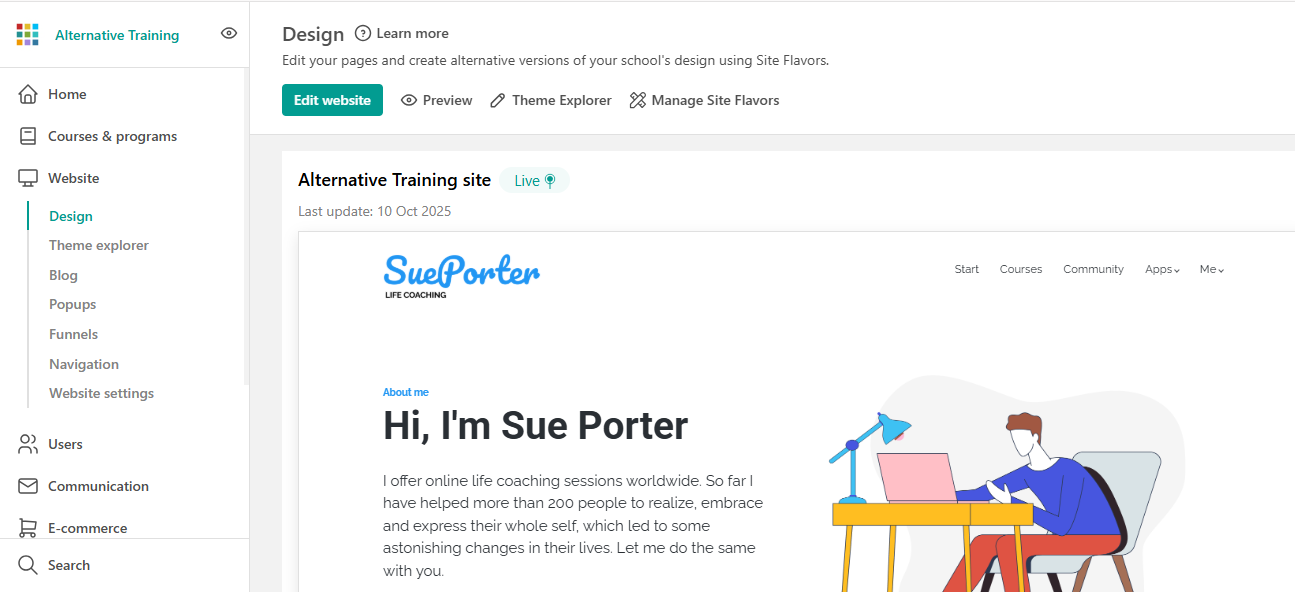
The users tool is where I manage my school’s users, define roles, collect, track, and segment leads.

LearnWorlds also has a community space where I can chat with students. I could write posts and allow members to comment.
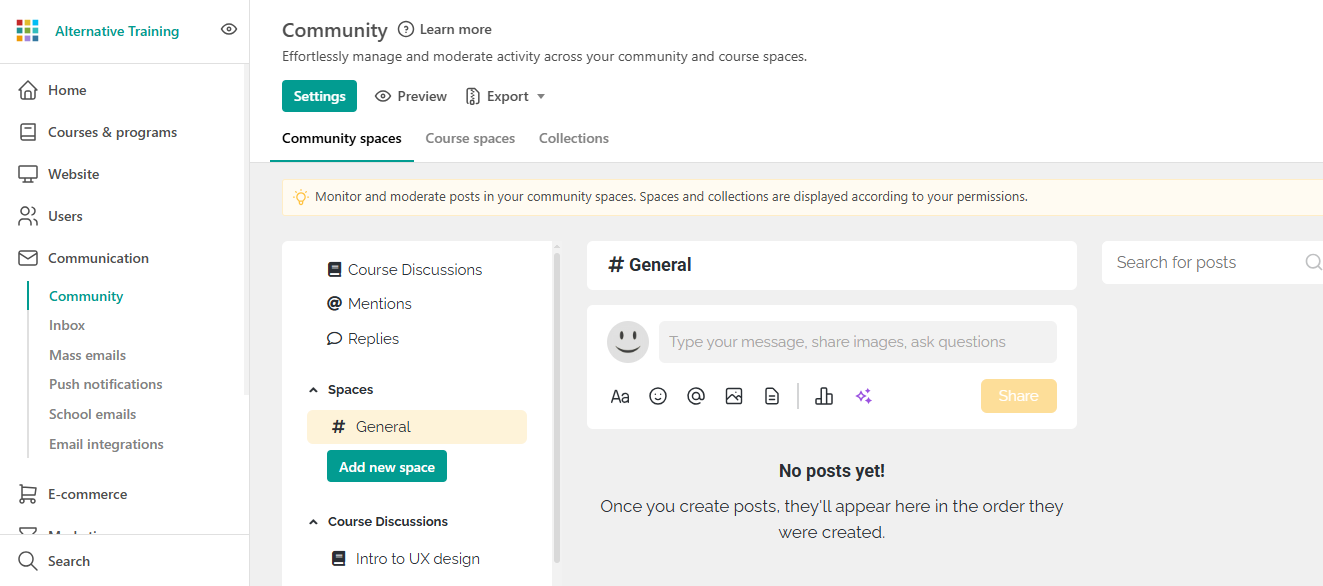
How about we create a course inside LearnWorlds?
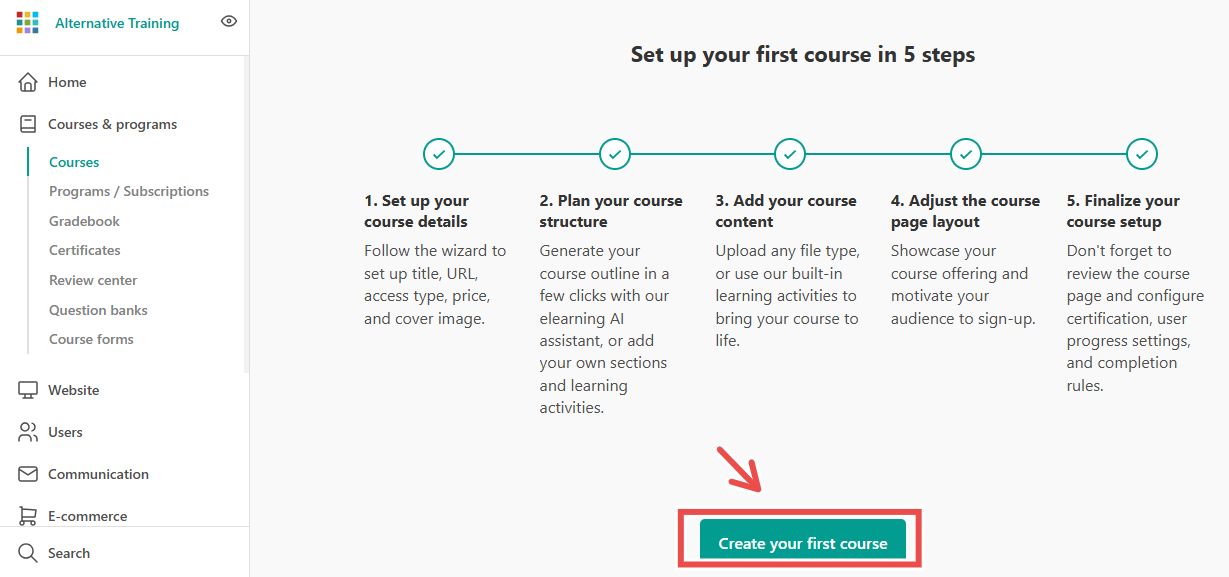
Click ‘create your first course.’ That opens a wizard where you fill in some course details. Course name, description, etc.

For the next step, I want to try LearnWorld’s AI assistant.
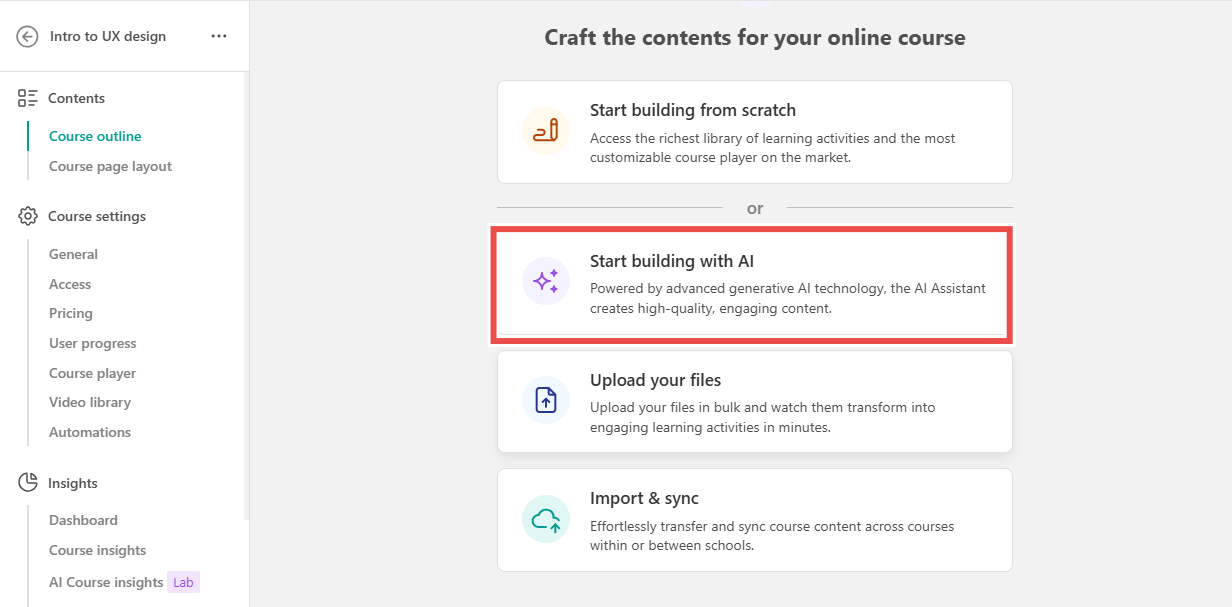
Next, select the learning activities you want to use and click ‘generate.’ If you scroll down, you can also set the number of sections, add key topics, and describe the course audience.
The AI tool did the heavy lifting. Let's generate and continue.
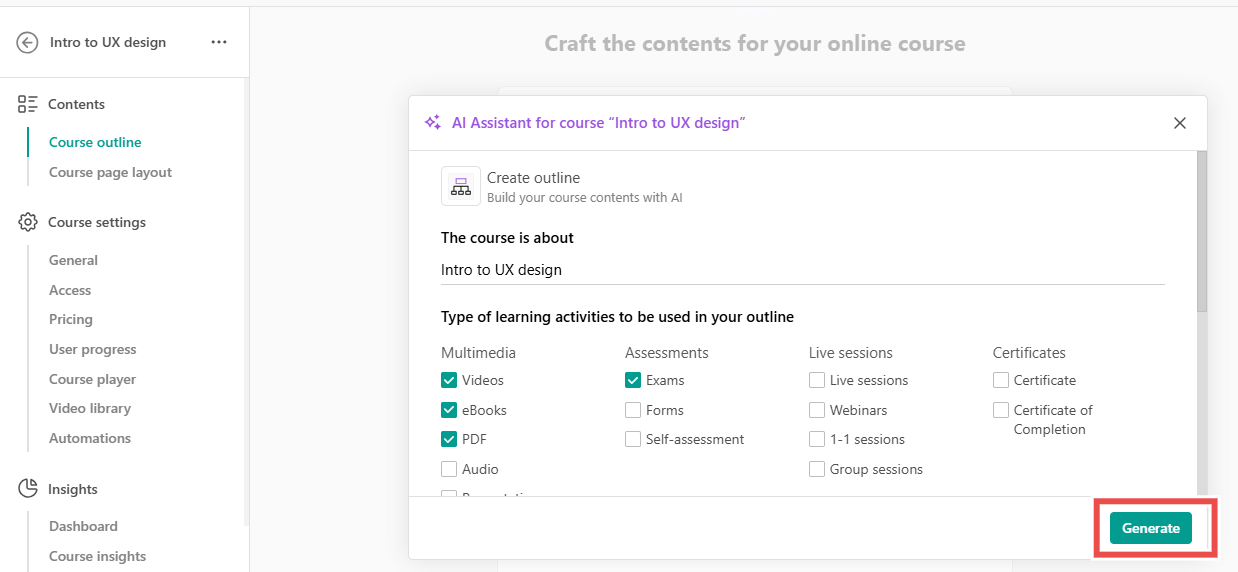
Now, I’ll choose ‘Create activity with AI’
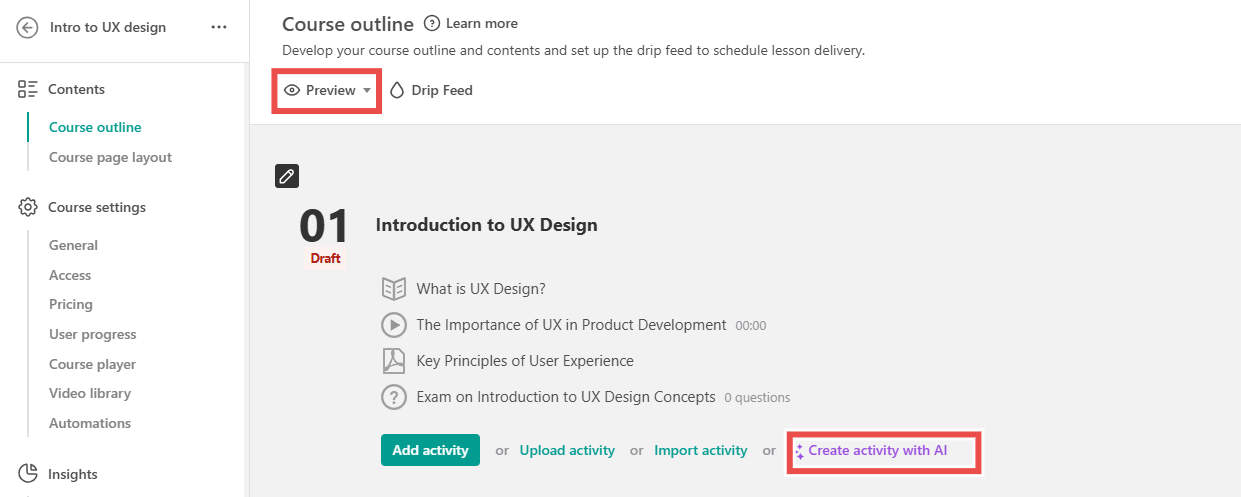
Click on the plus sign (+) next to the lesson title to add an activity.
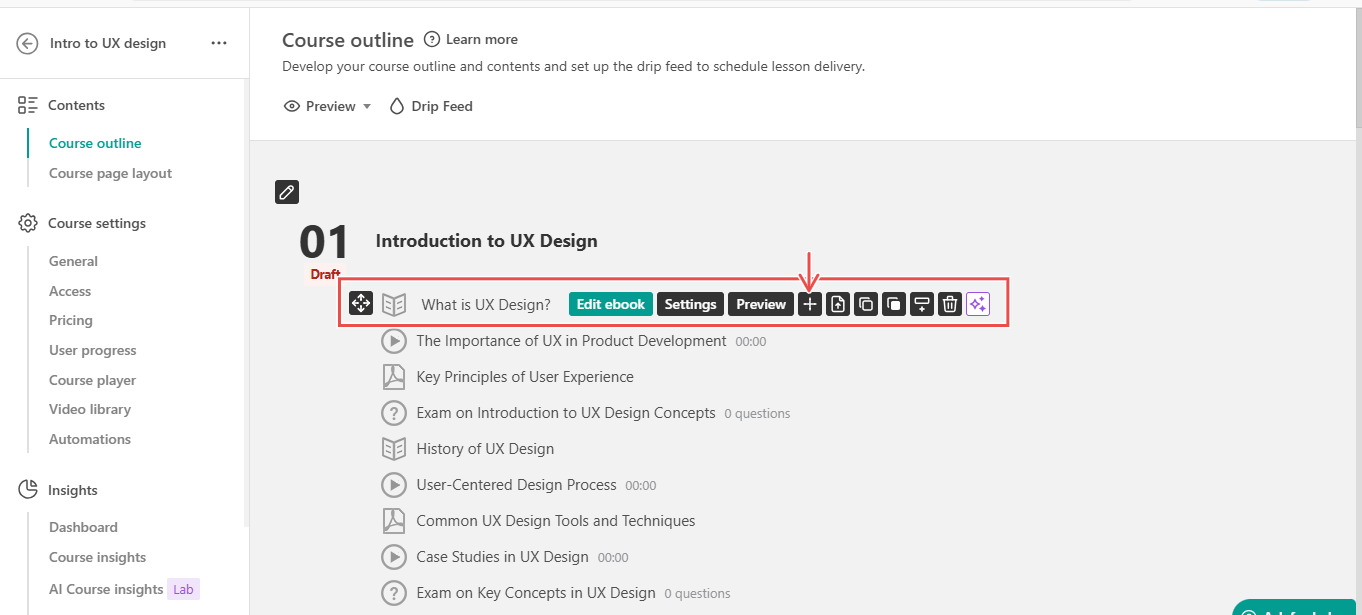
I’ll scroll down and add a YouTube video to my lesson.
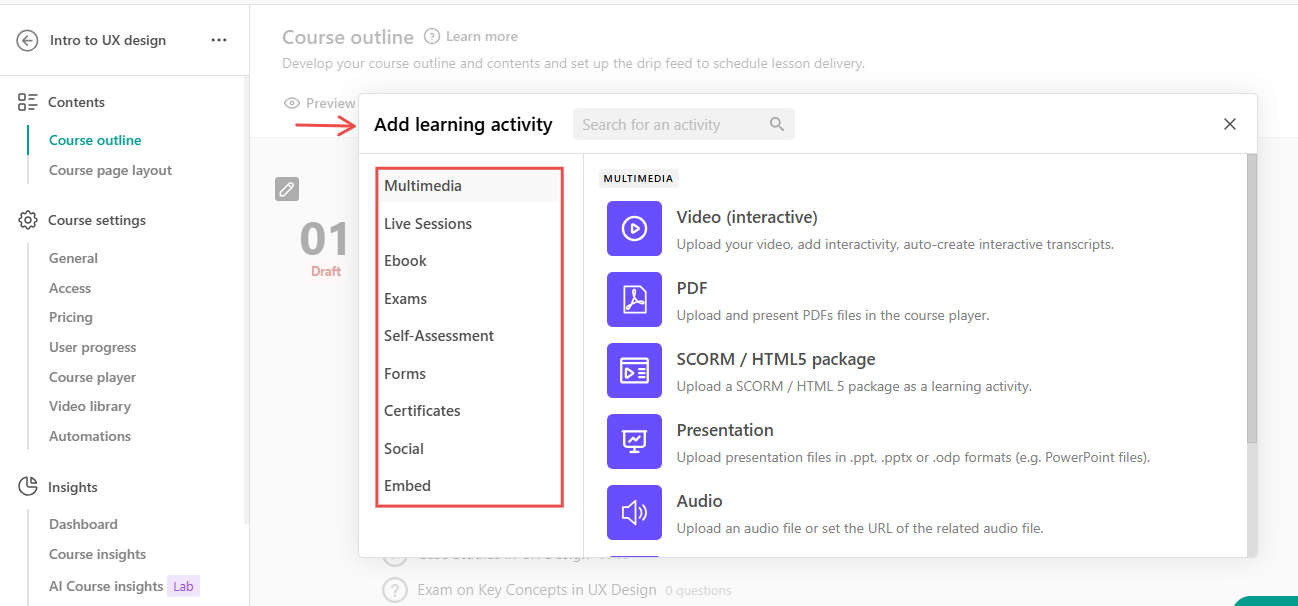
Add the video title and description, then save.
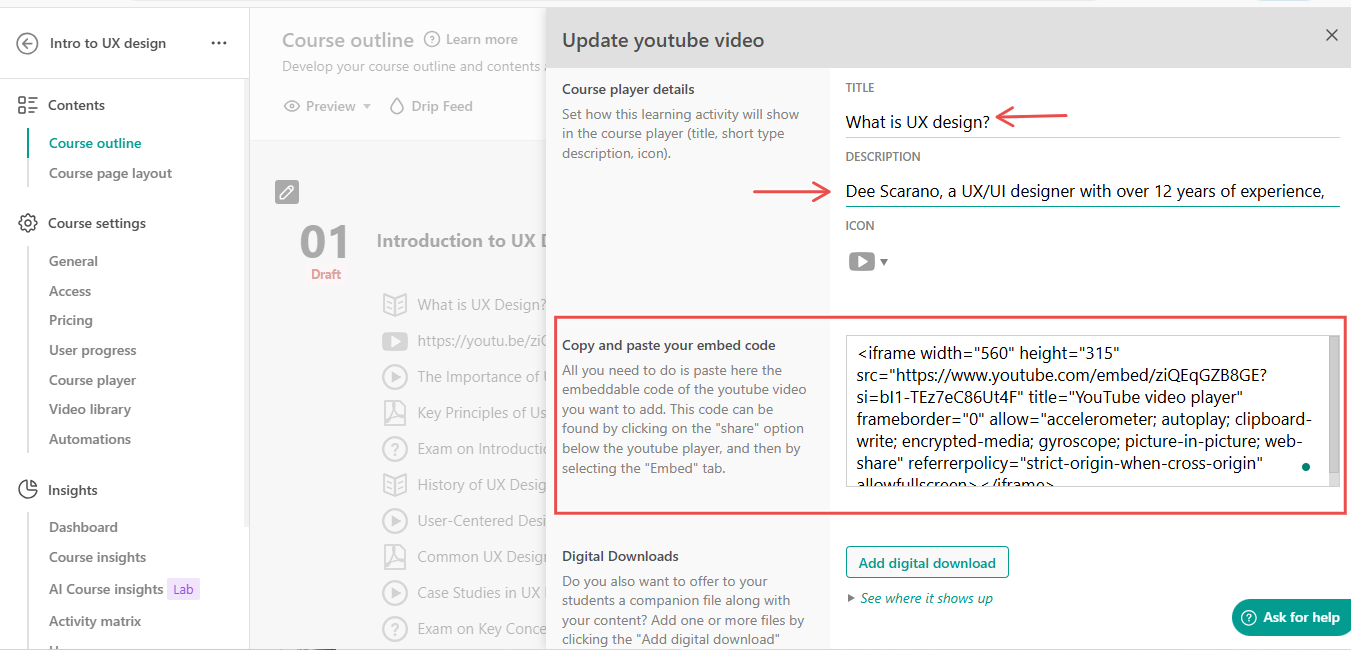
Your video is now embedded.
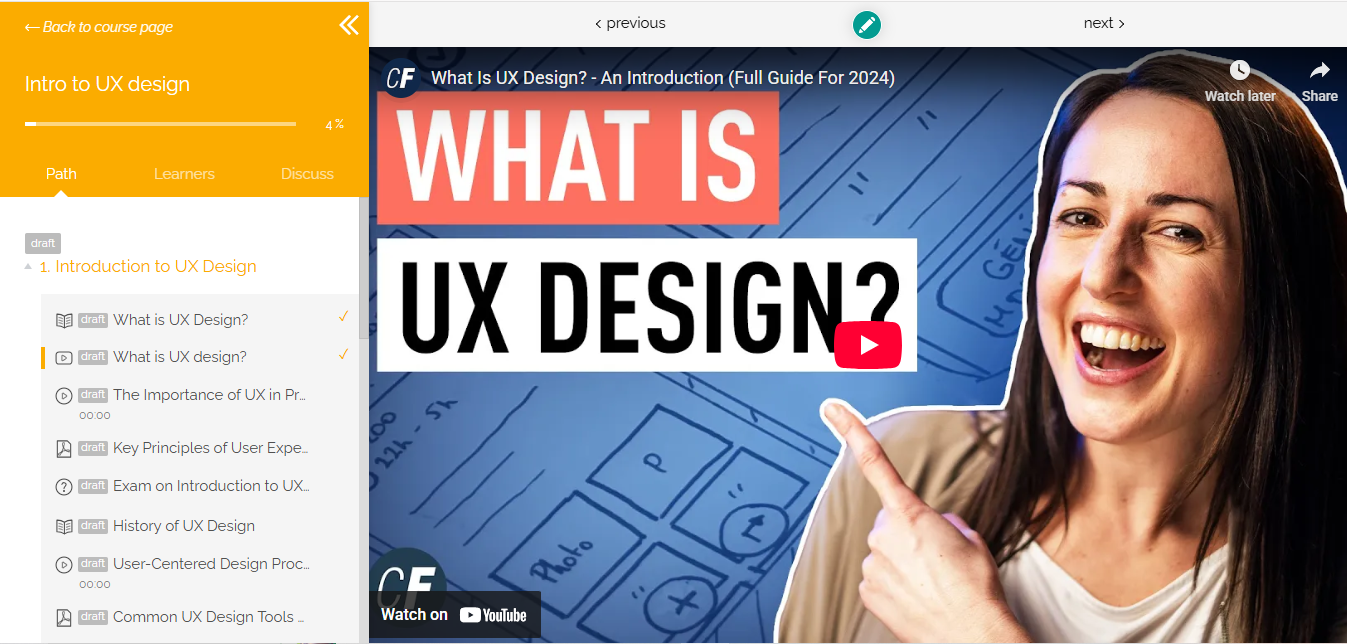
Use a similar process to add other learning materials and activities.
Even though our course creation isn’t 100% complete, we can see that it’s already looking good.

[fs-toc-omit]Features I loved
1. Website
With the Website feature, you design a site for your school.
Click ‘Edit Website.’

Once that page is open, you use the bar at the top to edit the website in different ways.
For example, you change the color, typography and buttons, and layout.
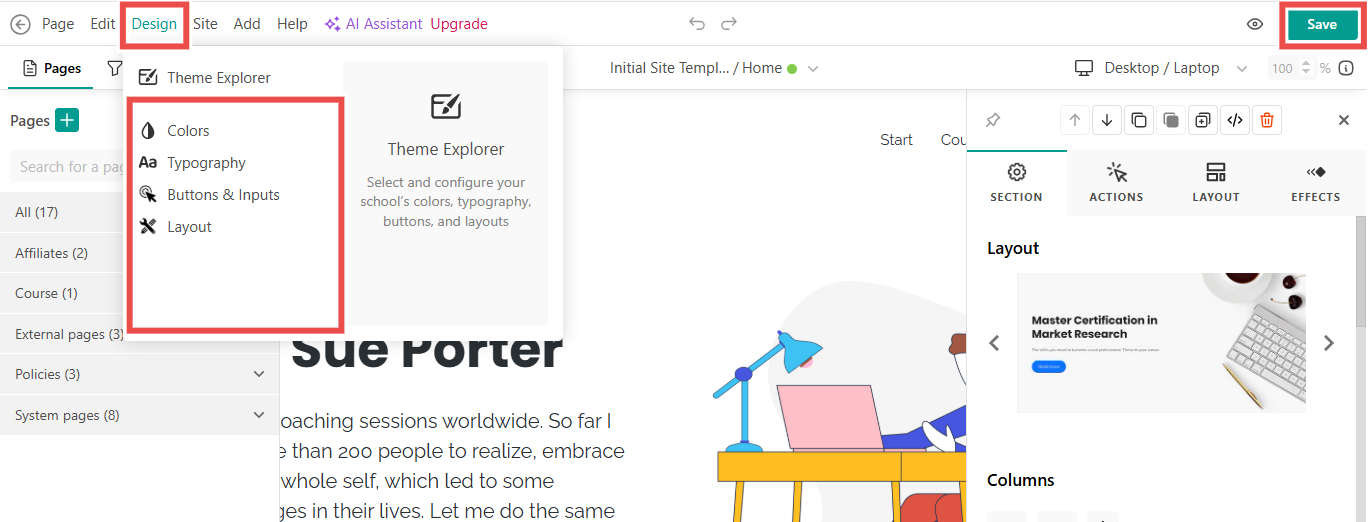
You add a blog to your website where you answer the pressing questions your users have.
Here you list your courses and your community so that more people can discover your school via search engines.
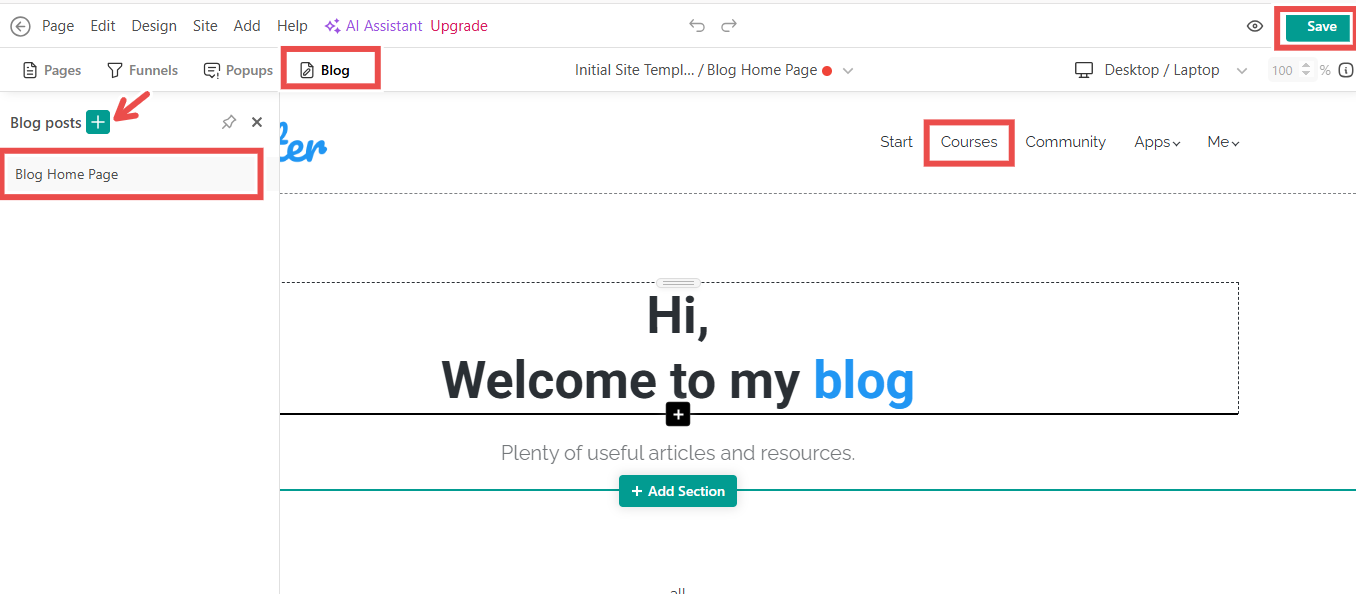
2. Users
LearnWorlds also allows you to manage user roles while managing leads. We add users manually or import them from an Excel file.

You are running a school platform, so you have team members with different roles.
Some are admins, developers, or website developers. Others are marketers or customer support agents, and more. If you want more, assign custom roles.

What’s more, LearnWorlds is a Patreon alternative that you can use to organize and generate leads.
Click on leads under the users, and access three lead collection methods: page funnels, email grabbers, and marketing forms.

Finally, nurture your leads using Mailchimp and convert them into paying customers.

[fs-toc-omit]Best for
- LearnWorlds is best for agencies or companies offering digital products to increase their leads.
[fs-toc-omit]Pricing
- Starter – $29/month
- Pro Trainer – $99/month
- Learning Center – $299/month
- High Volume & Corporate – Custom pricing
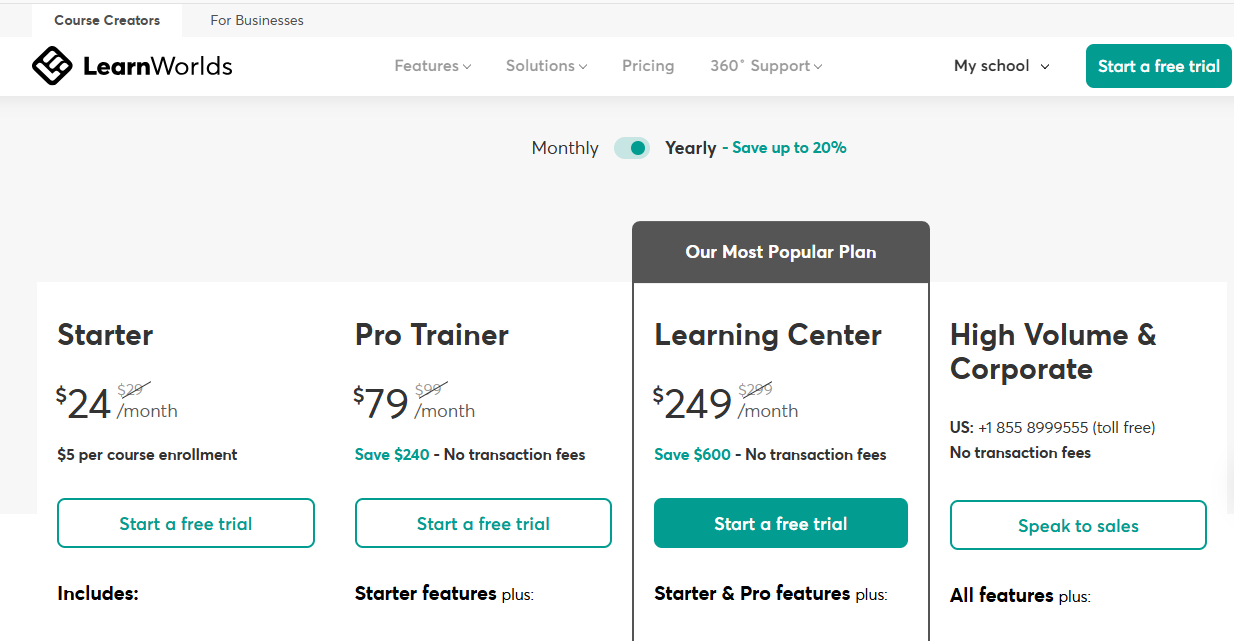
How to choose the best Patreon alternative
To choose the best Patreon alternative, you should:
- Identify your business needs
- Consider essential features
- Compare pricing and ROI
- Check workflow and integrations
Now, let me explain each key factor in detail.
1. Identify your business needs
You must identify your business needs when choosing the best Patreon alternative. These are what you need as a creator or coach to run your business smoothly.
As a new creator, you had very basic needs when you wanted to paywall your content. All you wanted was a simple platform that asks people to pay $5/month to access premium content. Then, you just had to send traffic to that page.
If you are a YouTuber, you are familiar with this:
"Check out my Patreon below if you want to access content seven days before others. You will also have a custom badge next to your comments under my videos."
That was all you needed to make $500-$1500/month.
But if you are reading this blog post, it’s possible that your needs may have changed. If you want to make more money online, you might be considering:
- Selling merch,
- Selling online courses, services, templates, and events,
- Giving lead magnets to get more qualified leads,
- Not paying extra for one-time purchases,
- And much, much more.
In simple terms, your goal may be to grow your audience beyond just asking them to pay for early access.
If these are your needs, you definitely need an alternative to Patreon. You need a tool that allows you to do everything you want in one place.
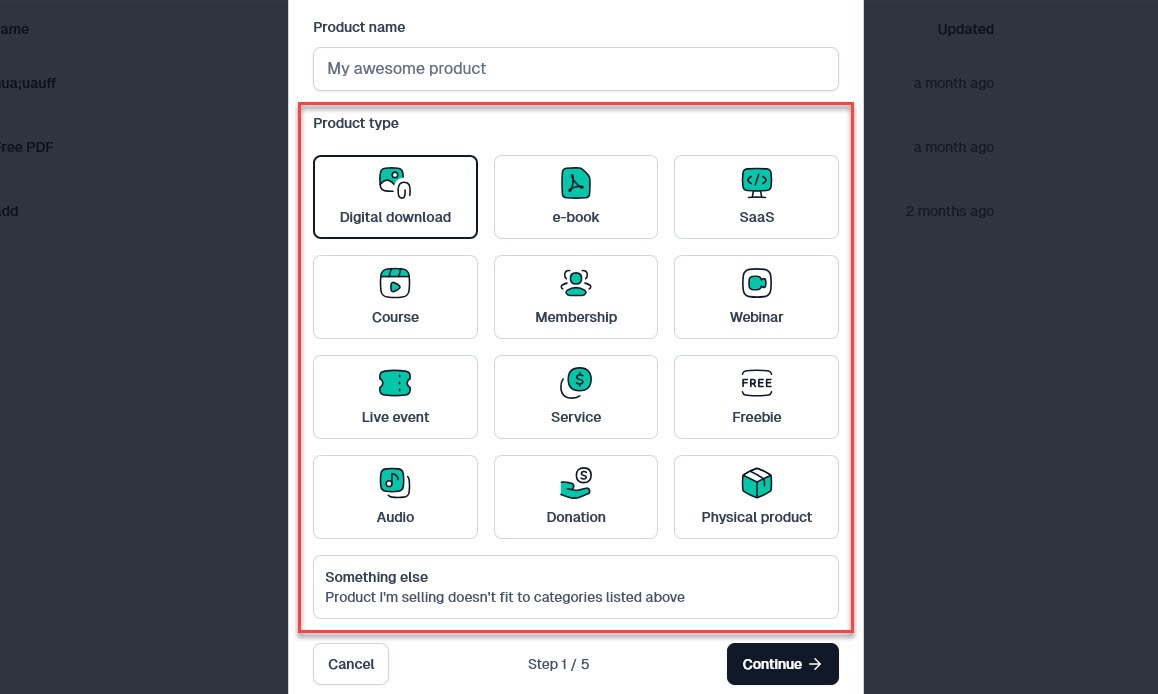
2. Consider essential features
The next step is to think about essential features. The tool must have everything you need to solve the problems you discovered above.
For example, if you want to sell courses and memberships, you might want to consider a platform that allows you to
- Create and host your course modules natively and not on third-party platforms
- Easily sell through a 1-click checkout and reduce abandonment
- Control your course or module availability with scheduling options
- Recover lost sales with a checkout recovery feature
For example, if you want to sell courses and memberships, you’d want to
- Host your course and unlock it for people who pay,
- Remove access from people who stop paying,
- Process your payments quickly with Stripe and
- Manage members by seeing who paid (and for what).
Another essential feature is website creation. It's one of the best ways to increase trust since you show your expertise.
And now, you can generate a full website with AI.
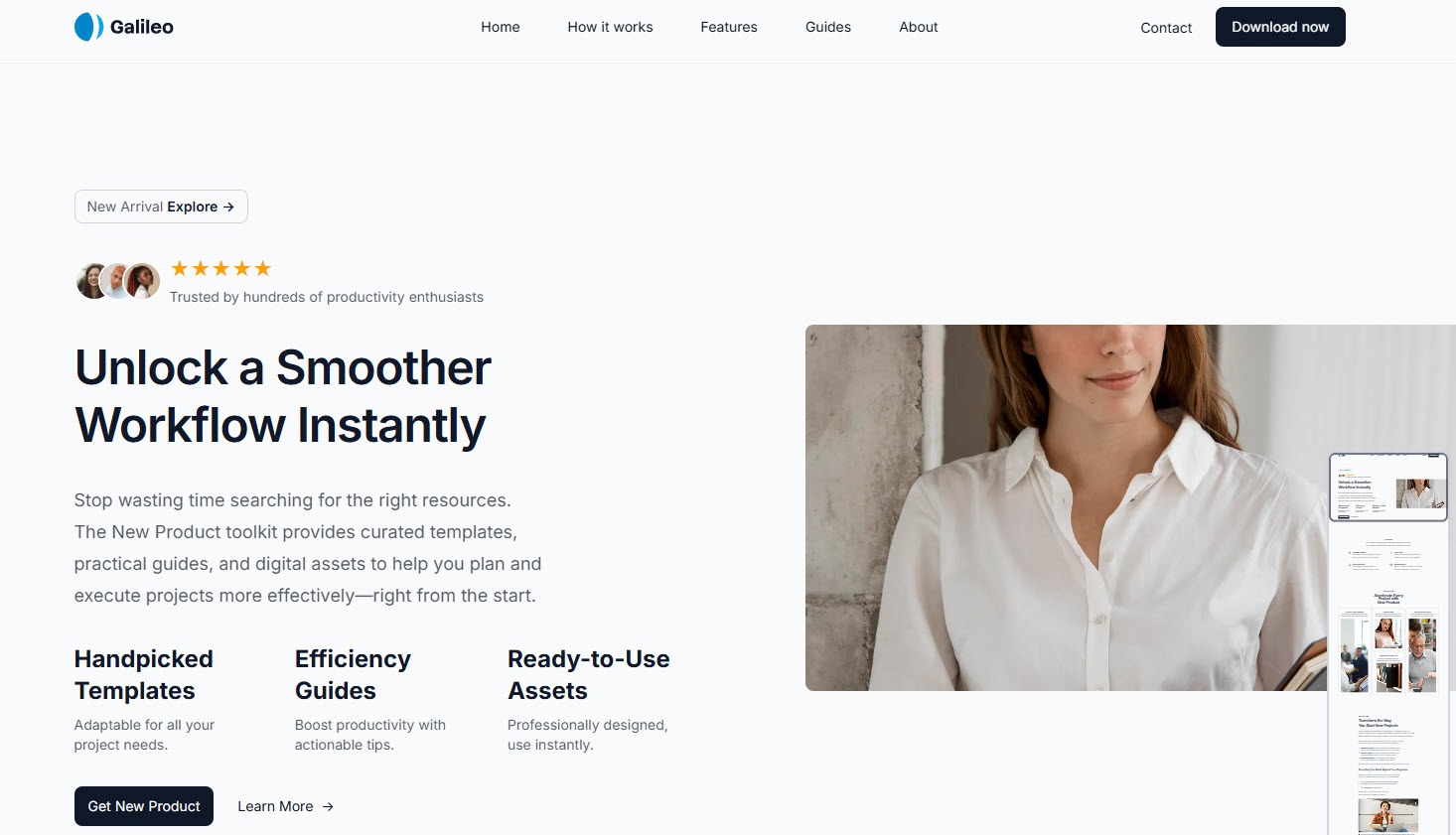
If you want people to promote your product in exchange for a commission, you need an affiliate program feature.
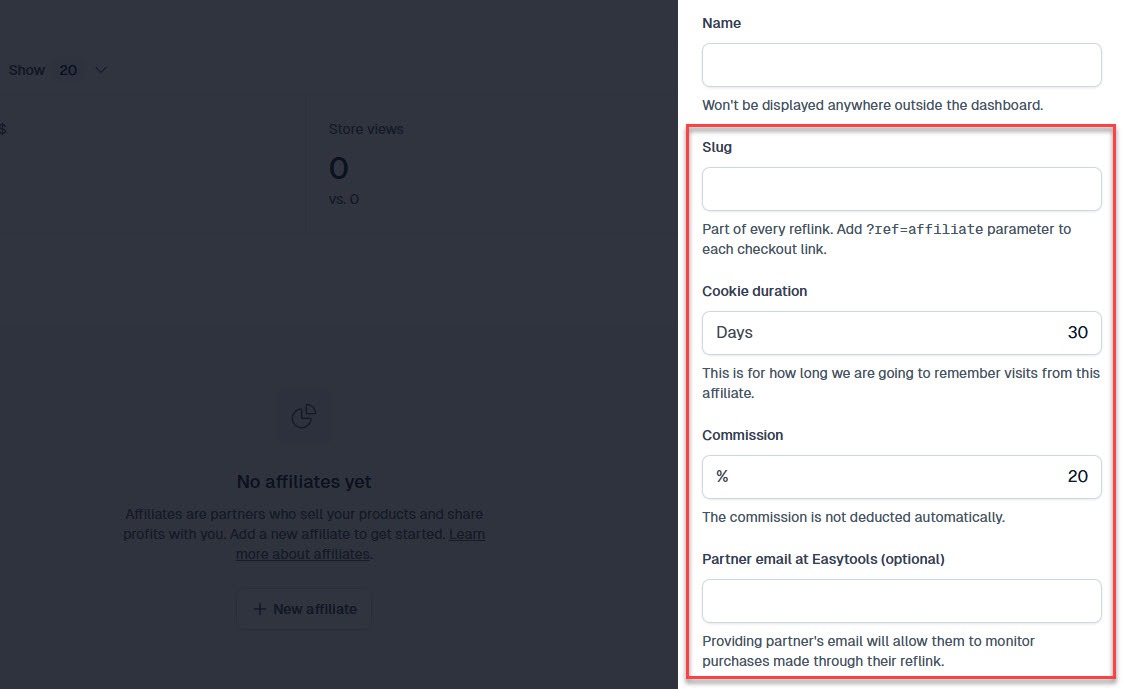
Last but not least, the Patreon alternative should help you track revenue, checkout sessions, customers, and active subscribers. That’s how you can tell what's working and what needs to improve.

For example, let's say analytics help you identify that some customers cancel their subscriptions at a certain course module. Say the part when they have to learn 7th, 9th, and 13th chords (in music theory).
So you decide to re-record that part and make it easier to understand. You don’t want to stay the jazzman you are and scare them off with technical John Coltrane “giant steps.”
I could go on talking about all these essential features, but I’m sure you get the point. These features will decide whether or not you stay in business.
3. Compare pricing and ROI
Next, compare pricing and think about return on investment (ROI).
Most Patreon alternatives offer free trials to help you test the features. I've noticed that they usually last 7 to 14 days, depending on the platform.
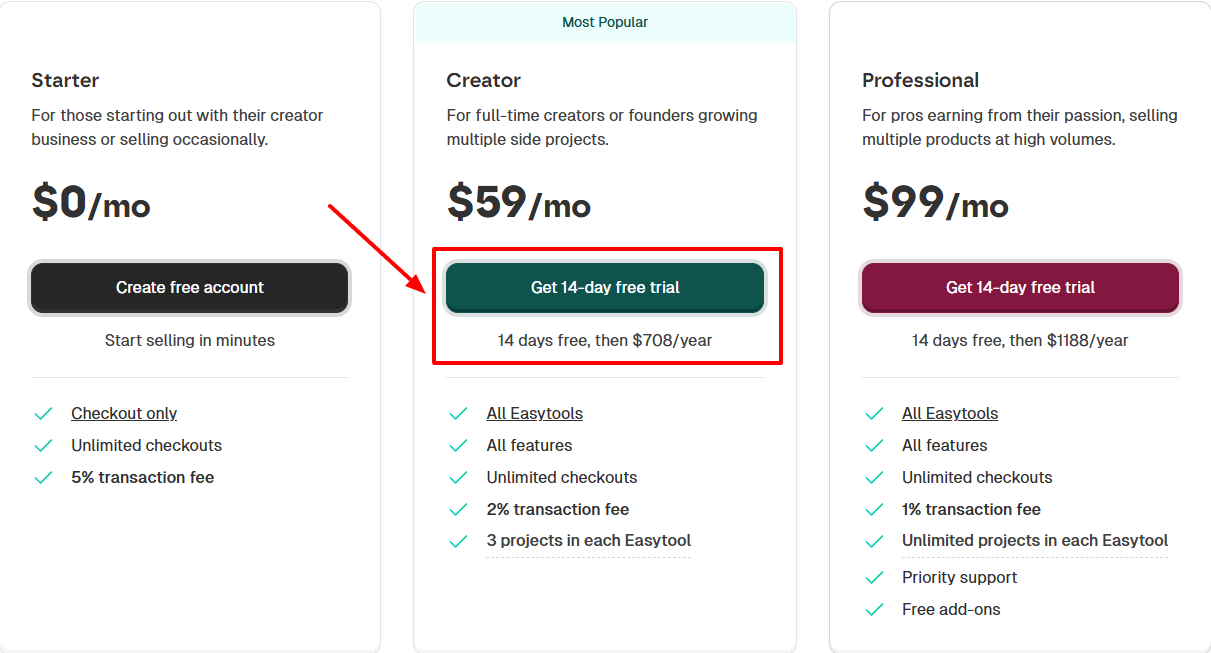
Plus, you must check the platform's monthly cost and if it has transaction or hidden fees.
Let’s take an example with Patreon itself.
The platform is free to start. However, when you start earning, you pay a platform fee. It's 10% of your monthly income.
This is their new pricing introduced on August 4th, 2025.
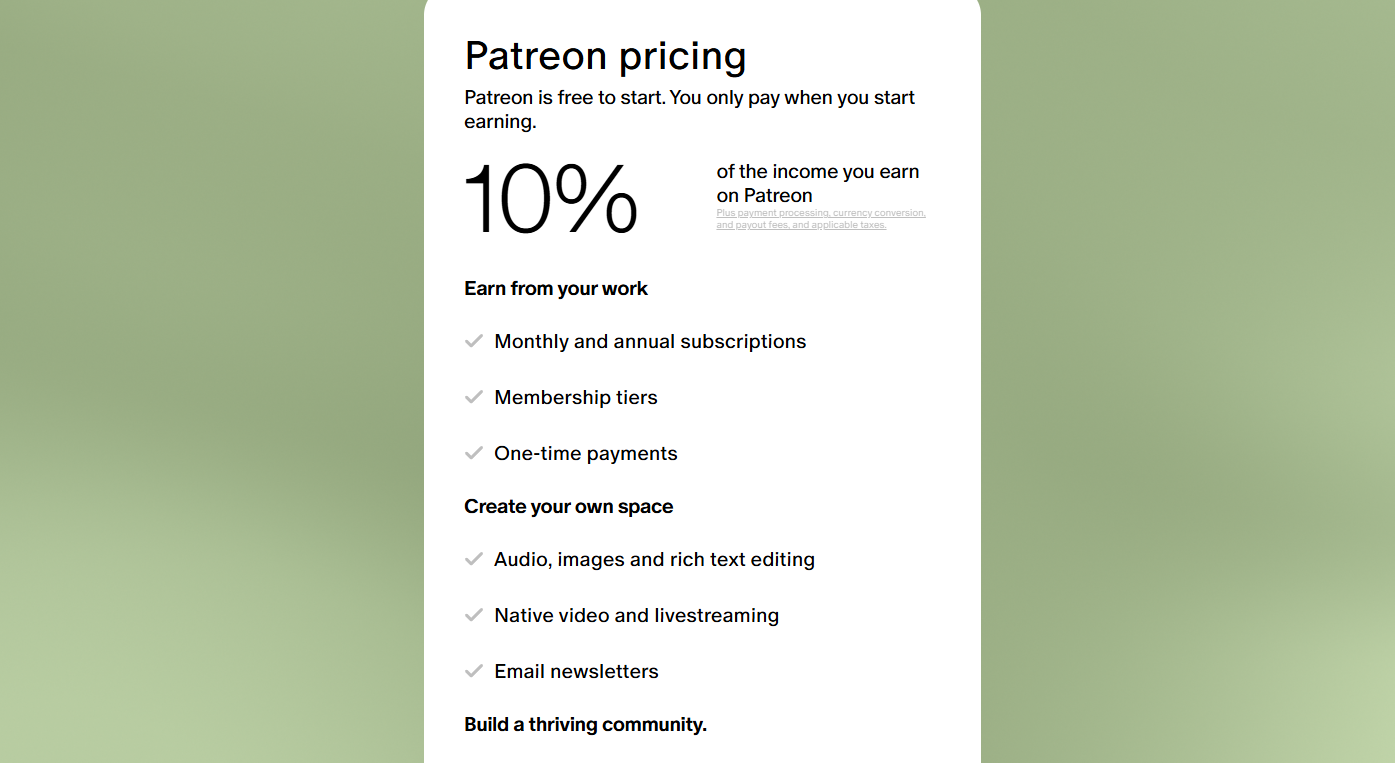
But 10% of your earnings is not the only cost. There are also payment processing fees. This is what the platform charges for handling payments every time someone pays you (usually around 2.9% + $0.30)
All the information I listed above might be a lot to digest, so I will try to paint you a picture.
Let’s say you’re a music coach who made $1,000 this month on Patreon.
Patreon will collect the
- Platform fee - $100
- Payment processing fee - $26.
Without including any additional taxes, Patreon will take $129.30. You’ll receive $870.
Now, let’s keep this same example with Easytools.
Our creator plan costs $59/month + only 2% transaction fees. This gives you access to all our features.
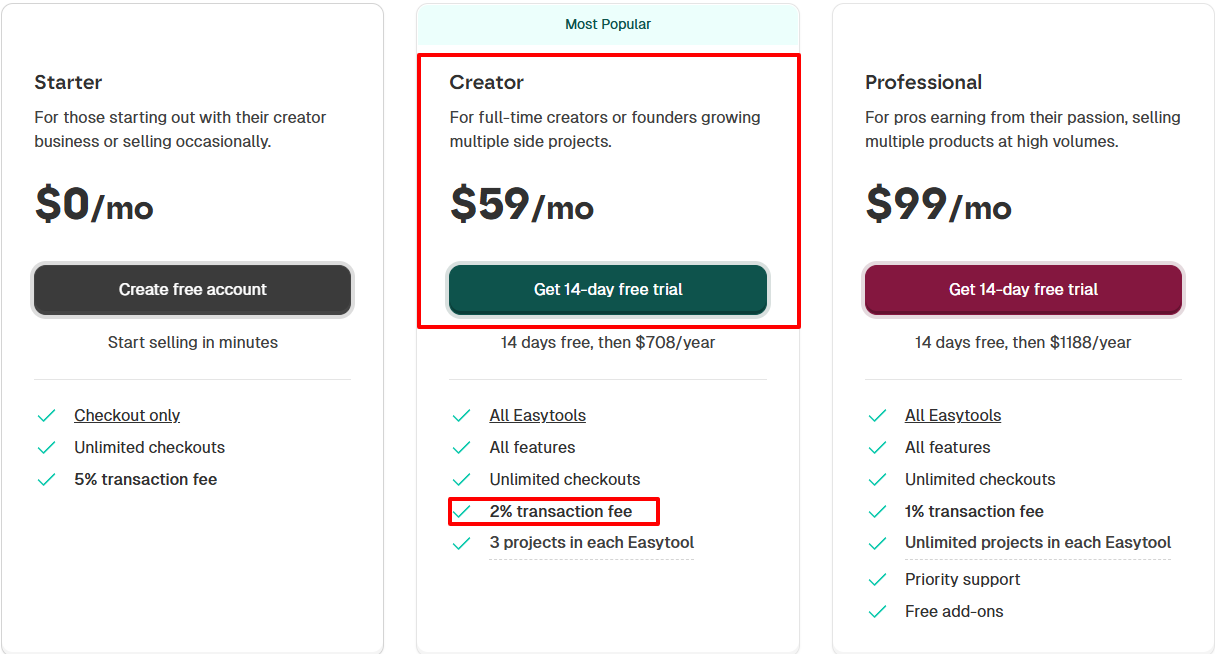
Following the same example, you will spend only $79 ($59 monthly plan + $20 transaction fees). Total profit: $921.
You save $56.
Let's compare that in a table.
With this table, you can clearly see that Patreon takes a lot from creators.
Now, ROI is simple for creators. It means:
- Is the tool easy to use?
- Can you sell different digital products?
- Do you save a lot of money after paying the platform fees?
4. Check workflow and integrations
Reading this last section means you’ve identified your business needs, considered essential features, and compared pricing plans.
Checking workflow and integrations is your last step, but certainly not the least.
You probably have an existing setup if you've been a creator for some time now. Like me, you want the new platform to connect easily with the current ones. They should share data.
For example, for email marketing and automation, your tool should integrate with Mailchimp, Hubspot, Pipedrive, and Zapier, to name a few.

Or perhaps you are more comfortable with a CRM like Airtable. If you run a community, check integrations with Circle or Discord.
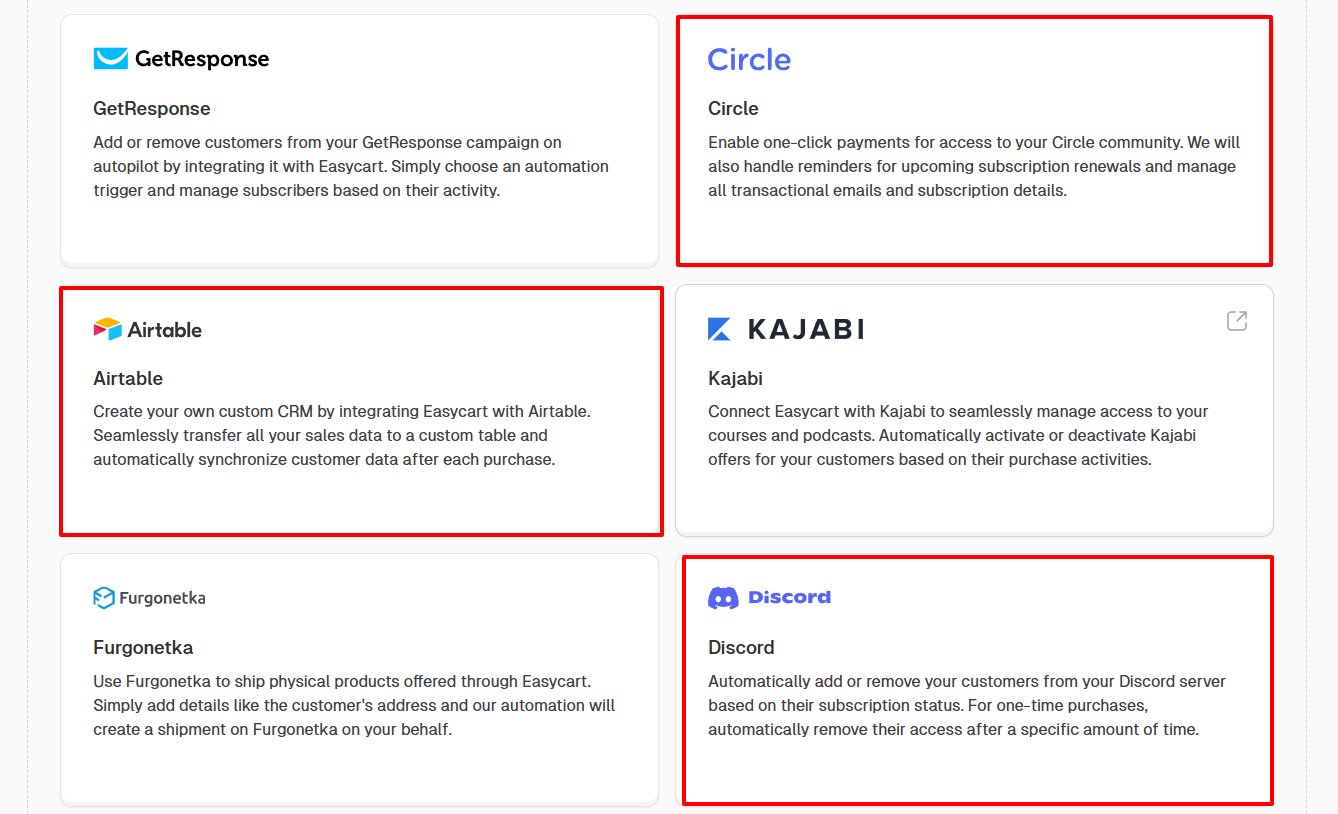
You can also connect with popular CMS like WordPress.
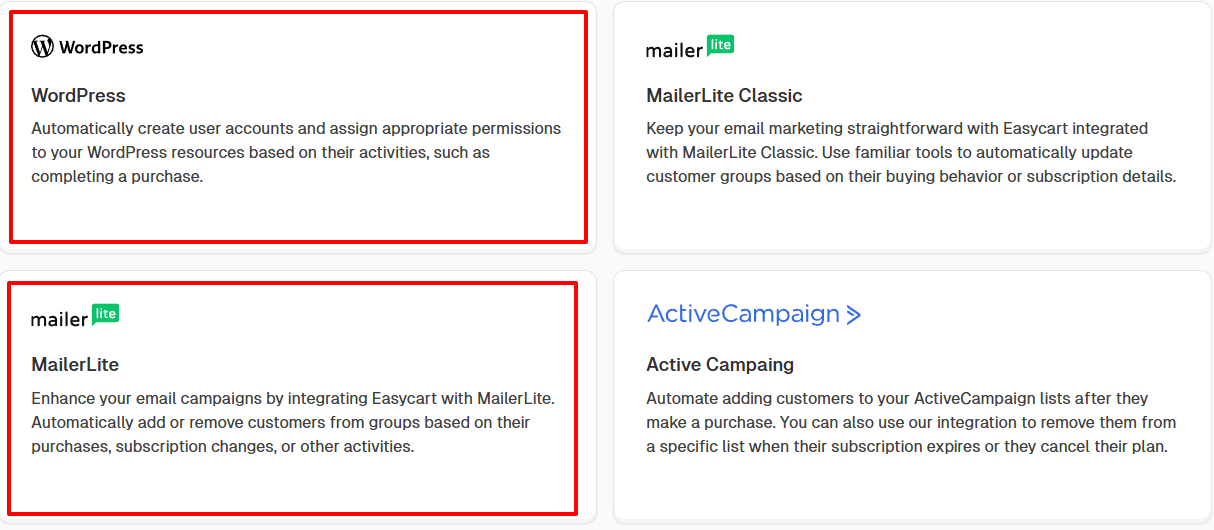
The right workflow and integrations will definitely boost your productivity. So, think about it before choosing your Patreon alternative.
Choose the best alternative to Patreon
I loved reviewing these Patreon alternatives. I share the best tools, without forgetting their cost.
You also learned the features that made me recommend them. And we finished by seeing how to choose a good tool.
One tool stands out with its ease of use, good ROI, and features. If you use Easytools, you'll launch and sell your next digital product quickly.
FAQs
What are the best Patreon competitors?
The best Patreon competitors are Easytools, Teachable, Podia, Skool, Memberful, and LearnWorlds. Online creators use them to build and monetize their communities and digital products.
Which Patreon alternatives offer the most cost-effective options?
The most cost-effective Patreon alternatives are Easytools, Ko-fi, Buy Me a Coffee, and Skool. All have plans that only take a transaction fee of 2% to 10%.
Does Patreon offer a free trial?
No, Patreon does not offer a traditional free trial. While you can create an account and explore its features for free, Patreon charges creators 10% of their monthly income. So, you can set up your page without paying, but you’ll only experience the full platform once you start getting paid subscribers.
Which Patreon alternatives are great for selling digital products besides courses?
The five best Patreon alternatives for selling digital products are Easytools, Memberful, Podia, Teachable, and Skool. These tools let you sell e-books, podcasts, webinars, courses, memberships, and subscriptions, to name a few.
Related articles
Ready for more? Check out these related articles that will keep your momentum going. They’re packed with easy-to-follow tips and tricks to help you supercharge your digital goods business.
Take it easy with Easytools
Focus on creating, and let Easytools handle the behind the scenes work.





